The Forecast
Art for the people
On workdays, Bonaventure Soh Bejeng Ndikung, the new director and chief curator of Haus der Kulturen der Welt, cycles from his home in Neukölln to the office in Berlin’s Tiergarten park. “Every time I cycle down Karl Marx Allee, I cross different geographies,” says the Cameroon-born curator of his commute. “You can see the people and hear the languages change when you cross. This institution must belong to these people,” he says, turning his attention back to the museum he’s in charge of.
Since taking up his post in January 2023, Ndikung and the team have made huge strides to bridge the gap between the German capital’s sometimes high-minded art institutions and the tastes and desires of the 170-odd nationalities living here. Instead of just presenting art and ideas to the Berlin public, the Haus (known to Berliners as “HKW”) has created a dialogue where exhibitions, performances and events try to properly connect people with the far-flung topics it touches. “The idea was to create an institution that reflects the different kinds of people who live here,” he says in his trademark baritone.
When O Quilombismo, a 68-artist exhibition, opened in spring 2023, the mission became a little clearer and offered a taste of Ndikung’s tenure to come. At the three-day open-house extravaganza, art lovers thronged HKW, where art adorned exhibition spaces as well as corridors, the atrium and even the building’s auditorium. Despite the serious subject matter (“quilombos” are self-governed communities founded by enslaved people in Brazil) it was the sense of levity and excitement – rather than sombre soul-searching – that was inescapable. Visitors of all ages hung out in a flag-festooned outdoor pavilion where a “kids’ disco” allowed youngsters to have fun while their parents took in the art. Sculptures, flags and installations by the likes of Ghanaian art star Ibrahim Mahama dotted the grounds and added colour and vivacity to proceedings.
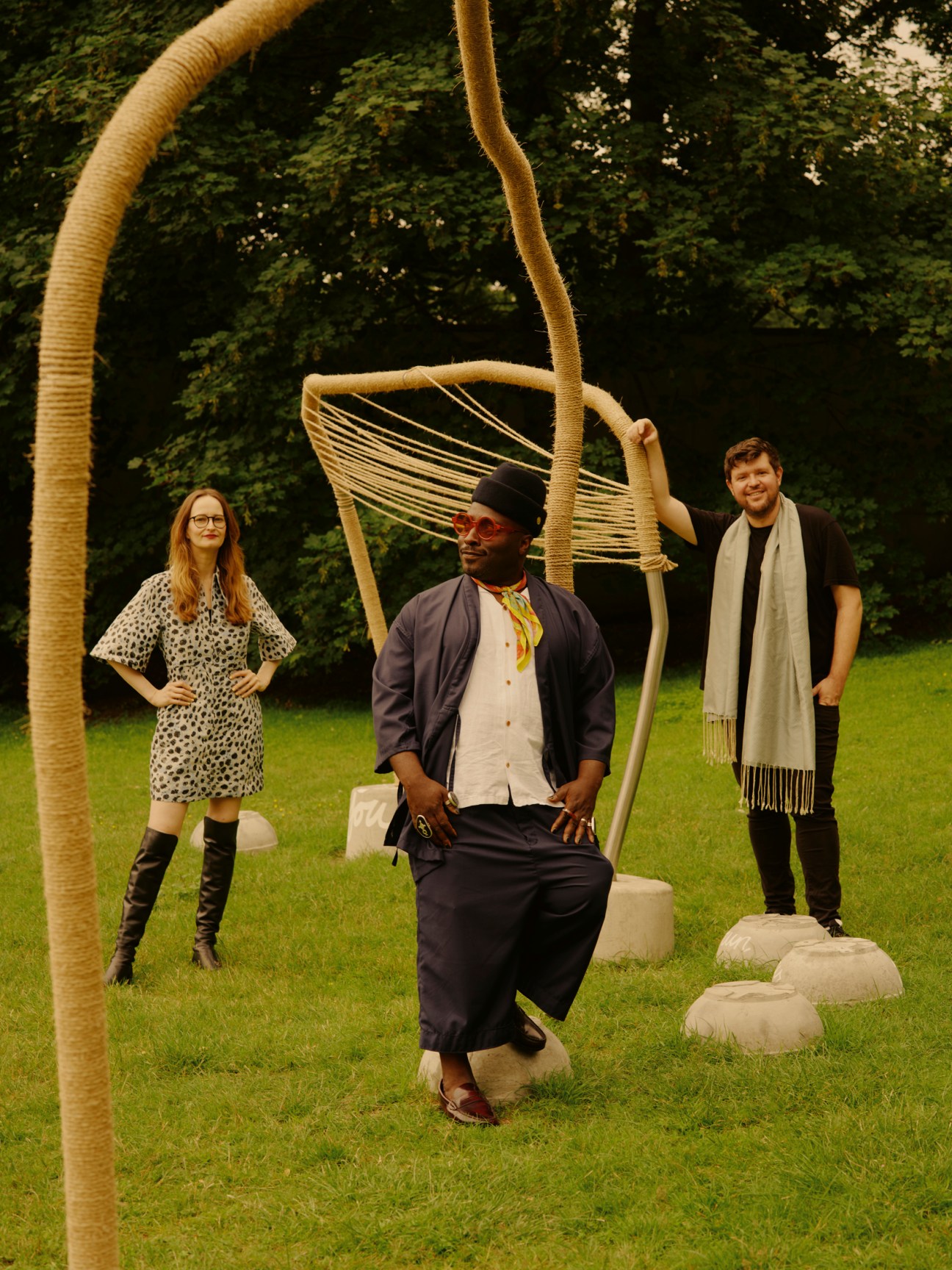
On the flat parts of a sweeping roof (Berliners have long referred to the oddly-shaped building as “the pregnant oyster”), food stands served Thai, Cameroonian, Nigerian and other specialities to the sounds of live bands from across Africa and beyond. Above it all, three flags flew in black, red and green stripes, each emblazoned with a letter: together they read ddr, an acronym standing for “decarbonise, decolonise, rehabilitate”: so far so serious? Perhaps, but this pointedly also stands for “Deutsche Demokratische Republik”, the name of the former East Germany. Fluttering close to the Federal German Chancellery and parliament buildings, the flags were artist Olu Oguibe’s poignant nudge to audiences to radically rethink the notion of Germany’s own divisions and all it’s been through.
The building was erected in the 1950s by the Americans, who later donated it to the West German government. In 1989 it became a cultural centre. In recent years the space attracted a cerebral set including exhibitions on the cia’s involvement in art and conferences on art-world topics such as the Anthropocene. Ndikung’s tenure, however, meant broadening that definition of art. “Berlin is one of the most unique cities in the world,” says senior curator Cosmin Costinas, who moved to Berlin from Hong Kong to work with Ndikung. “Because [the layers of migration are] so recent, the connections between people and their countries of origin are deeper and more alive.”
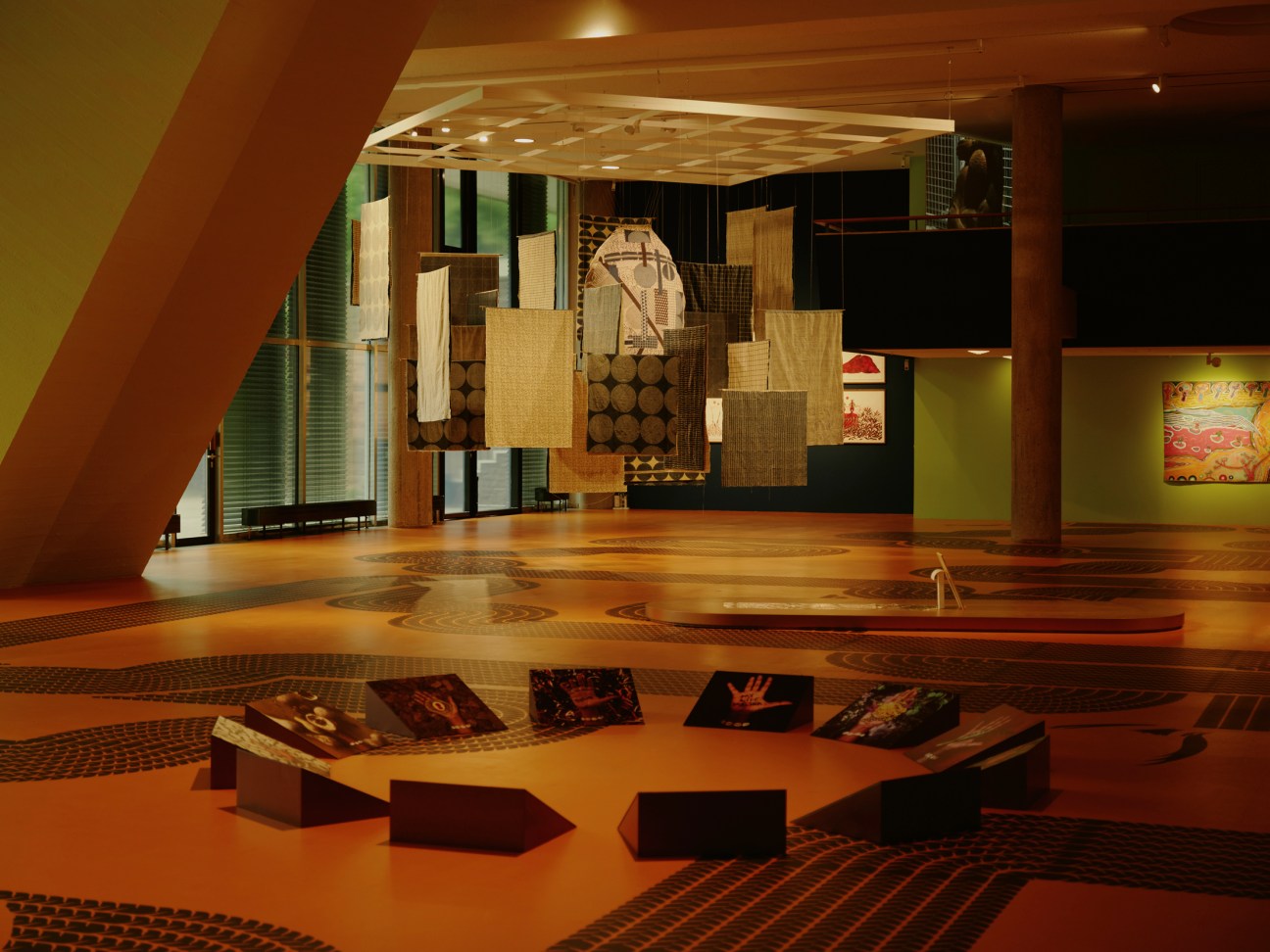
HKW’s agenda is in stark contrast to conventional art-historical institutions – especially the sometimes-criticised Humboldt Forum, another Berlin institution dedicated to non-European objects and art that opened in the summer of 2021. The Humboldt Forum, like many museums today, is in flux, paralysed by questions of provenance, power and some darker parts of Germany’s history. It holds the state ethnological collections, including the Benin bronzes, which Germany has begun to return to Nigeria. While the hkw has its own history, the curators and staff aren’t looking back; they’re trying to start a new chapter including renaming all the public spaces after women who worked, often invisibly, to improve lives. One of the ponds in front of the building is now named after Chilean folklorist Violeta Parra and the hkw offices are named after Senegalese women’s rights campaigner Awa Thiam, to name just two.
Other changes were internal: instead of hiring a large staff on the art world’s precarious year-by-year contracts, Ndikung – Berlin’s first non-white museum director and a biotechnologist by training – offered longer contracts and fuller benefits but to fewer team members, many of whom hail from Africa and South America. East Germany-born Henriette Gallus is deputy director, a unique position in a system that still generates star museum directors (“No one can do this alone,” she says). After a long research phase beginning when Ndikung applied for the job in 2021 (a big decision after founding and operating Savvy Contemporary, a wildly successful project space, for more than a decade), the two restructured the HKW during a five-month closure. Teams now work across artistic disciplines, their members have more agency and the opportunity to combine family and work is not just a perk but a priority.
Forthcoming events will tackle the idea of the “Global East”, including Germany’s own past. But the HKW wants to generate some intrigue, fun and curiosity rather than shutting down conversations or tying itself in knots trying to signal its own virtue. “We want the audience to understand that this is about them: about their daily life, their understanding, love, passion and tears,” says Gallus. Just two weeks after HKW reopened, O Quilombismo was already the one of the most-visited exhibition the space has hosted in the past 25 years. The visitors kept coming – many more than once – and often for hours. The opening weekend’s kids’ disco was such a success that parents asked for more; HKW now runs it twice a month. “People feel like they’re a part of it,” says Gallus. “That’s the magic of us with the audience. Without them, these would be empty halls.”
Greek revival
Every autumn the 21km stretch of beach leading northwest from Athens to the city of Elefsina hosted a set of ancient rites intriguingly dubbed the Great Mysteries of Eleusis. Initiates, sometimes thousands at a time, take part in the secretive nine-day ritual – including toasting the dead and some walking – that was once said to promise eternal happiness in the afterlife. While a visit today might not offer a ticket to a happily-ever-after place, Elefsina (formerly Eleusis) is a great example of how being nominated a European Capital of Culture can help smaller cities jostle for cultural prominence at home and abroad.
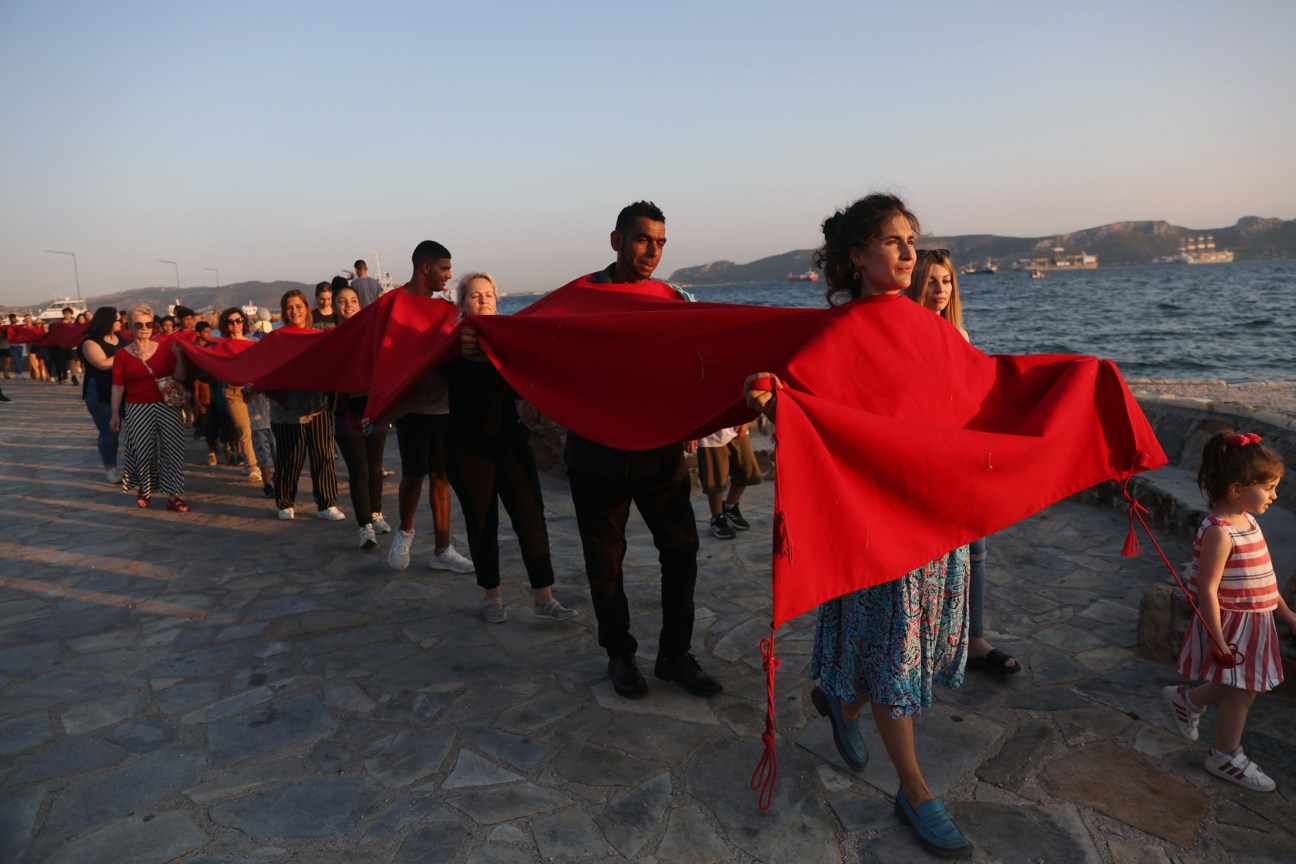
Since its ancient heyday, the hills and olive groves have been cut through by a six-lane highway dotted with petrol stations, fast-food joints, junk yards and refineries that obscure the view of the sea from the Bay of Elefsina. The road is at once one of the most sacred of antiquity – walked by Plato, Socrates and several Roman emperors – and an industrial backwater that’s still easily missed by holidaymakers and commuters shuttling back and forth to the Peloponnese.
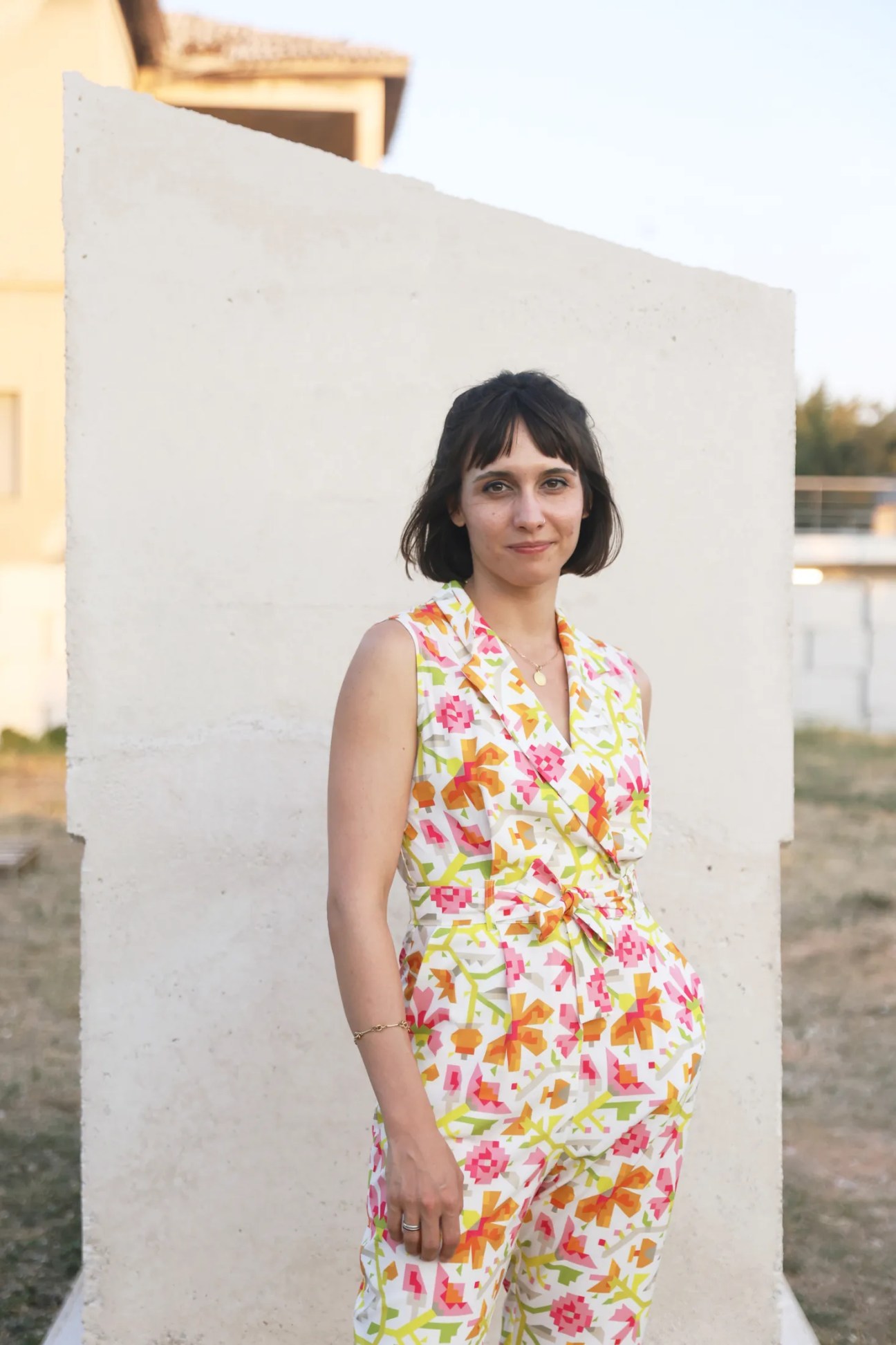
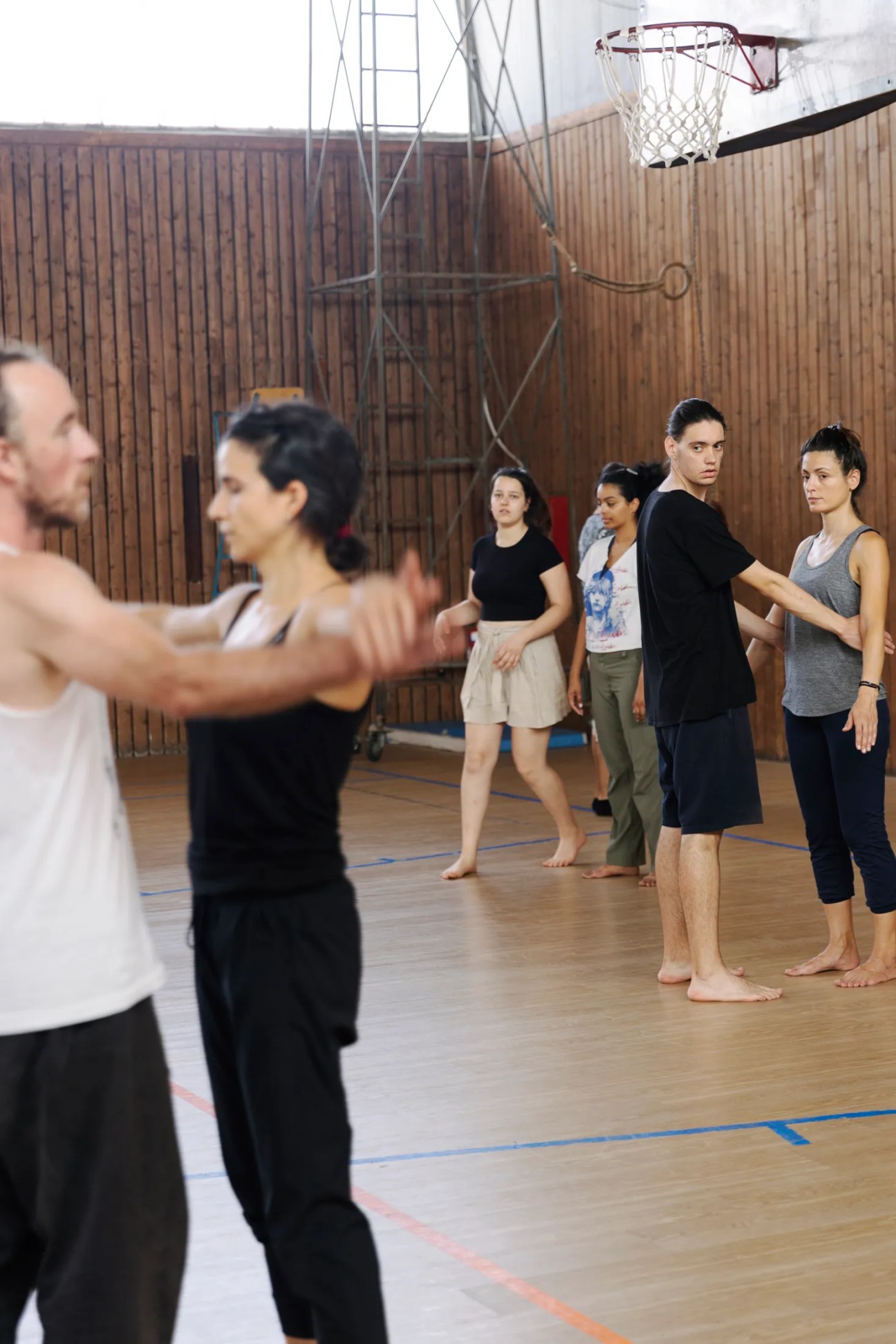
Monocle exits the motorway on a fair Friday and finds shade in a courtyard of a disused olive-oil mill close to the waterfront. It is the setting for an exhibition called Elefsina Mon Amour: In Search of the Third Paradise. “For Athenians, Elefsina has long been terra incognita,” says curator Katerina Gregos. Soon a well-heeled crowd of locals and Athenians fill the courtyard to toast the opening. At sunset they’re whisked off by bus to a two-hour dance performance set against the rusting hull of a stranded ship. These are just two events that have happened as part of the city’s stint as a 2023 European Capital of Culture; many here hope that this will help get this city back on its feet.
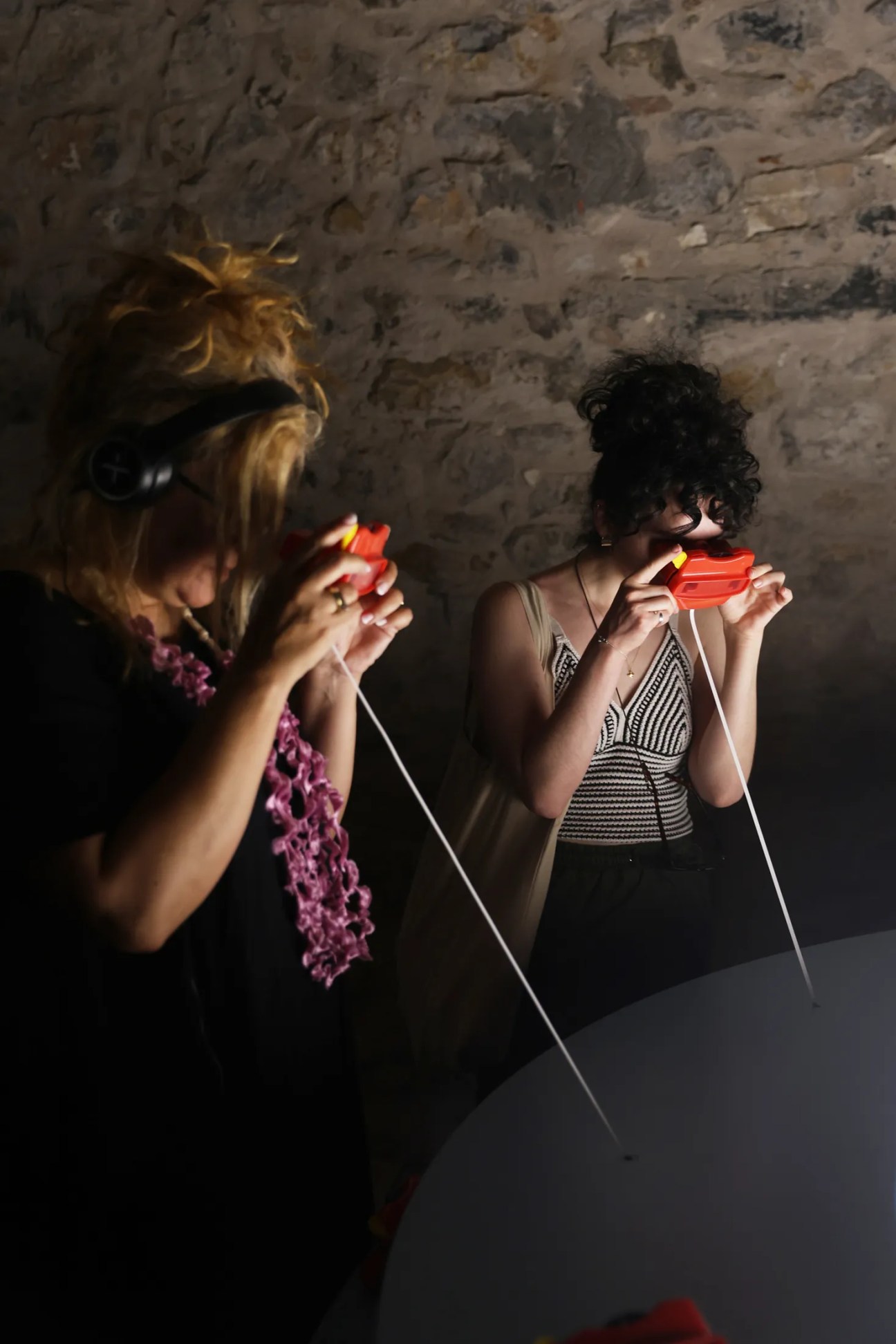
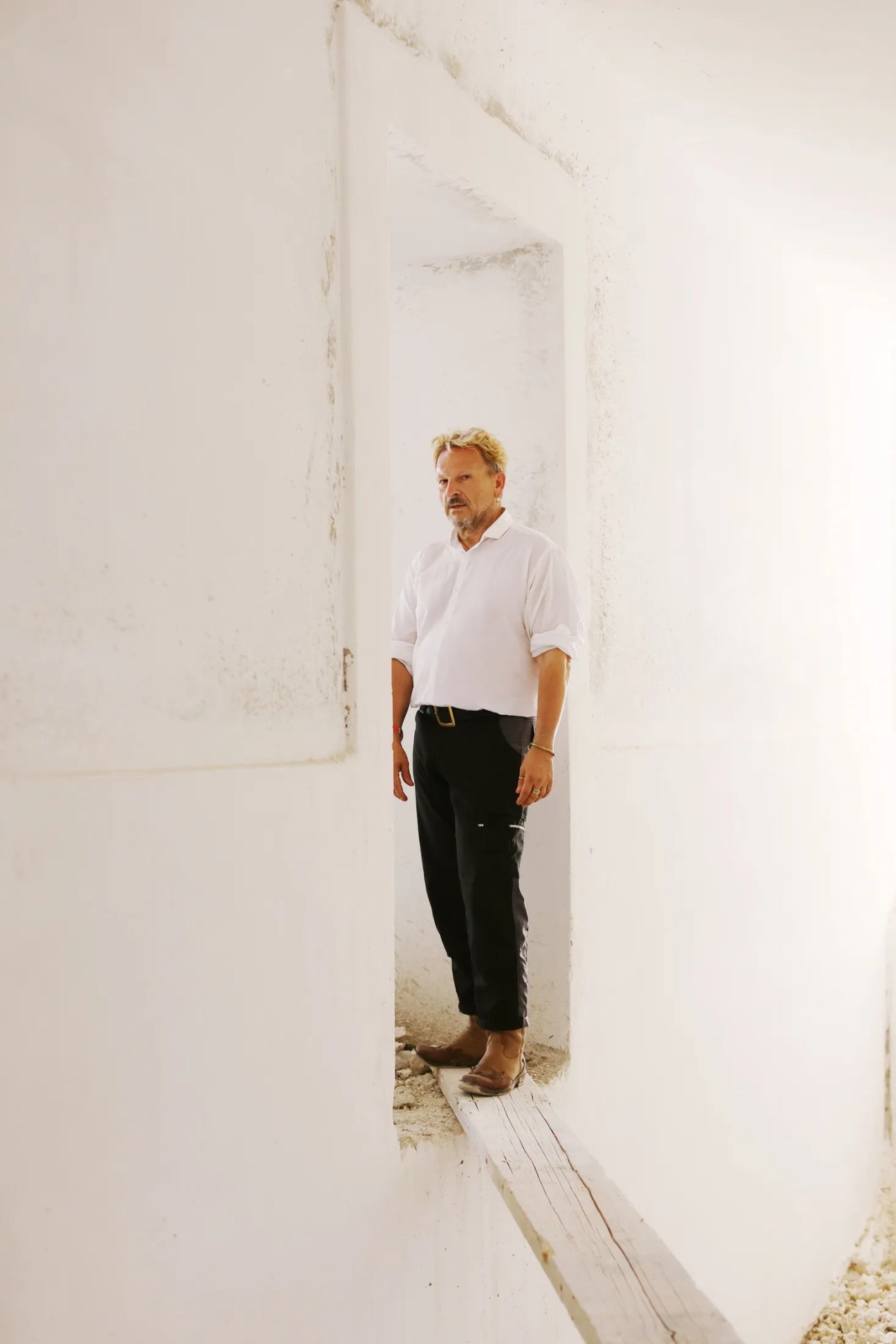
This is the fourth time that Greece has hosted a European Capital of Culture, starting in Athens in 1985. The story goes that Melina Mercouri, actress-turned-minister of culture, came up with the idea while stuck at the airport with her French counterpart Jack Lang in the early 1980s. Mercouri pitched it to the European Commission and the EU obliged by footing the bill. The blockbuster first edition included a 10-hour play and shows by German choreographer Pina Bausch, Swedish director Ingmar Bergman, jazz from Miles Davis and plenty of fireworks. In the following years, successive European cities took their turn in the limelight by hosting the cultural festival.
The definition of what makes a European Cultural Capital has shifted over time. Apart from awarding the title, the EU’s support is mostly of the moral kind and funding is limited to a €1.5m Melina Mercouri Prize. Since 2000, multiple cities have been appointed each year based on formalised selection criteria (the rotation of host countries is set by the EU parliament and cities are picked through national competitions). Instead of established cultural centres such as Athens or Amsterdam, the priority has shifted to more peripheral, post-industrial cities that could use a lift: think Timisoara in Romania and Veszprém in Hungary. Even so, many were surprised when, in 2016, Elefsina was awarded the title for 2021 (postponed to 2023 due to the coronavirus pandemic). With just 20,000 inhabitants, it’s the smallest European Capital of Culture to date and, while the archaeological site at its centre is famous among classicists, even some locals were left scratching their heads at what culture would be on offer to visitors.
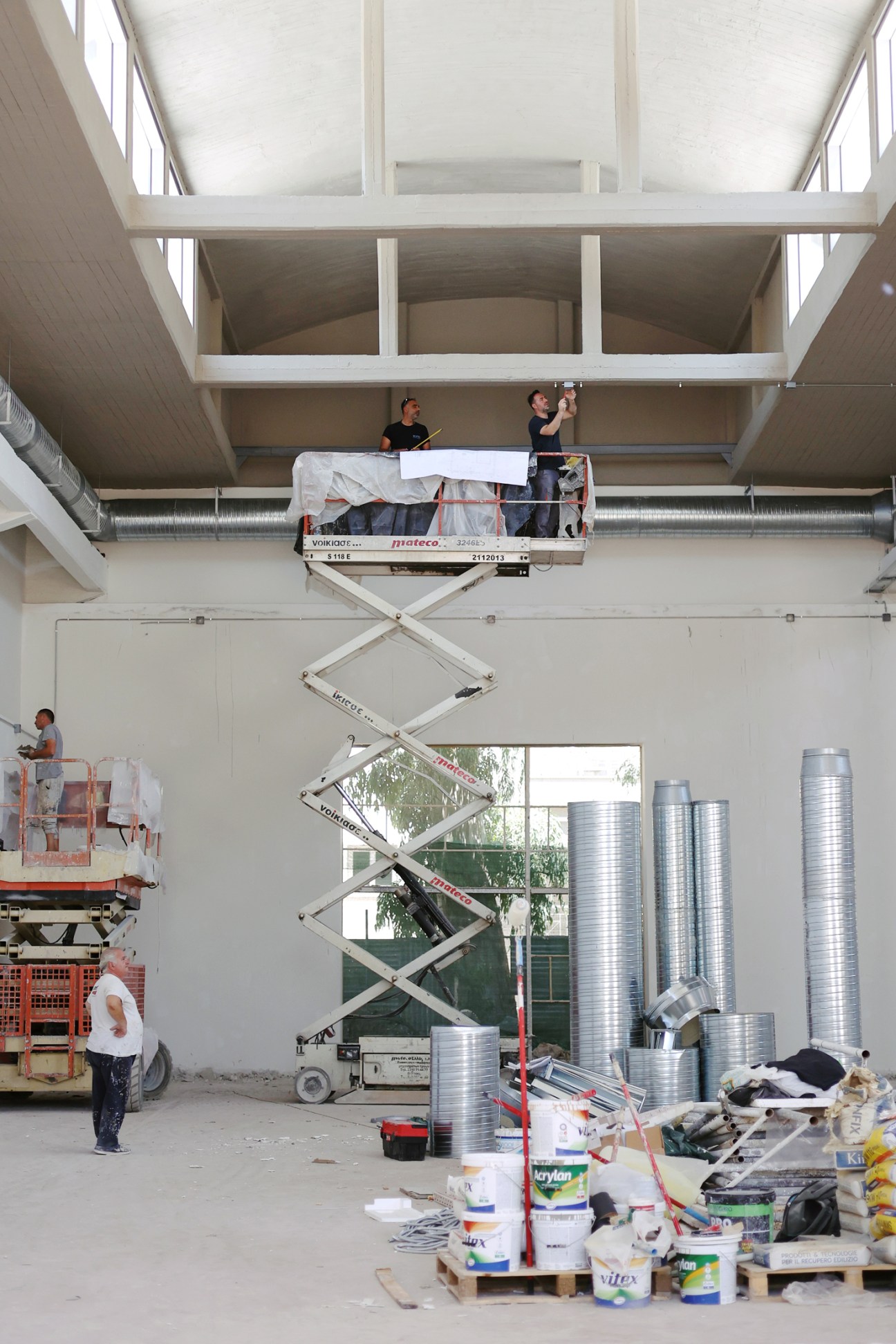
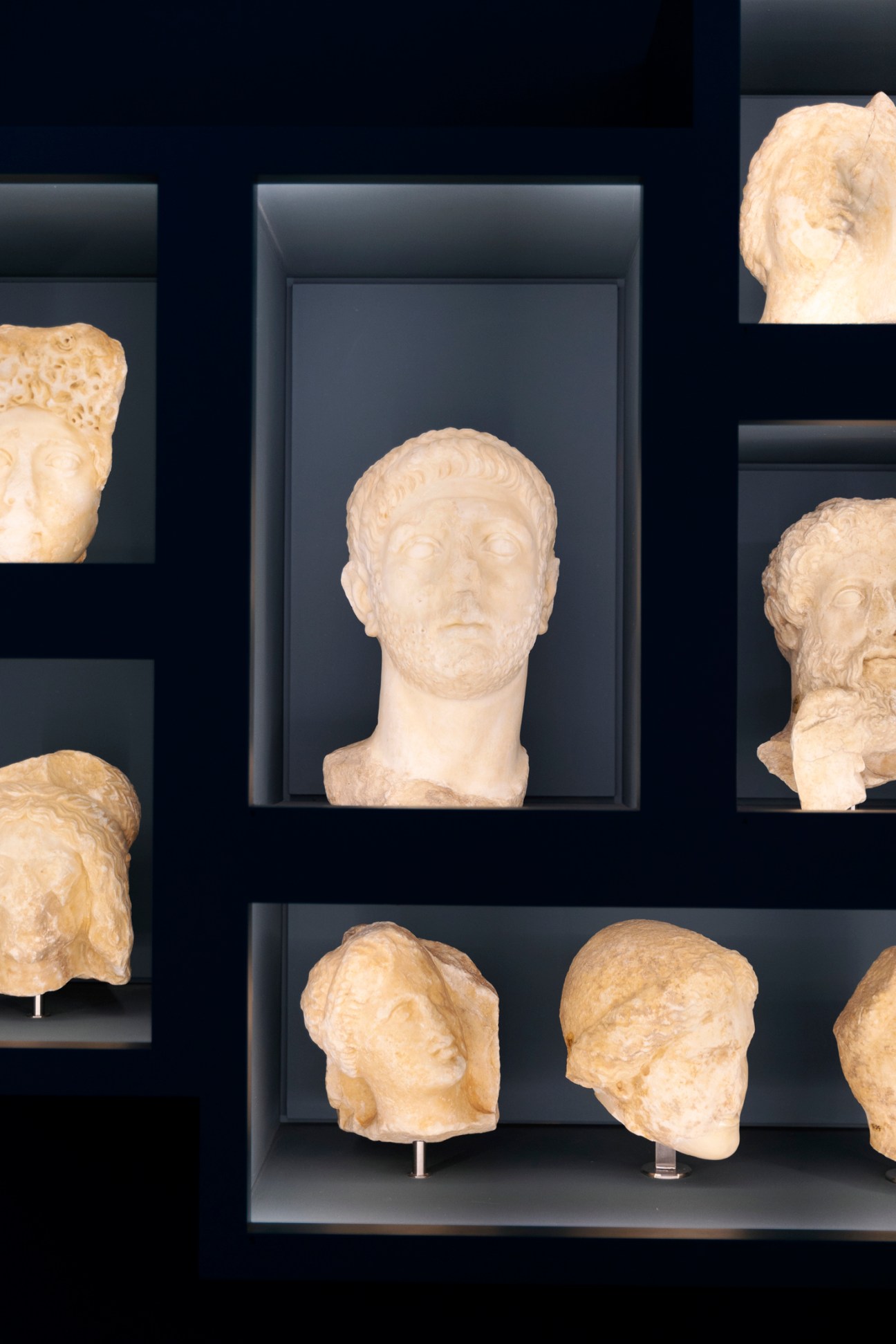
If you walk along Elefsina’s central thoroughfares, you’ll see some sweeping contrasts: on one side there’s the ancient Well of Demeter, where Homeric myth puts the harvest goddess mourning her lost daughter Persephone, and on the other is a gaming parlour with street-side slot machines. The top stay is the city’s sole four-star hotel and the only cultural venue before the festivities was a rickety outdoor amphitheatre. “There was no infrastructure,” says Michail Marmarinos, artistic director of Eleusis2023. “It was a huge challenge.” Marmarinos, one of Greece’s foremost contemporary playwrights, stepped in as artistic director in 2020. He secured a postponement and herded the whole organisation into action. Marmarinos’ theme became “Mysteries of Transition”, a remix of the city’s ancient claim to fame and a hope that a new procession might spur its cultural growth beyond its Capital of Culture tenure.
The transition that Elefsina is undergoing is a version of the story shared by many European Cultural Capitals: of reviving a city built and then abandoned by heavy industry. At the turn of the 19th century, Elefsina’s shore was lined with shipyards, refineries and soap and cement factories. Immigrants from all over Greece and the Balkans arrived in search of work. In the 1970s the factories spewed so much ash into the air that Elefsinians couldn’t even hang their laundry outside. The sea was more black than blue.

“This was really a scarred landscape, in many senses of the word,” says Gregos. For Elefsina Mon Amour, she invited 16 artists from nine countries to create newly commissioned pieces (a key goal of the European Capital of Culture is to put artists to work). The exhibition is spread across three dimly lit factory halls. The show’s title is a reference to Hiroshima Mon Amour, a 1959 film by Alain Resnais. “Only the difference is, the catastrophe [here] did not come from nuclear war but from industry,” says Gregos.
The mystery of Elefsina
Elefsina lies on the Thriasio plain, which grew the wheat that fed ancient Athens. At about 600 bce, the cult of Demeter started holding annual rites around harvest season, which grew to become the most important in the Greek and later Roman Empire (nobody knows exactly what they involved thanks to a death penalty-enforced antecedent of “what happens in Vegas”).
“The city offered the term mysteries – and art itself is a mystery and the goal of a European Culture Capital is transition,” says artistic director Michail Marmarinos. Each element of the festival was titled “Mystery”, followed by a number as a nod to the ancient intrigue.
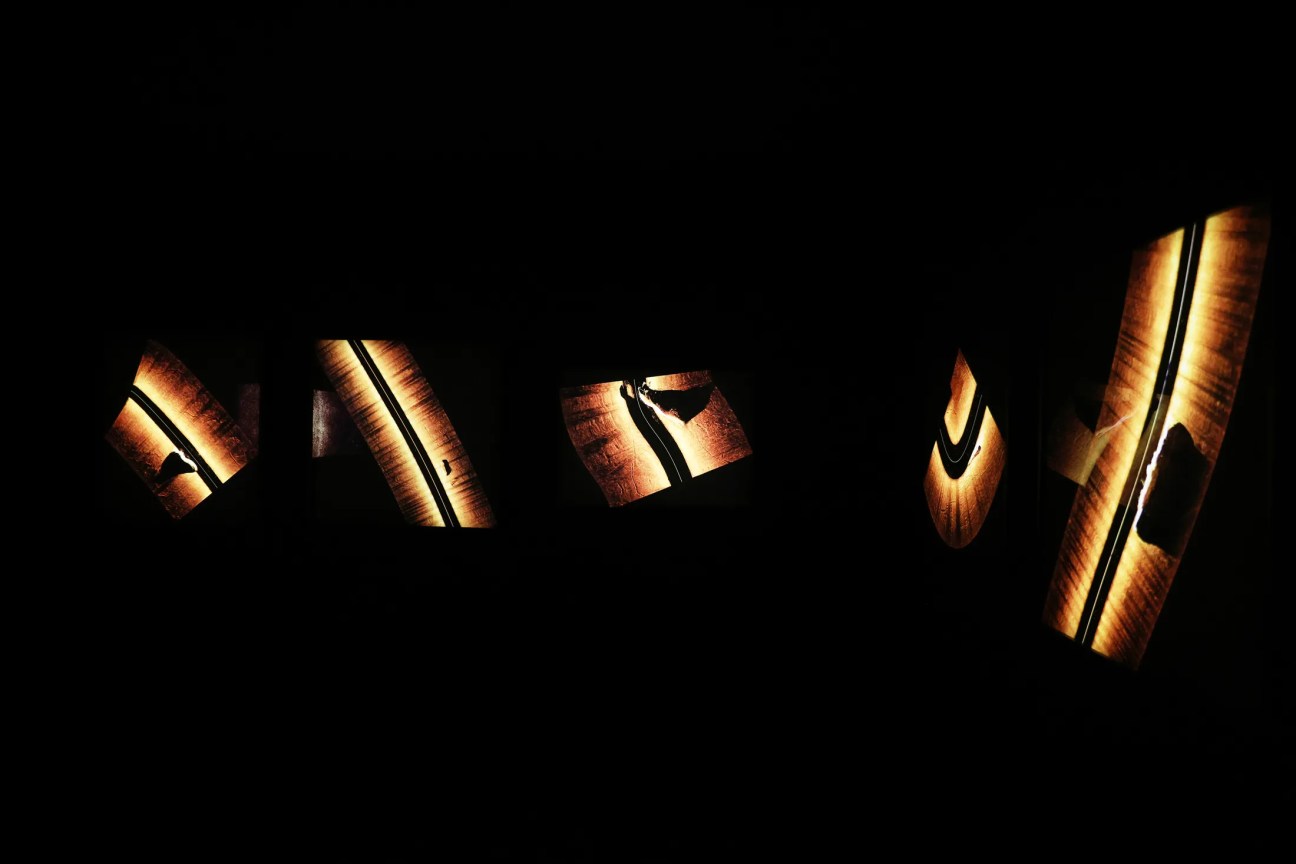
Marina Gioti spent more than three years on an artwork called “Sounding the Silent World” for which she mapped the shipwrecks in the Elefsinian gulf using sonar. The resulting abstract, amber images are mesmerising and highly political: Gioti was forbidden from publishing the names of the 12 ships she found decaying on the seafloor. The bay is still strewn with abandoned ships but the clean-up of the sea started in the 2000s and now locals happily jump in for a swim.

Artistic duo Joanna Tsakalou and Manos Flessas created “Hadal Zone”, a visual opera in five acts, which leads up to the top of an outdoor amphitheatre, where visitors are serenaded while taking in Elefsina’s industrial horizon through binoculars. The vista is memorable. Just down the coast, one of the largest oil refineries in the Balkans shoots up a flame every few seconds.
As night begins to fall, Monocle returns to the Old Oil Mill. “It looks like Manhattan,” says Yorgos Skianis as he looks out over the jumble of factory buildings. Skianis, an Elefsina local, organised the Aeschylia Festival that connected visual artists with factory spaces to exhibit their work long before the Capital of Culture crowd showed up. “We showed people that Elefsina can produce more than just pollution,” he says, drawing attention to the fact that Capitals of Culture need backing after the banners and EU funds have been and gone. He tells Monocle about growing up in the city when it wasn’t possible to access the waterfront at all. “We Elefsinians used to avoid saying where we were from. There was a stigma,” he says as the venue’s DJ strikes up and the crowd begins to move in rhythm. “They are proud,” he adds, gesturing to the people and raising his voice with the crescendo of the music. “Today nobody pretends not to be from Elefsina.”

Monocle’s Small Cities Index
Tired of the bustle of the big city? With the pace of life ever increasing in our always-on global capitals, we wouldn’t be surprised if you’re enticed by the idea of moving somewhere smaller – a relaxed, easygoing environment where things can unfold more gently. Unfortunately, such a move often has its downsides, from limited business opportunities and small social circles to poorly connected airports (if there even is one).
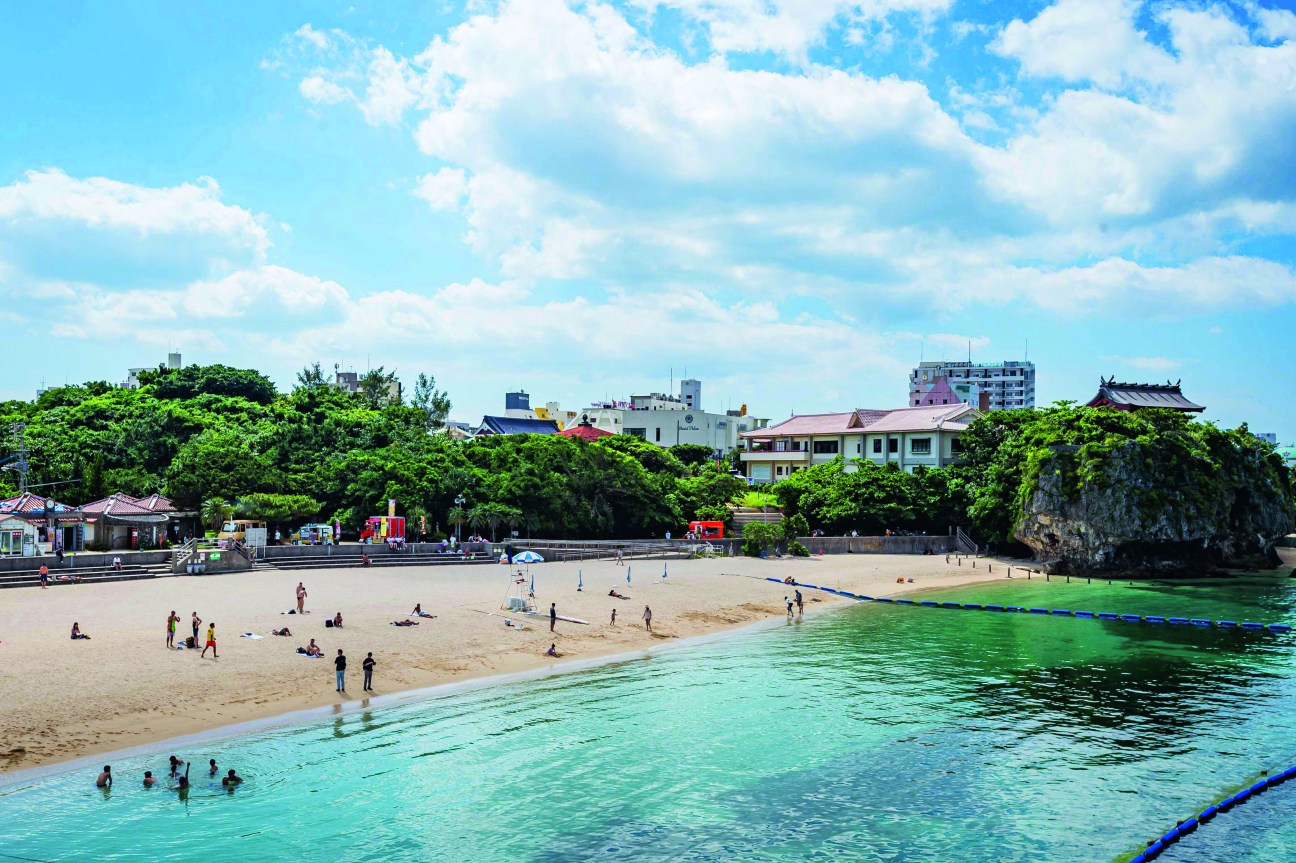
But what if there were pockets of urban life with populations of fewer than 350,000 inhabitants that weren’t afflicted by such problems? It’s these places that we’re highlighting in the fifth annual Monocle’s Small Cities Index. Safety, proximity to nature, an economy that supports new businesses and strong creative and hospitality sectors were among the key criteria when it came to identifying our top-25 picks for 2024. The resulting selection also includes a “best for” guide, offering some inspiration for those who need a little nudge before considering a move.
Here, we sip a vermut on the seafront of an overlooked gem in northern Spain, enjoy the catch of the day in a Japanese island city and luxuriate in the lush gardens of a former imperial outpost in Brazil. You could too.
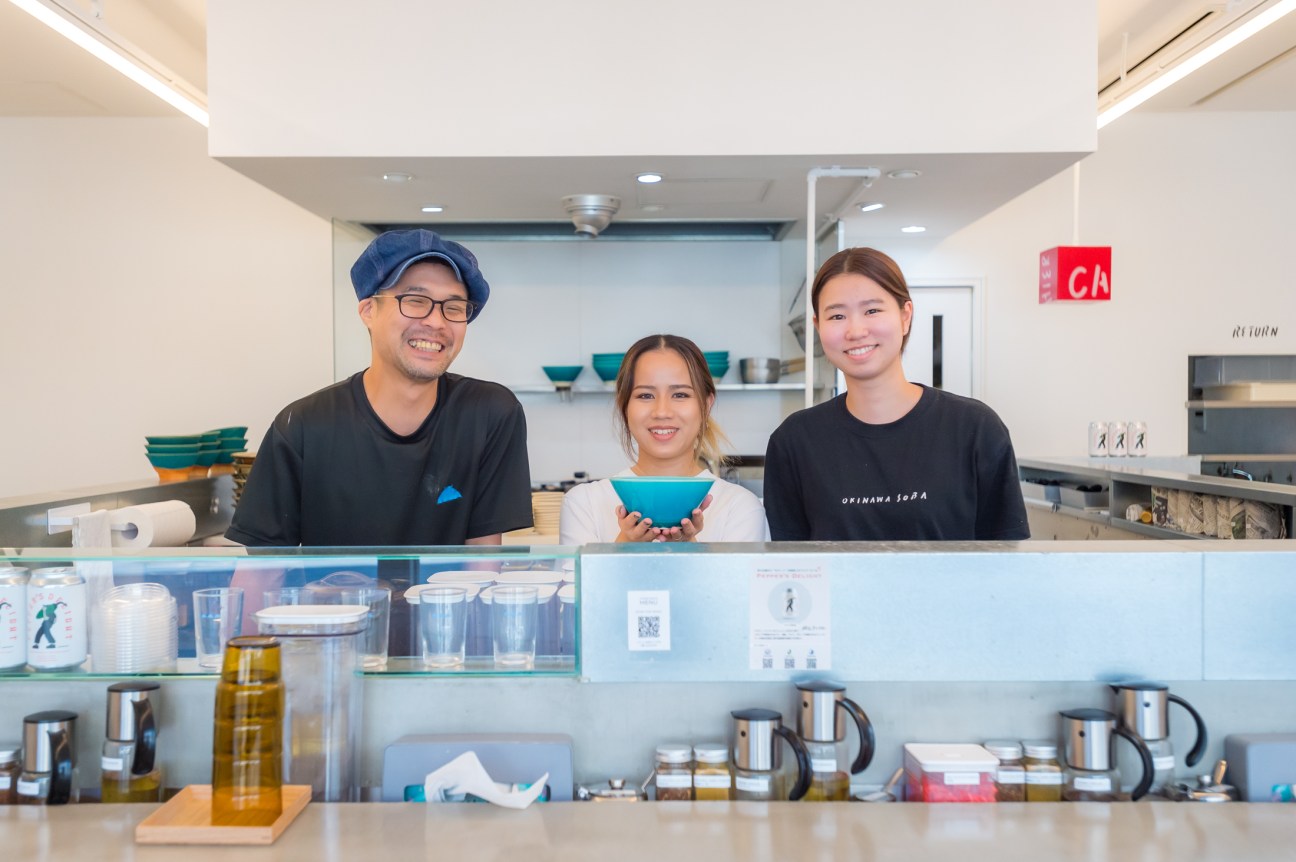
1.
Naha
Japan
Best for island life
Increasing numbers of creatives and entrepreneurs have been returning or moving to the city of Naha in recent years. Among its draws are its fusion of cultures, a warm climate and all the perks of living on a rocky outcrop.
As soon as you step out of Naha Airport, you sense that this is Japan – but not as you know it. The air is more humid, the plants more tropical. The taxi driver is likely to be sporting a floral shirt. And then there’s the vibrant, blue sea. With a population of about 320,000, Naha is the capital of Okinawa prefecture, a string of islands at the southern end of the country that almost reaches Taiwan.
Okinawa’s history is evident today in its distinctive culture that fuses Japanese elements with those of the historic Ryukyu Kingdom, which was independent until the late 19th century, as well as a sprinkling of Americana. After the Second World War the US held onto Okinawa until 1972. American brand names linger – such as Jimmy’s, which has been baking cakes here since 1956 – as does a taste for Spam. Visit a market, however, and you’ll see the fresh food that has helped to make Okinawans the longest-lived in Japan: goya gourds, winter melons, sea grapes and a selection of fish unfamiliar to cooler waters.

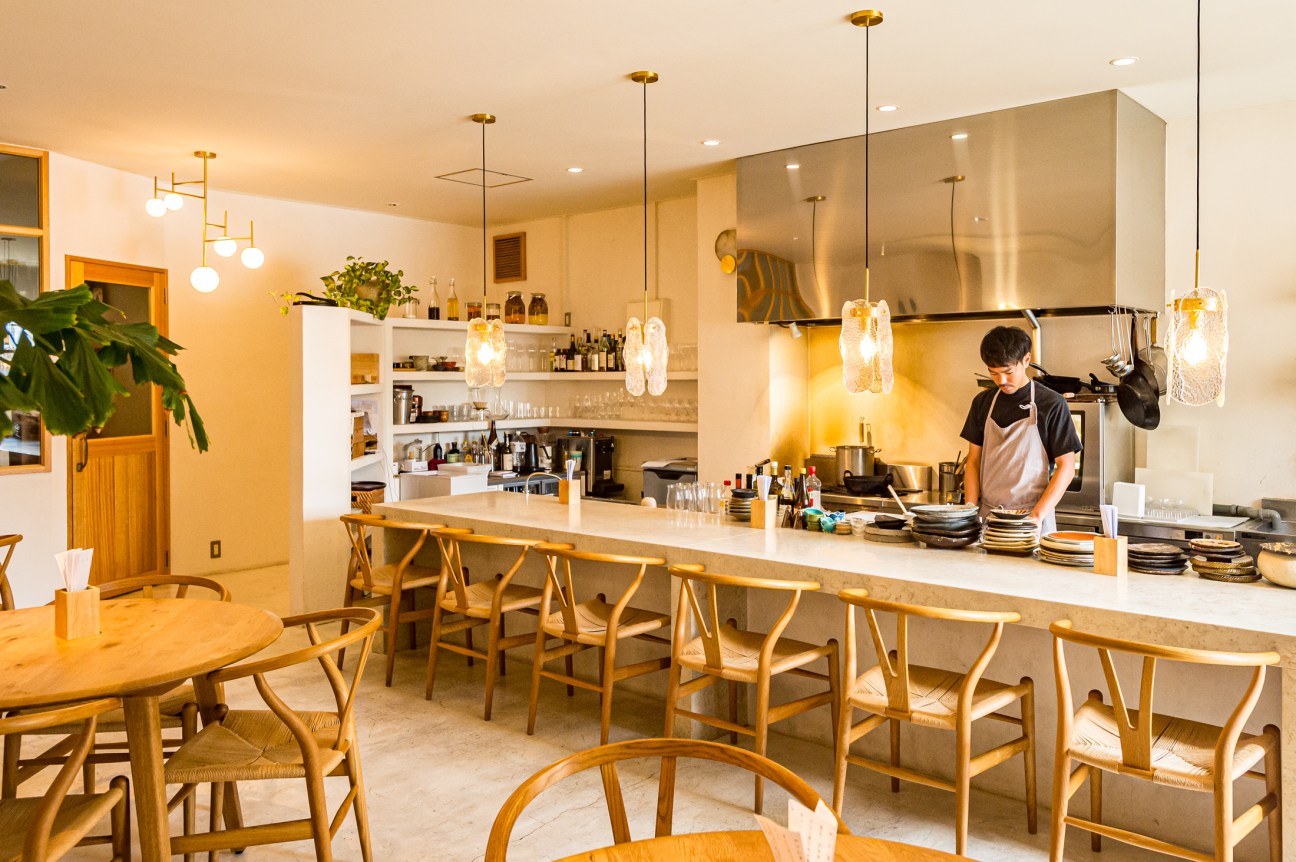
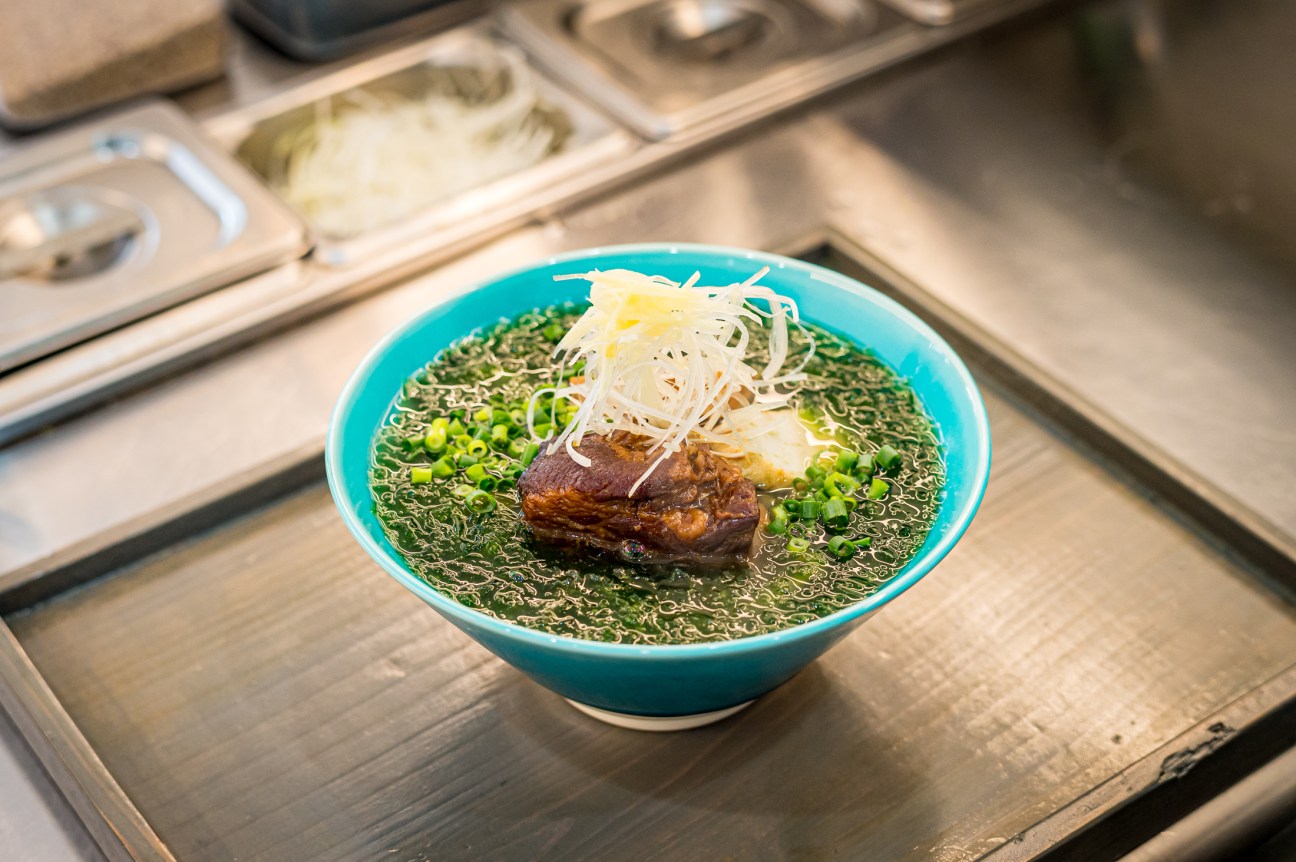
The pace of life in Naha is slower than on the mainland. Some start their day with a dip in the sea at Naminoue beach. With its leafy streets, concrete modernism and small restaurants, the city is a pleasure to walk – unusual in car-centric Okinawa. Tatsuya Irei, who was born here, recently moved back from Tokyo to open Wayobu Yoshi restaurant in Tsuboya, Naha’s pottery district. “I wanted to raise my family in my hometown,” he says. “Children are too constricted in big cities.” He buys fish and fresh food from markets outside Naha in Itoman and Yonabaru; on days off, his family hits the beach. “Okinawa is compact. I can hop in the car and be in Nago in the far north in an hour.”
Nami Makishi, another returnee, co-founded interiors studio Luft in Tokyo but came back to Okinawa with fellow designer Chikako Okeda. “We love the diverse mix of native Okinawans, people who have moved here from other prefectures and tourists,” she says. Multiple flights connect the city to Tokyo from morning to night and Taipei is only 90 minutes away. Tourists throng Kokusai Street and Makishi market but residents go about their business with good cheer. “The flow of time is just different here,” says Makishi.
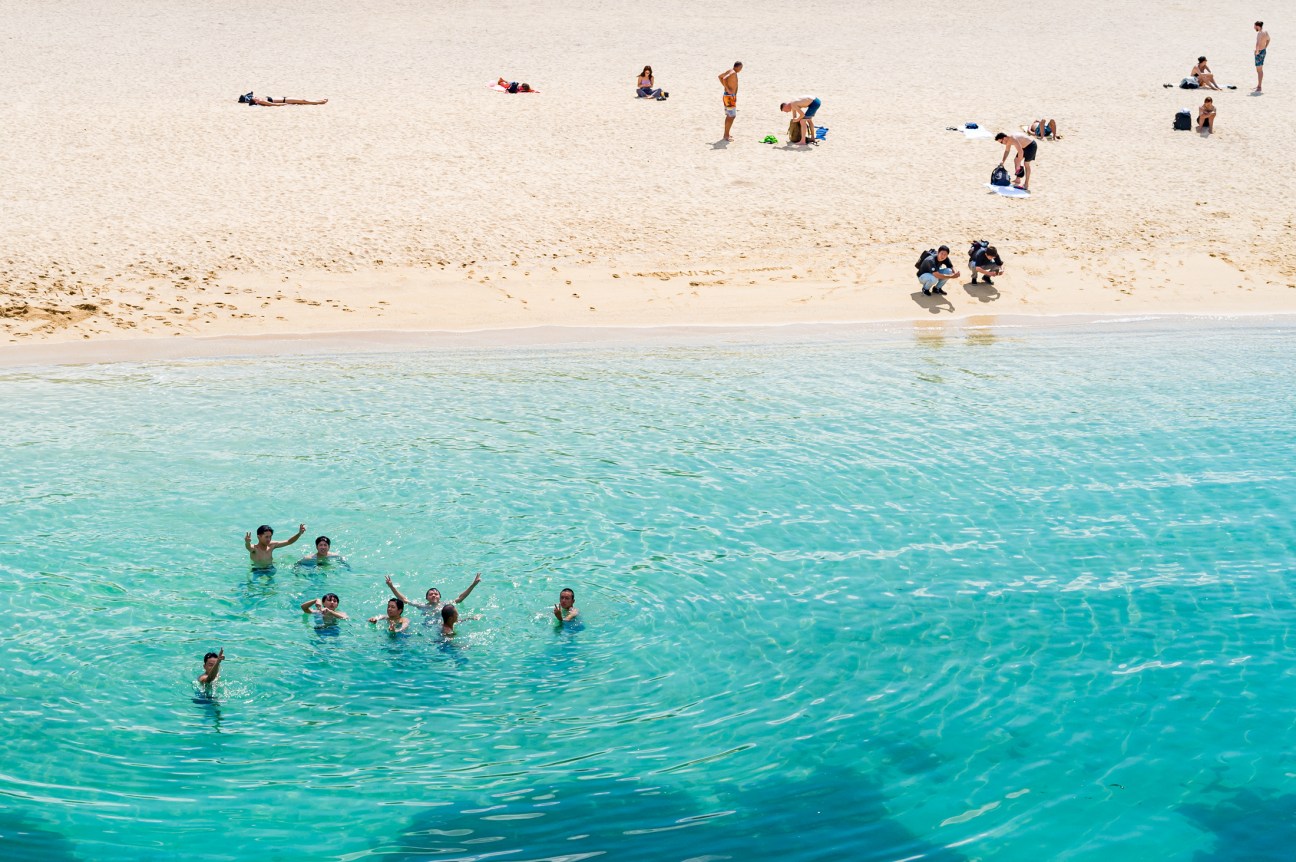


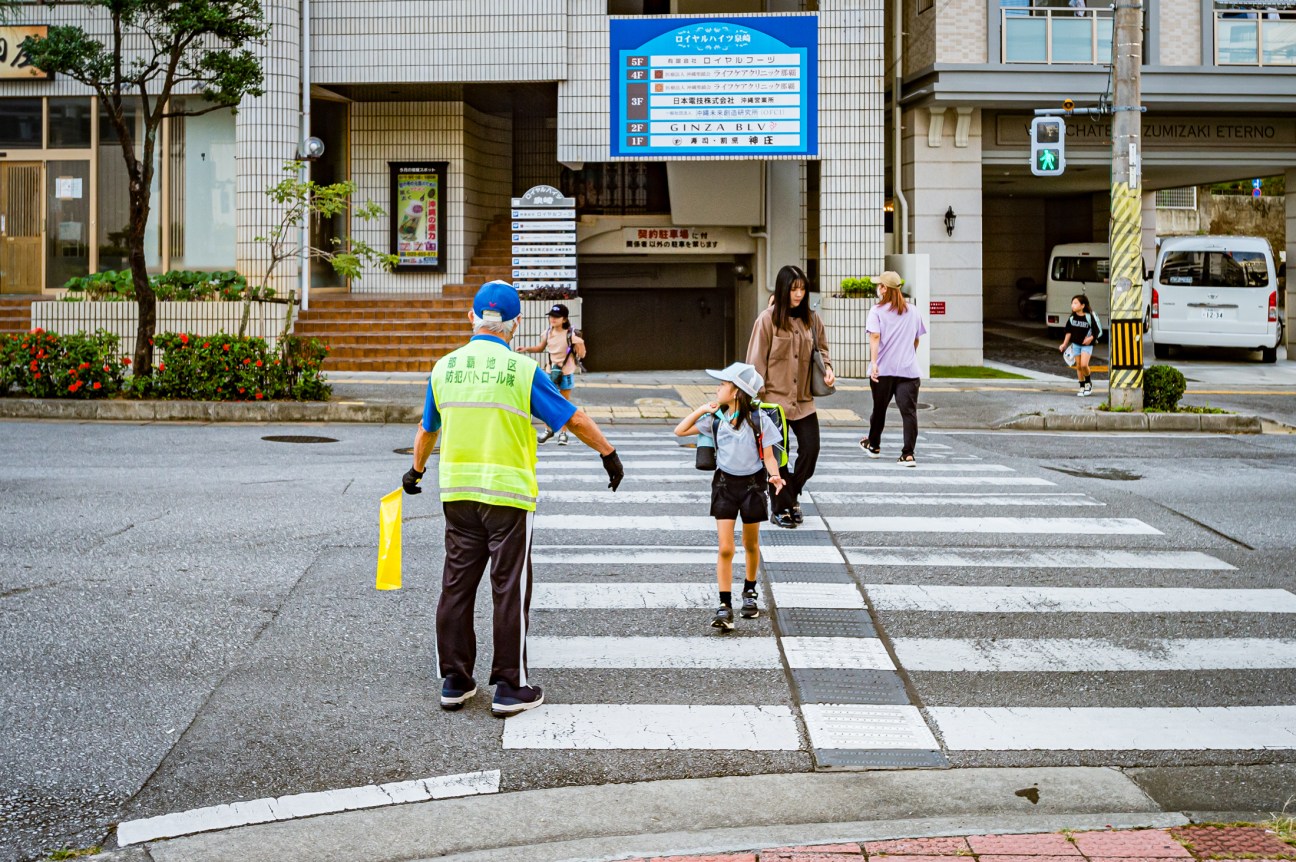
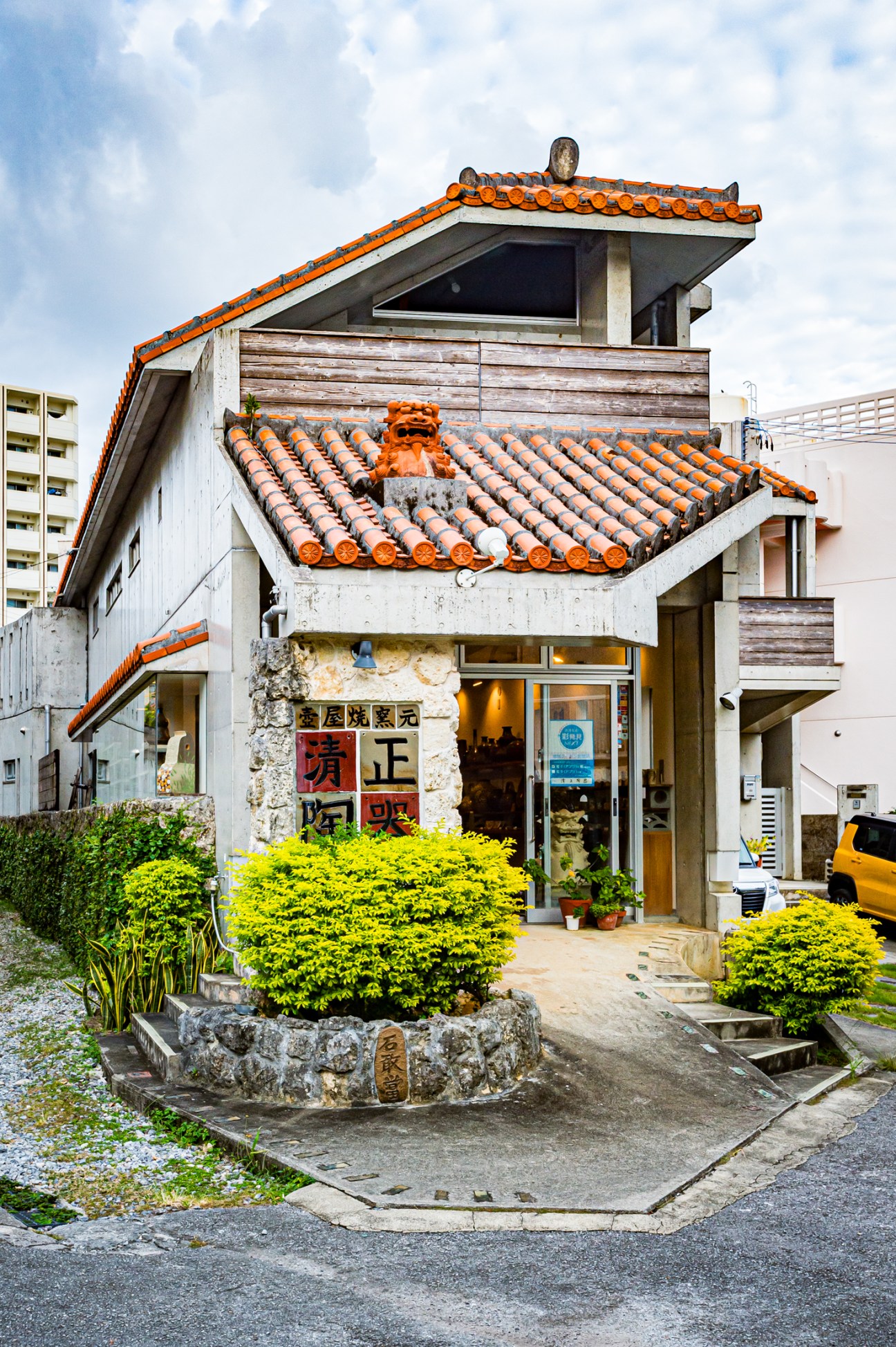

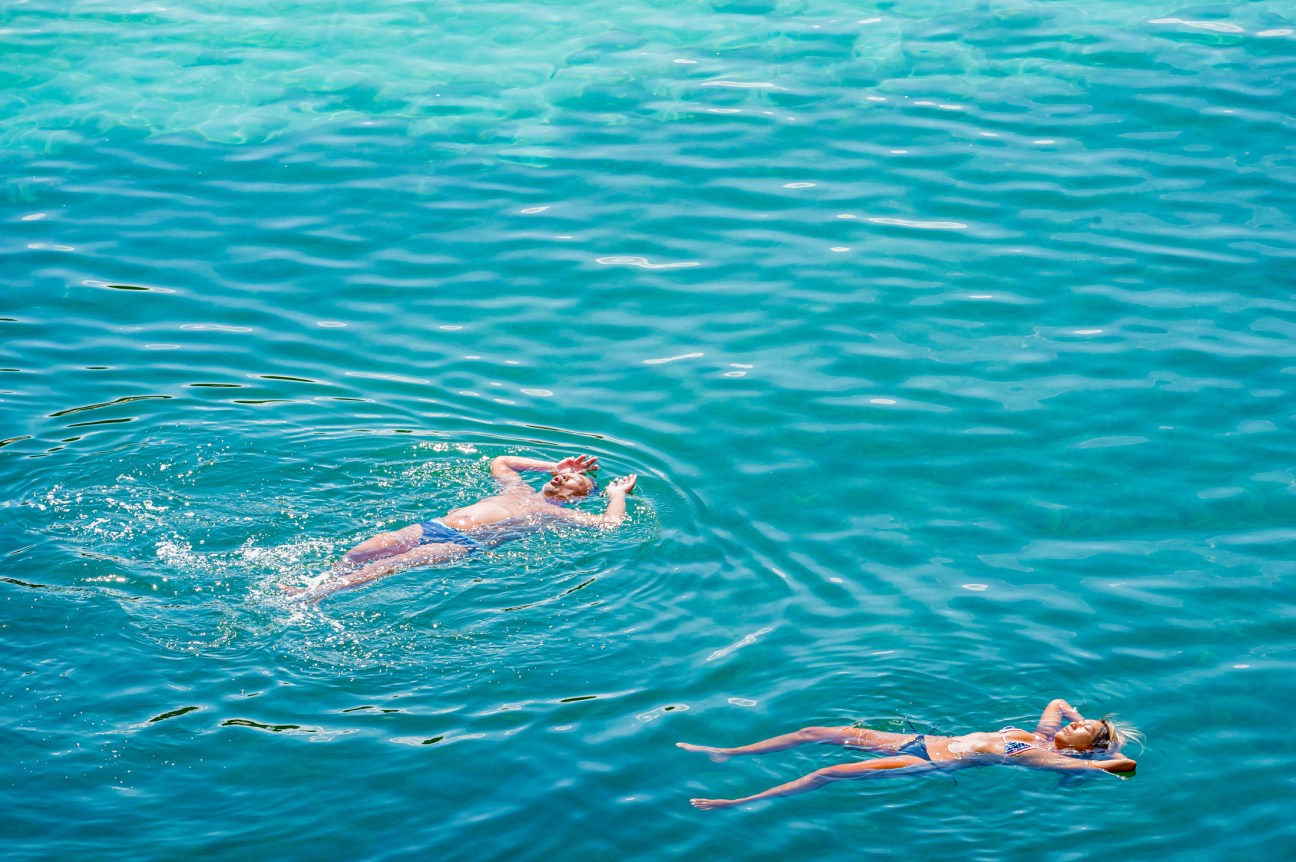


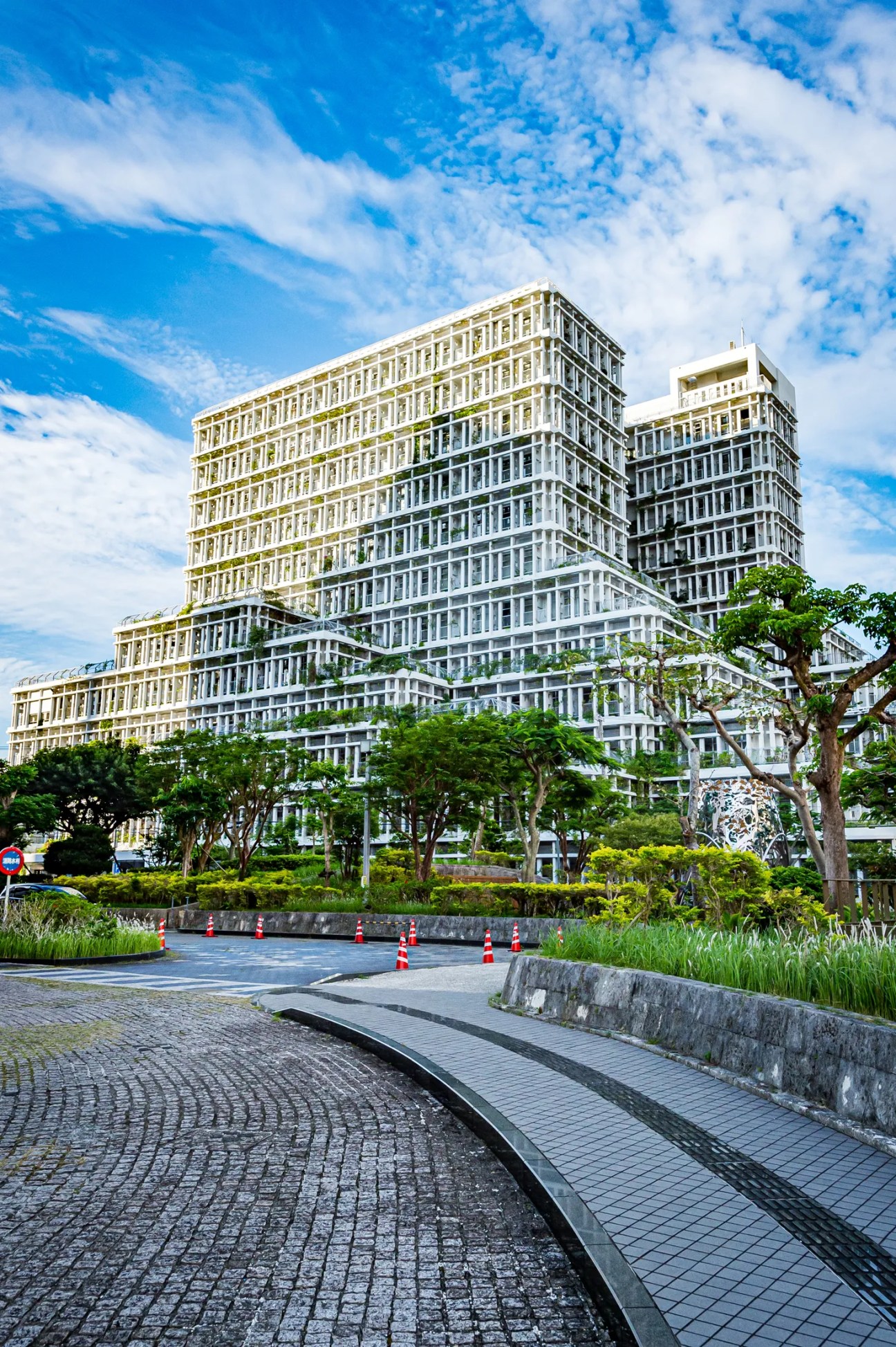
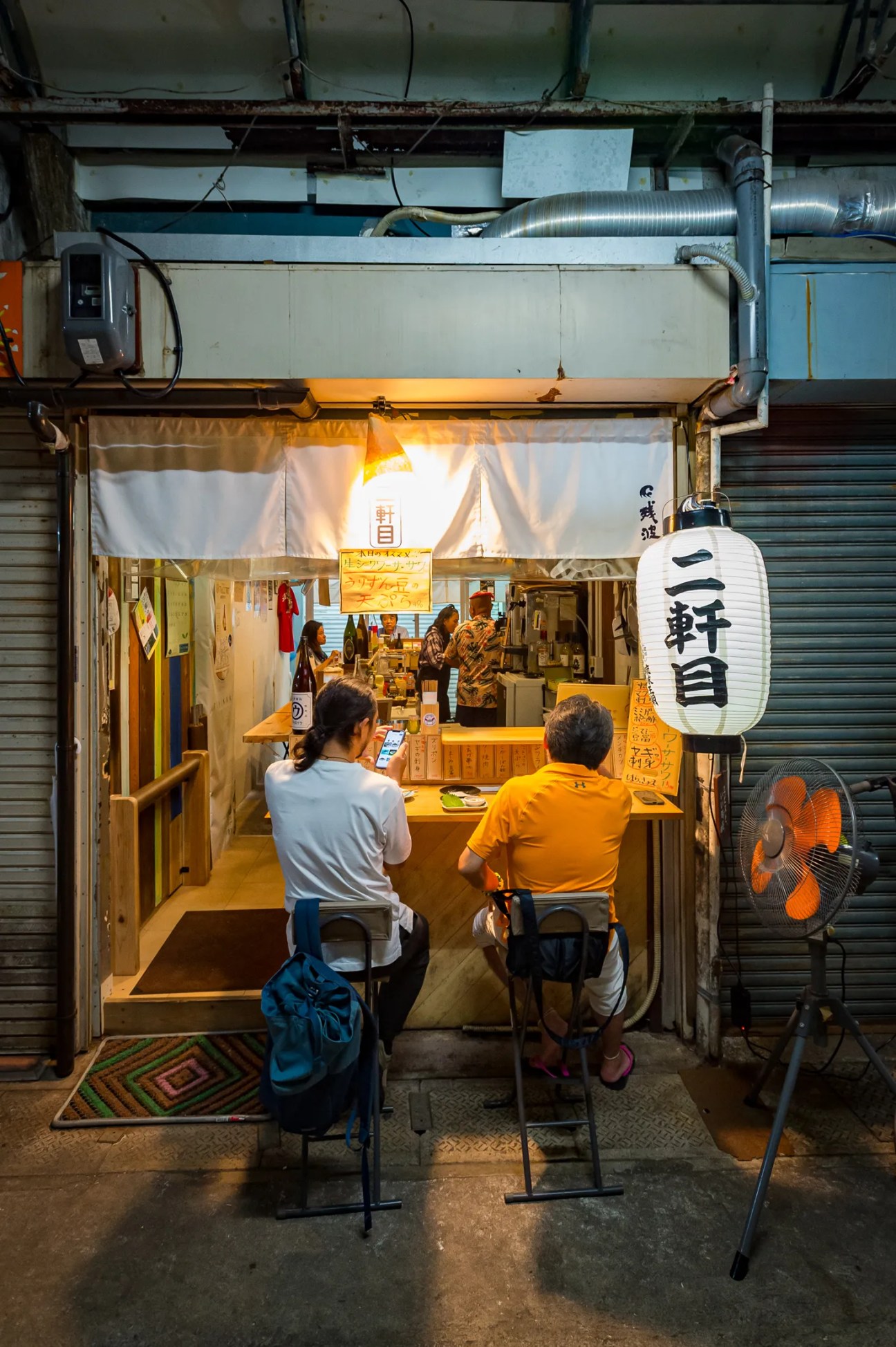
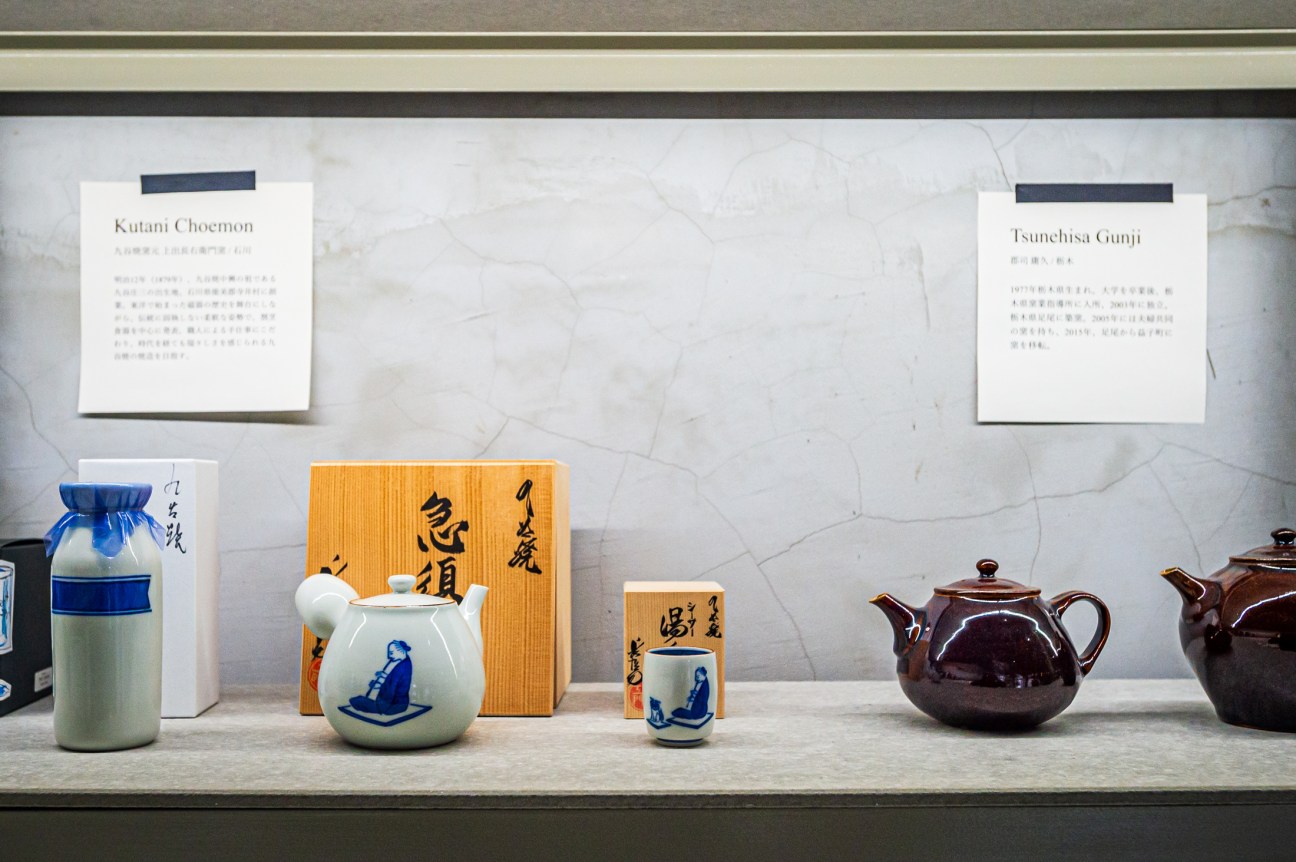
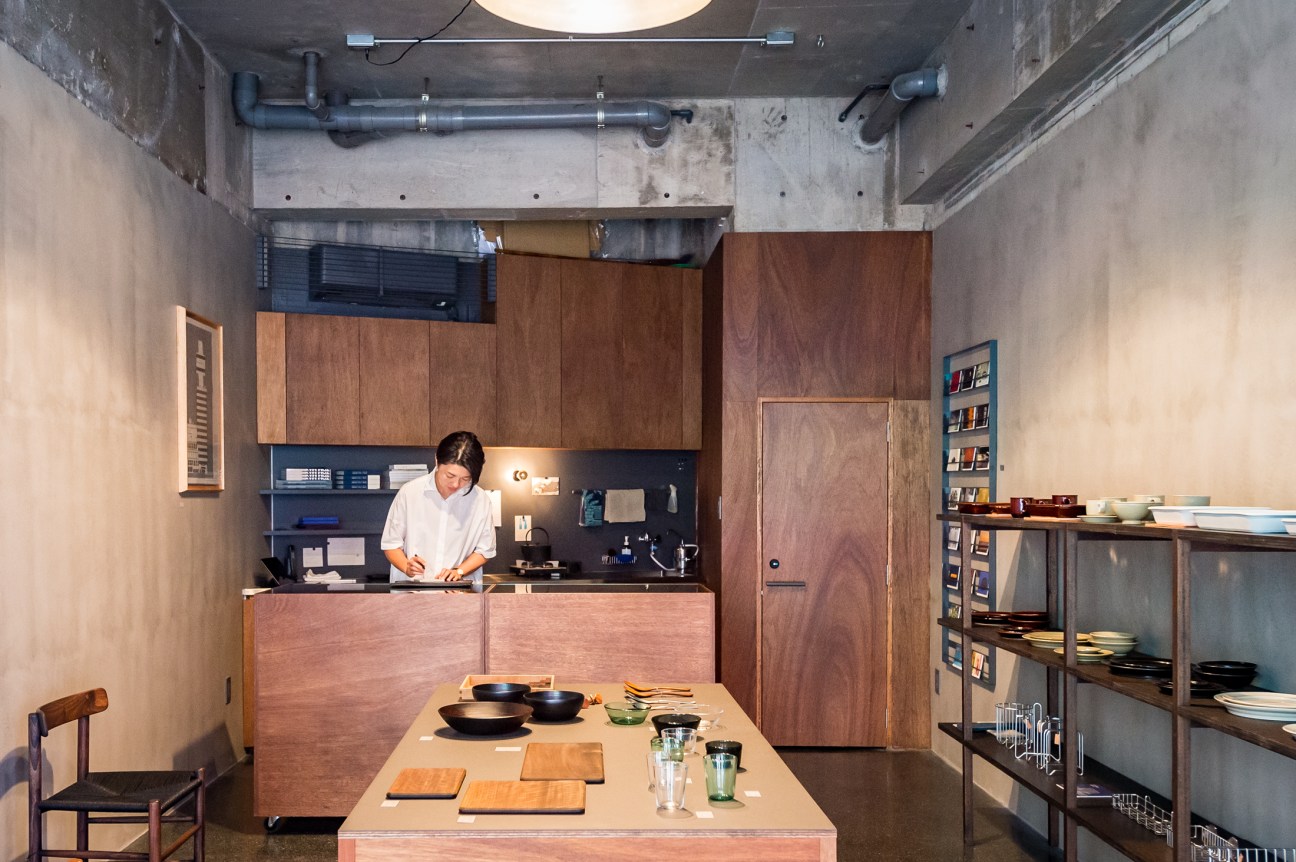

2.
Santander
Spain
Best for architectural inspiration
Santander enjoys a wealth of contemporary architectural treasures. The Centro Botín arts centre was designed by Pritzker Architecture Prize-winner Renzo Piano and a Banco Santander-backed art gallery by David Chipperfield is in the works.
In Santander, a city of 172,000 on Spain’s northern coast, nobody is in a rush. If you’re late for a meeting, call ahead and surrender to the pace of the locals ambling along the harbour promenade. Defined by its low- and mid-rise apartment blocks stacked up a sloping peninsular, the Cantabrian capital has narrow streets on which you’ll find an assortment of cafés and restaurants. It’s the sort of enclave where the terraces are packed with customers sipping vermut at 14.00 on a Tuesday. Historically known for its fishing and shipbuilding industries, the port city has increasingly benefited from tourism and the fact that Banco Santander has its institutional headquarters here. Young start-ups and restaurateurs are tapping into the low cost of living, the city’s cultural scene and the connectivity afforded by its international airport.

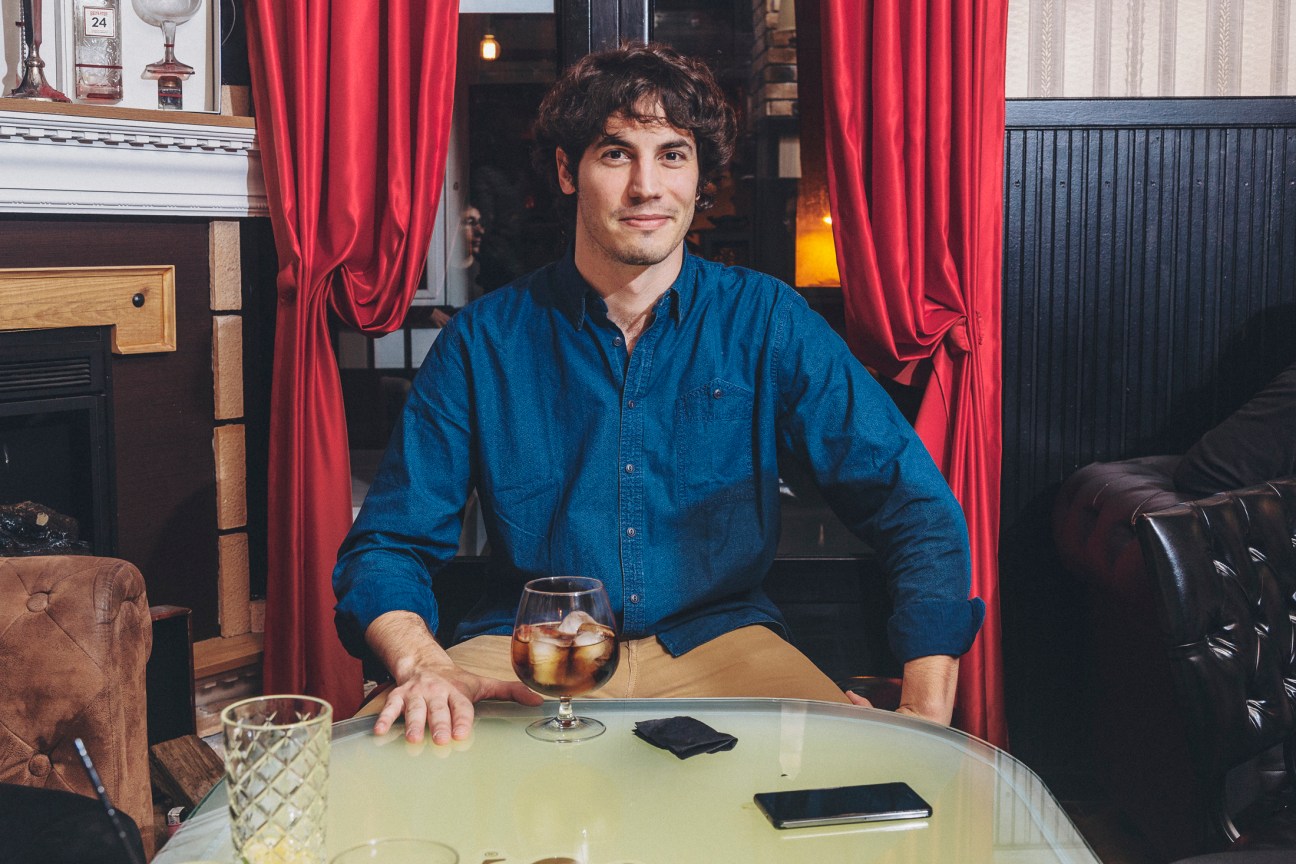
“I live here because of the quality of life,” says Berta Betanzos, a retired Olympic sailor who now co-owns Tanndem, a gym near the bay. When Monocle asks why Betanzos, who grew up in Santander, decided to stay, she says that the city’s sheltered location and mild climate lends itself to endless recreational opportunities. There are more than a dozen beaches within walking distance of the city centre and the distant peaks of the Cantabrian mountains surround the bay. Architect Jacobo Gomis took advantage of this outlook in 2012 when he opened Centro de Surf, a geometric concrete building on the popular Somo beach near Santander, which has become a hub for those in need of lockers, surfing lessons or a beer. “I grew up surfing here,” he says. “Now I take my children.”

Entrepreneurs such as Carlos Zamora Gorbeña, who runs La Caseta de Bombas restaurant with his sister, Lucía, have also tapped into the outdoor lifestyle. “People are connected to nature here,” he says. “Everything is a short walk away.” One of the restaurant’s patrons, Katherine Browne, is looking out across the bay with an aperitif. “People are friendly and there’s a good work-life balance,” says Browne, who moved to Santander from Ireland 20 years ago and owns a jewellery business. “I’m happy here. I feel safe.”
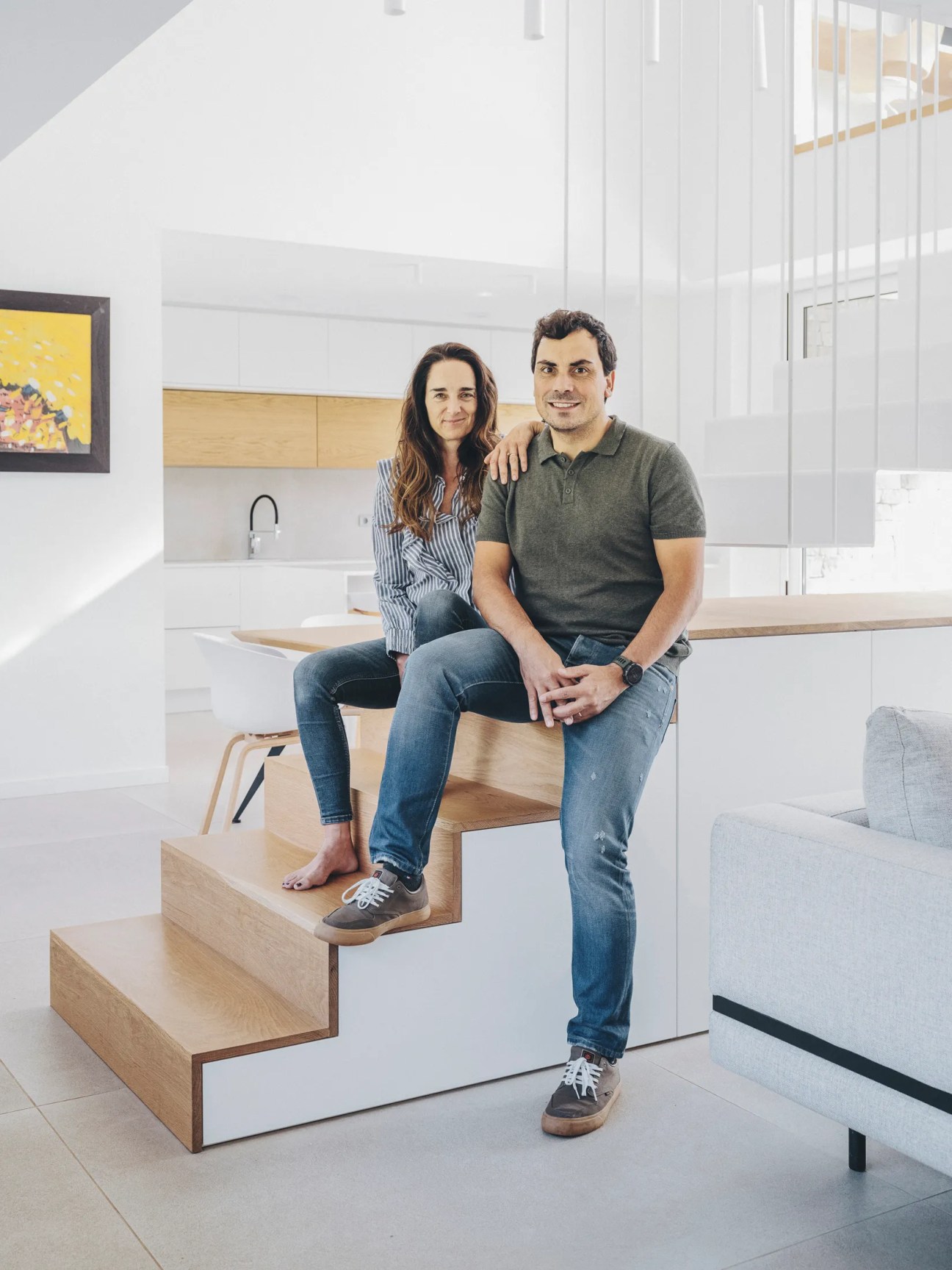

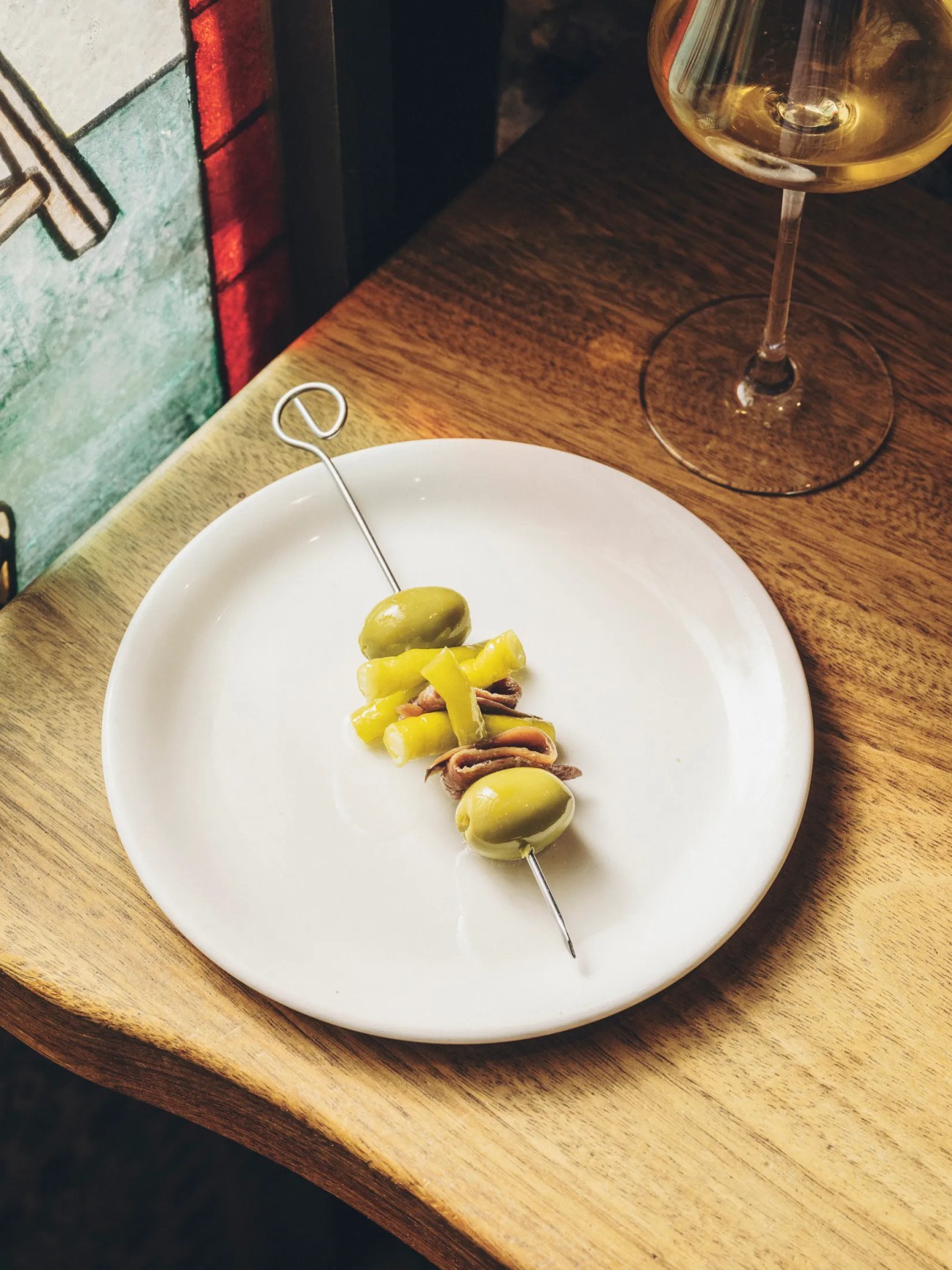
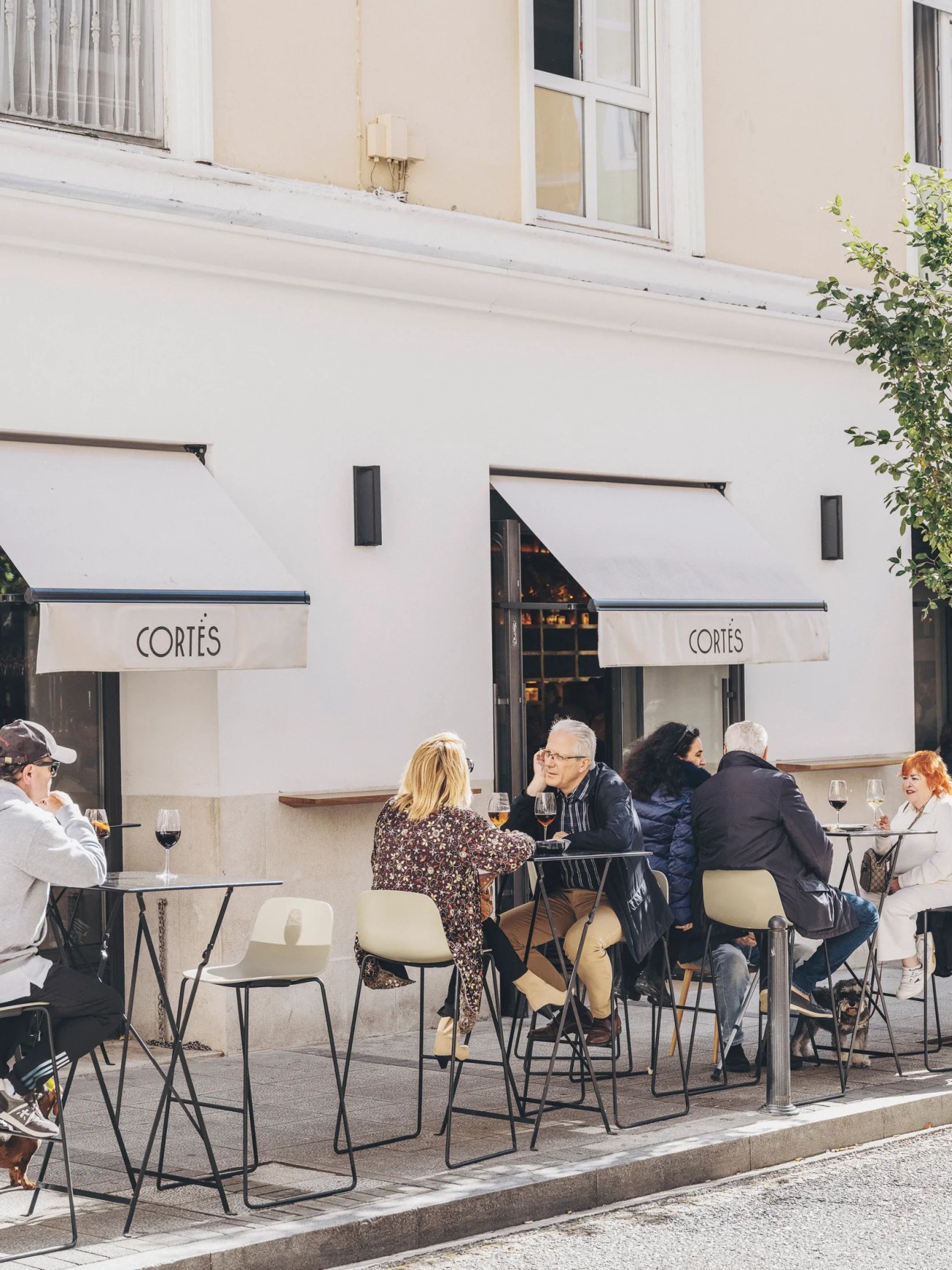
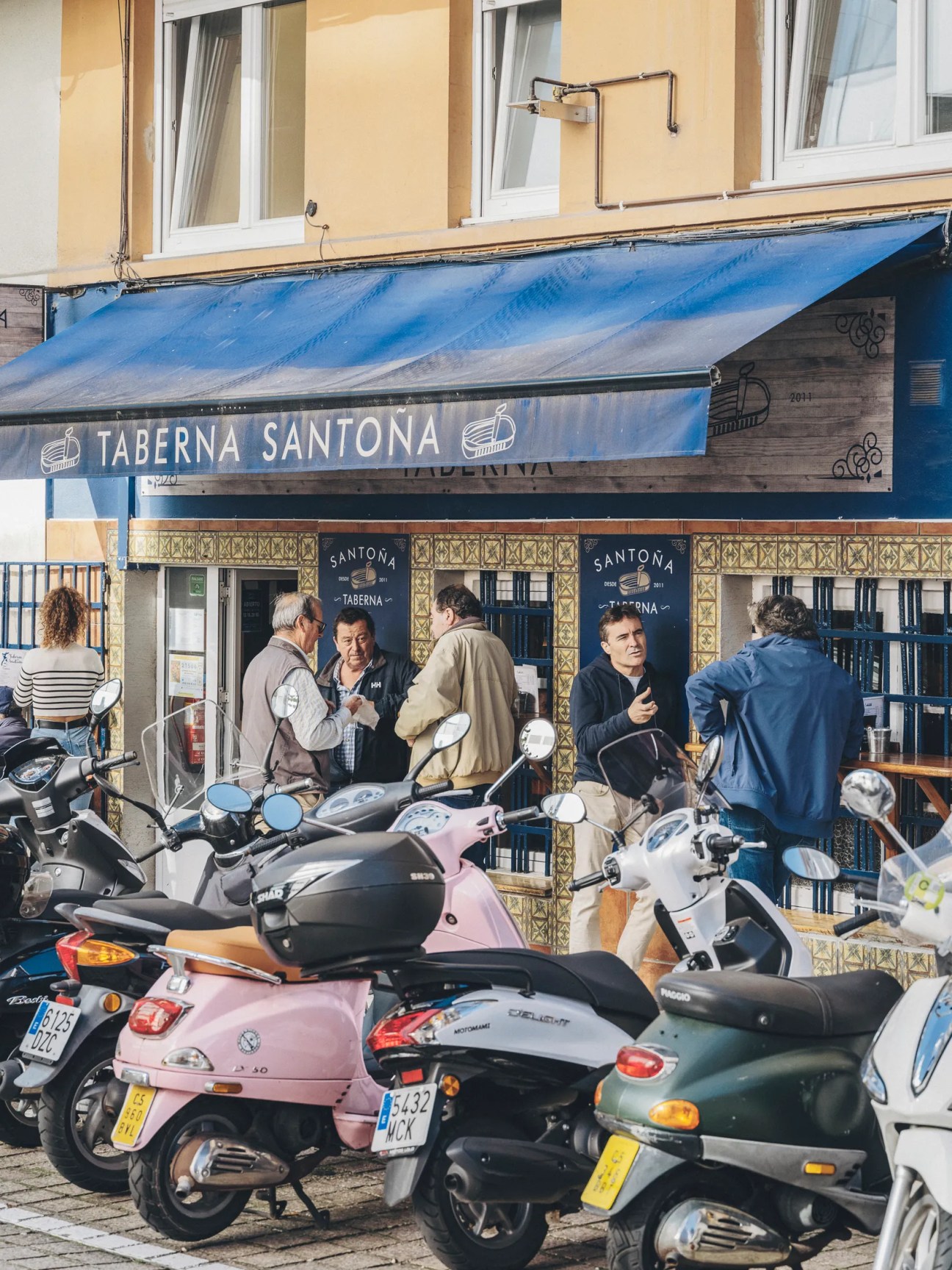
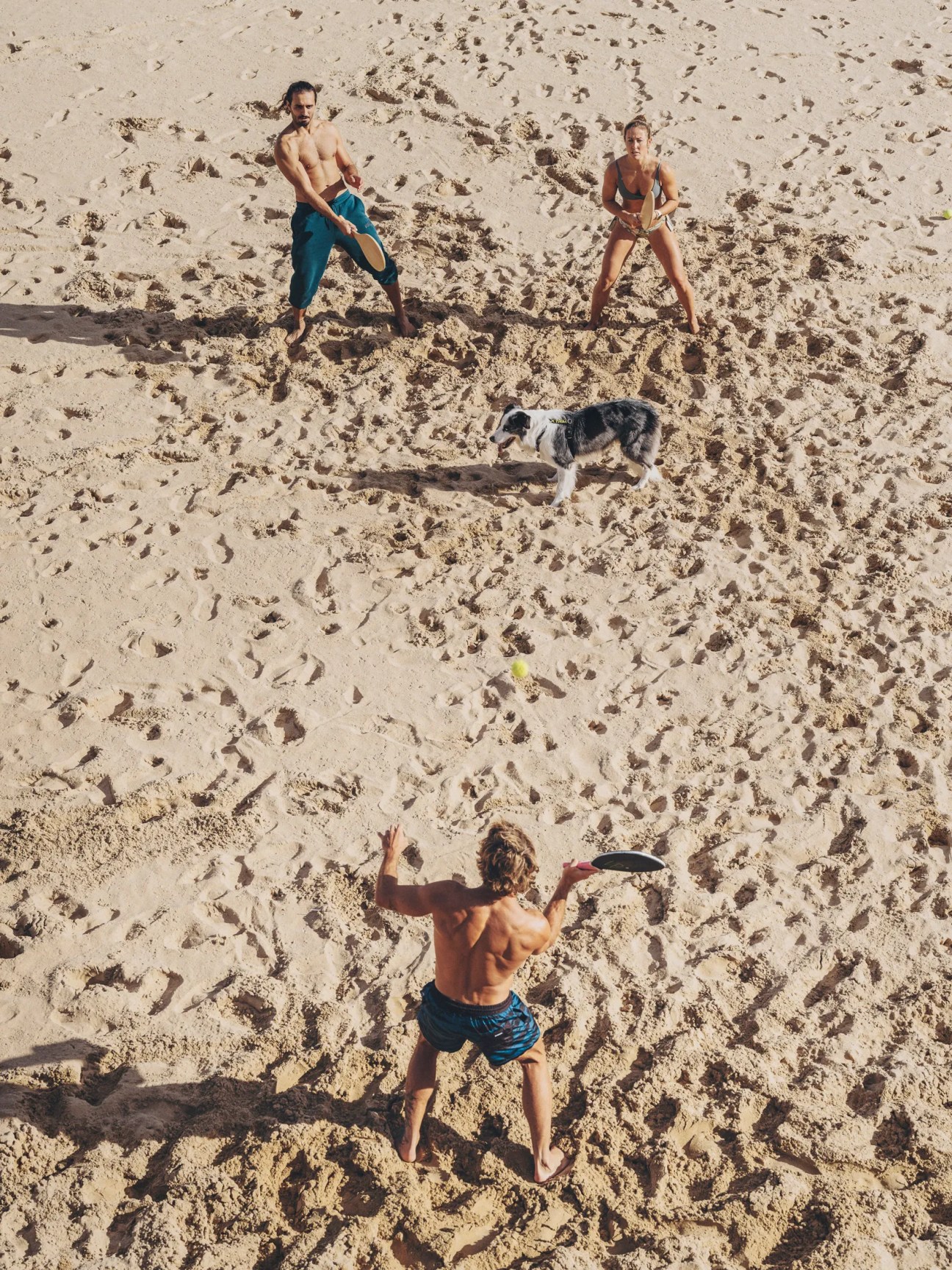
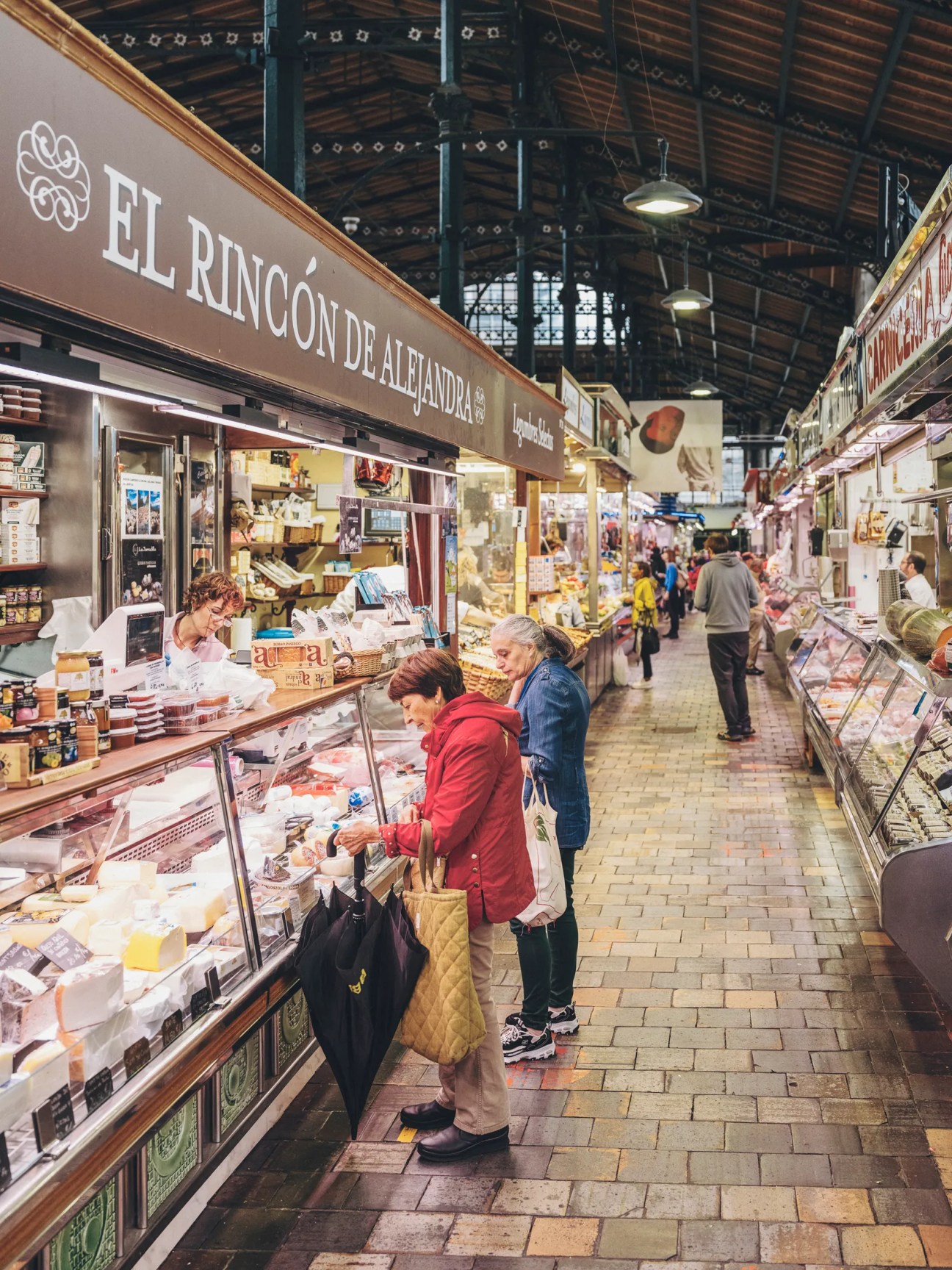
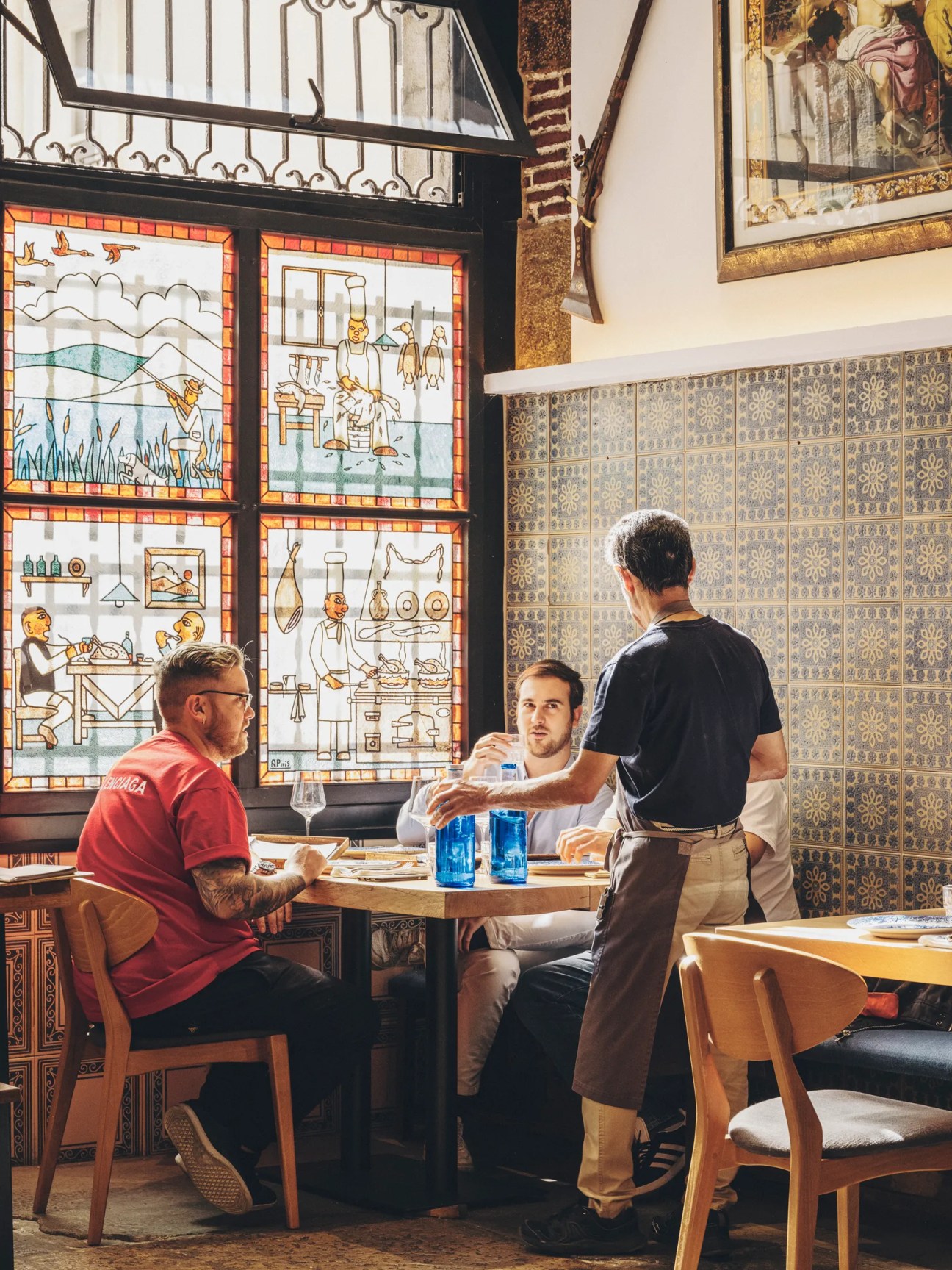

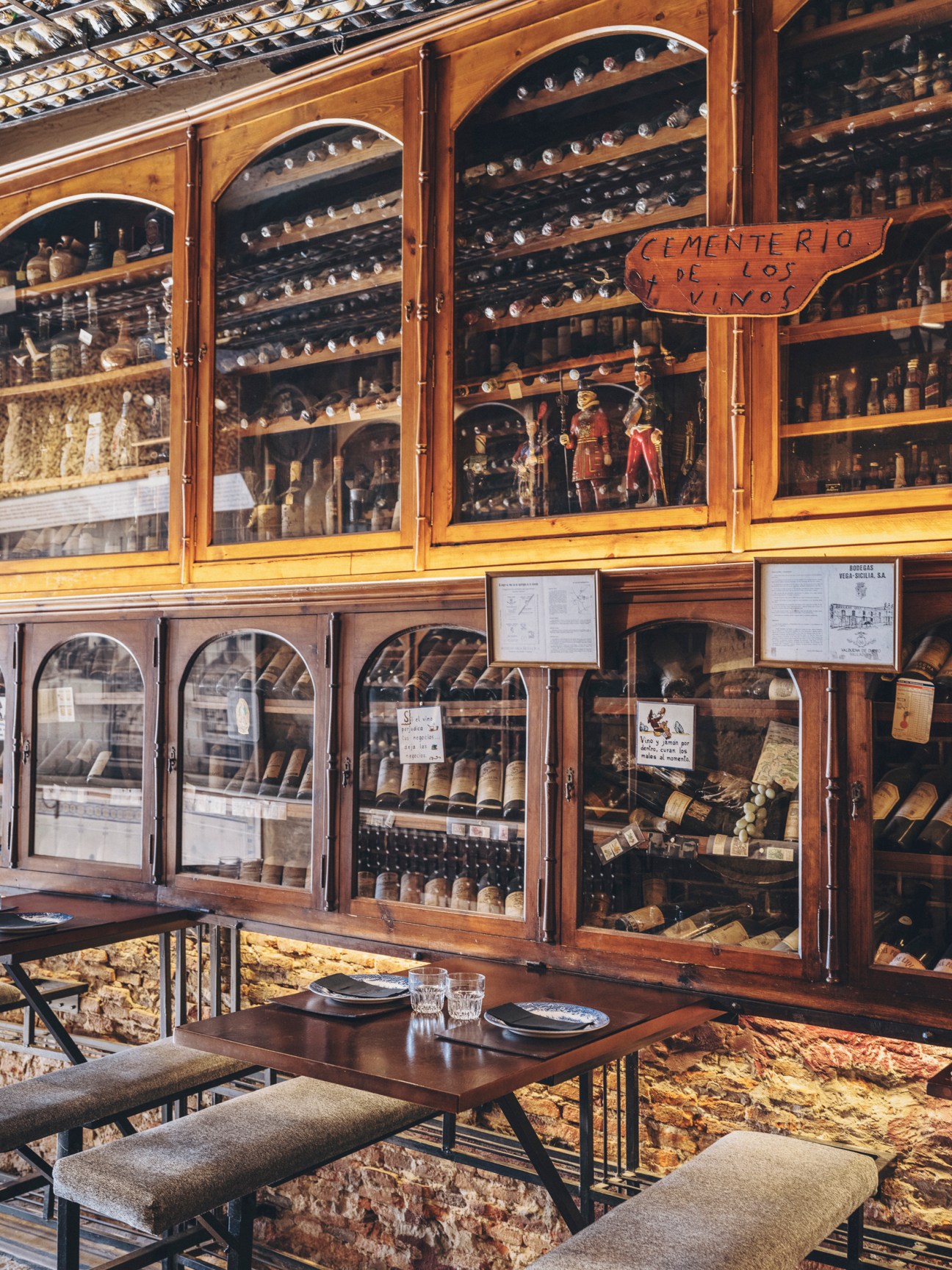
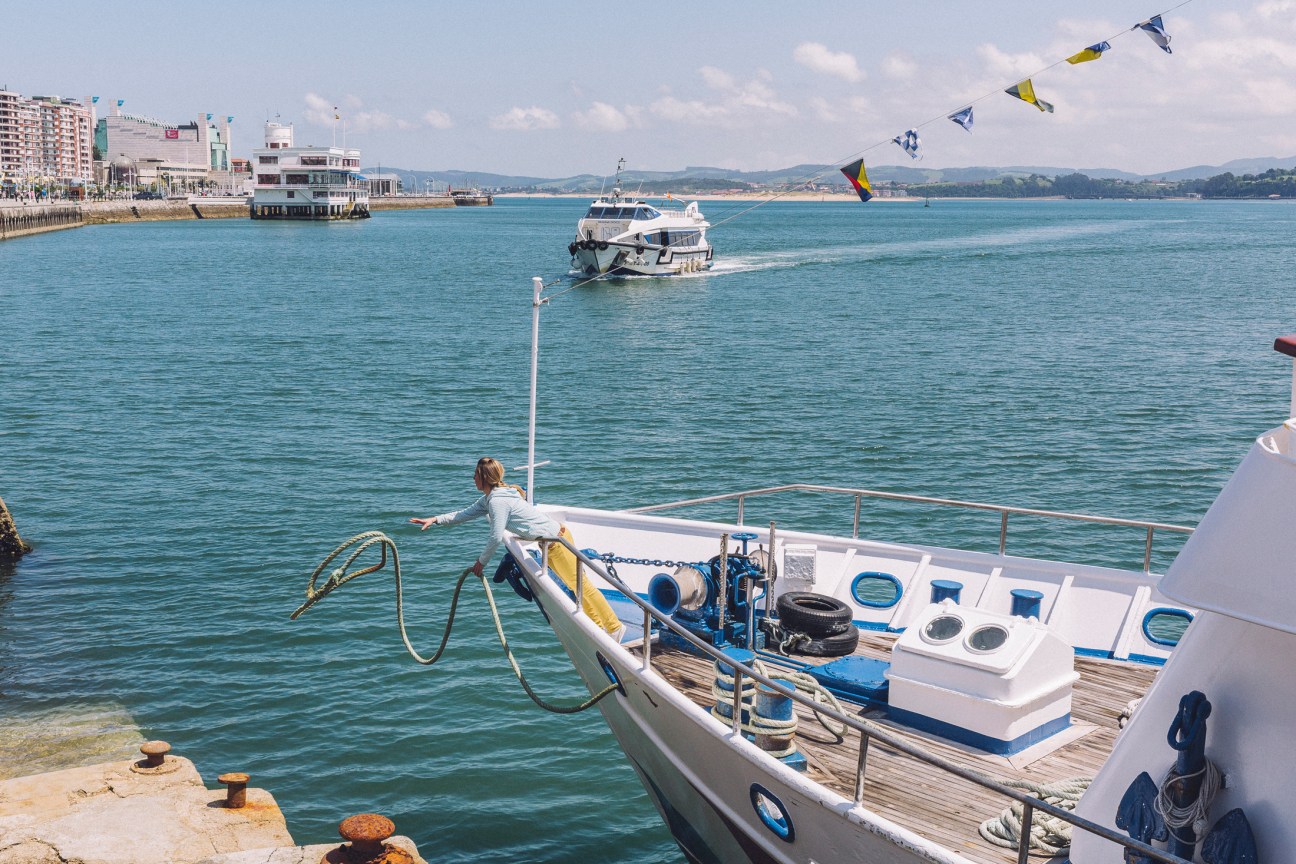
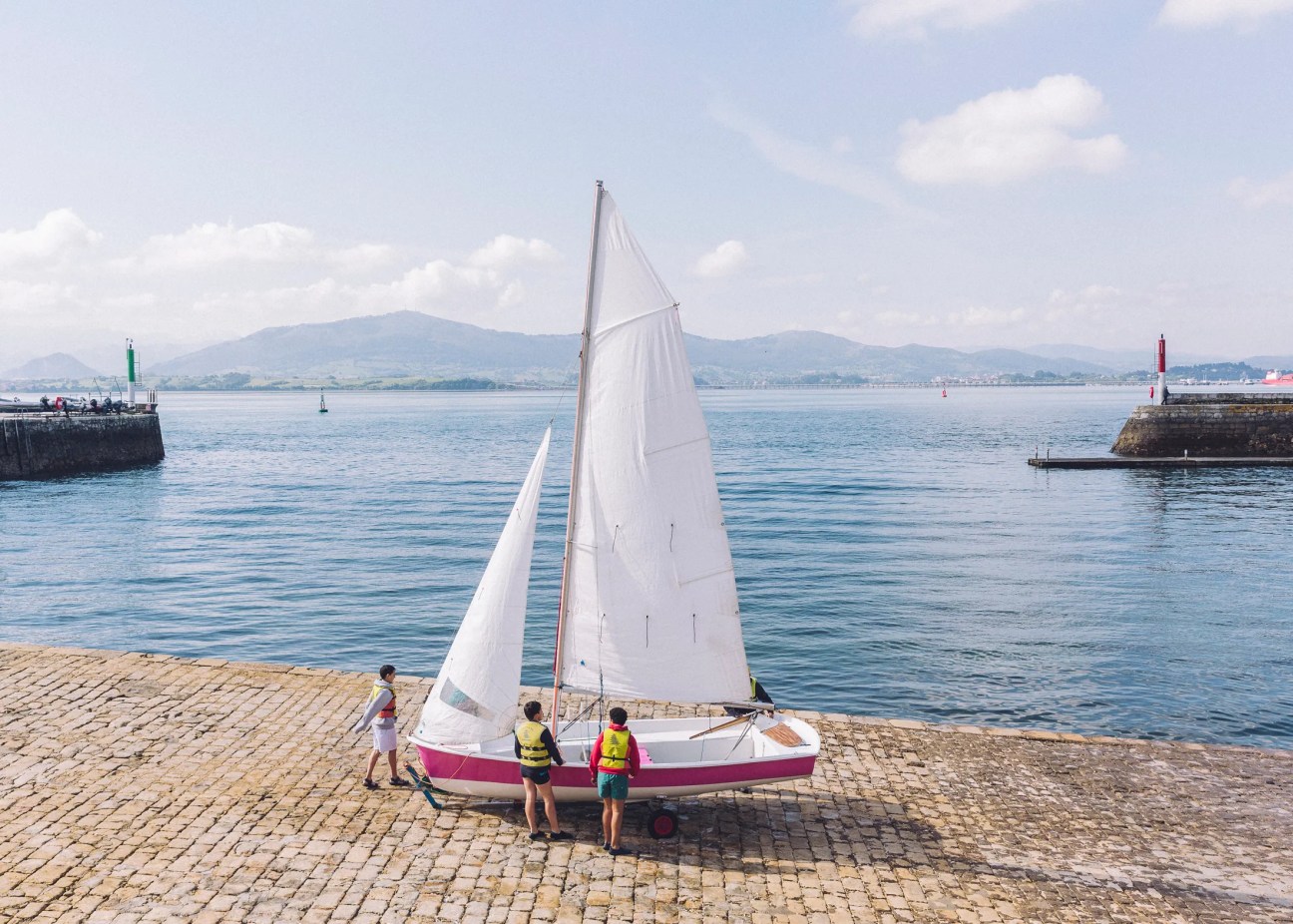

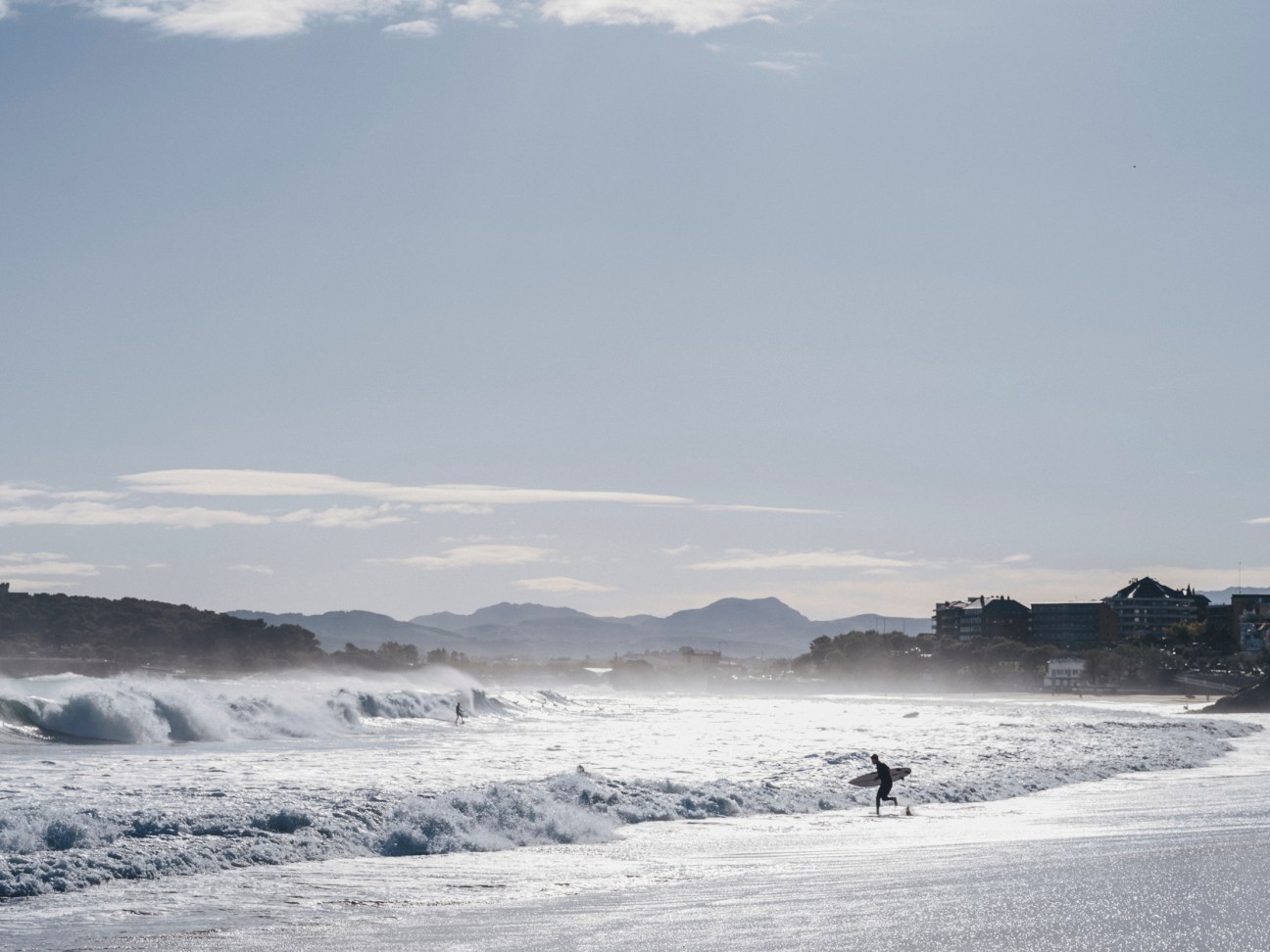

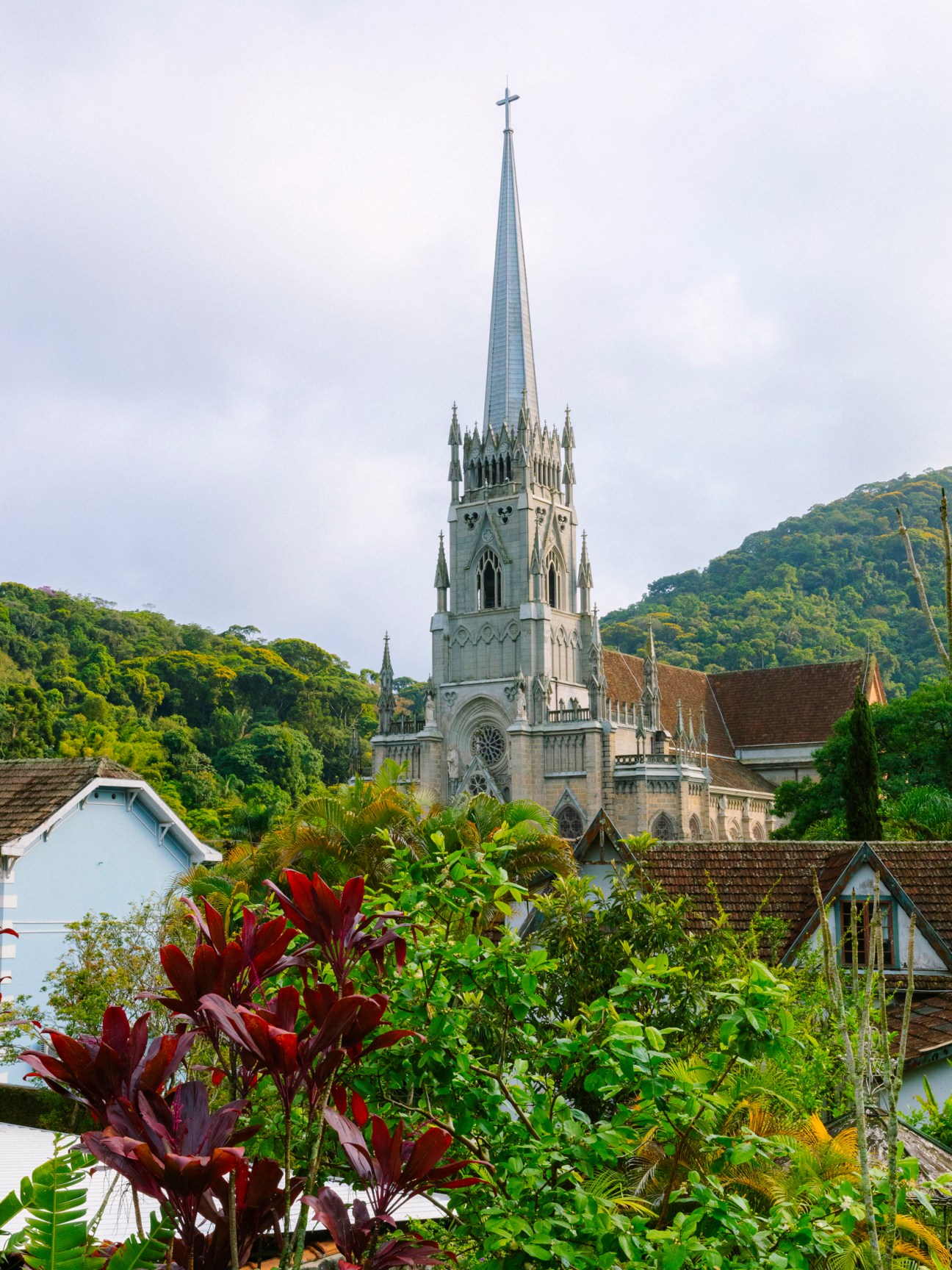
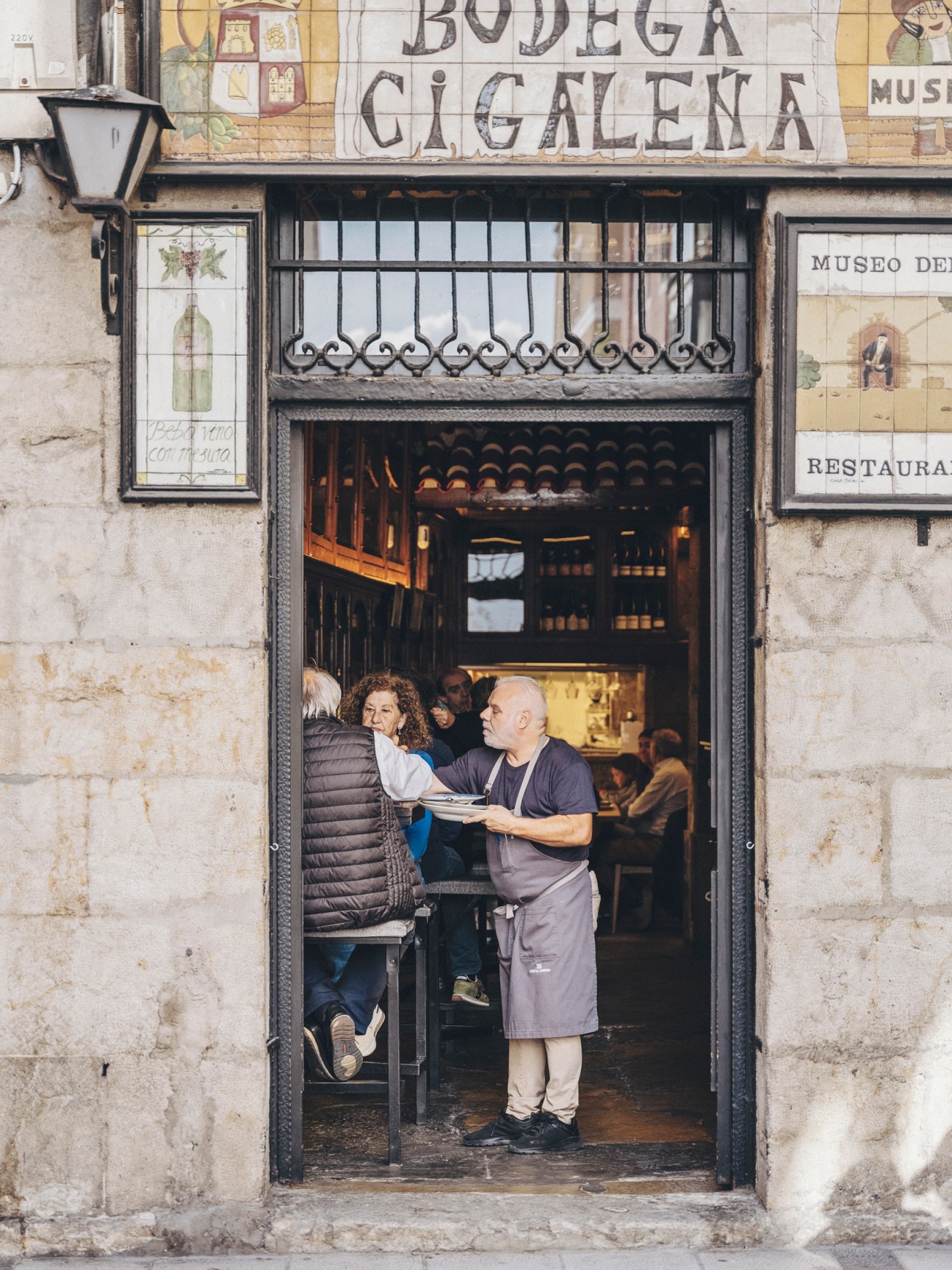
3.
Petrópolis
Brazil
Best for those seeking a subtropical enclave
Many Brazilian cities are celebrated for their beachfronts, meaning that those further inland are often overlooked. Petrópolis offers the best of both worlds: it’s an easy morning excursion to Rio de Janeiro’s best beaches, so residents can return to their city’s cool climes for a breezy afternoon.
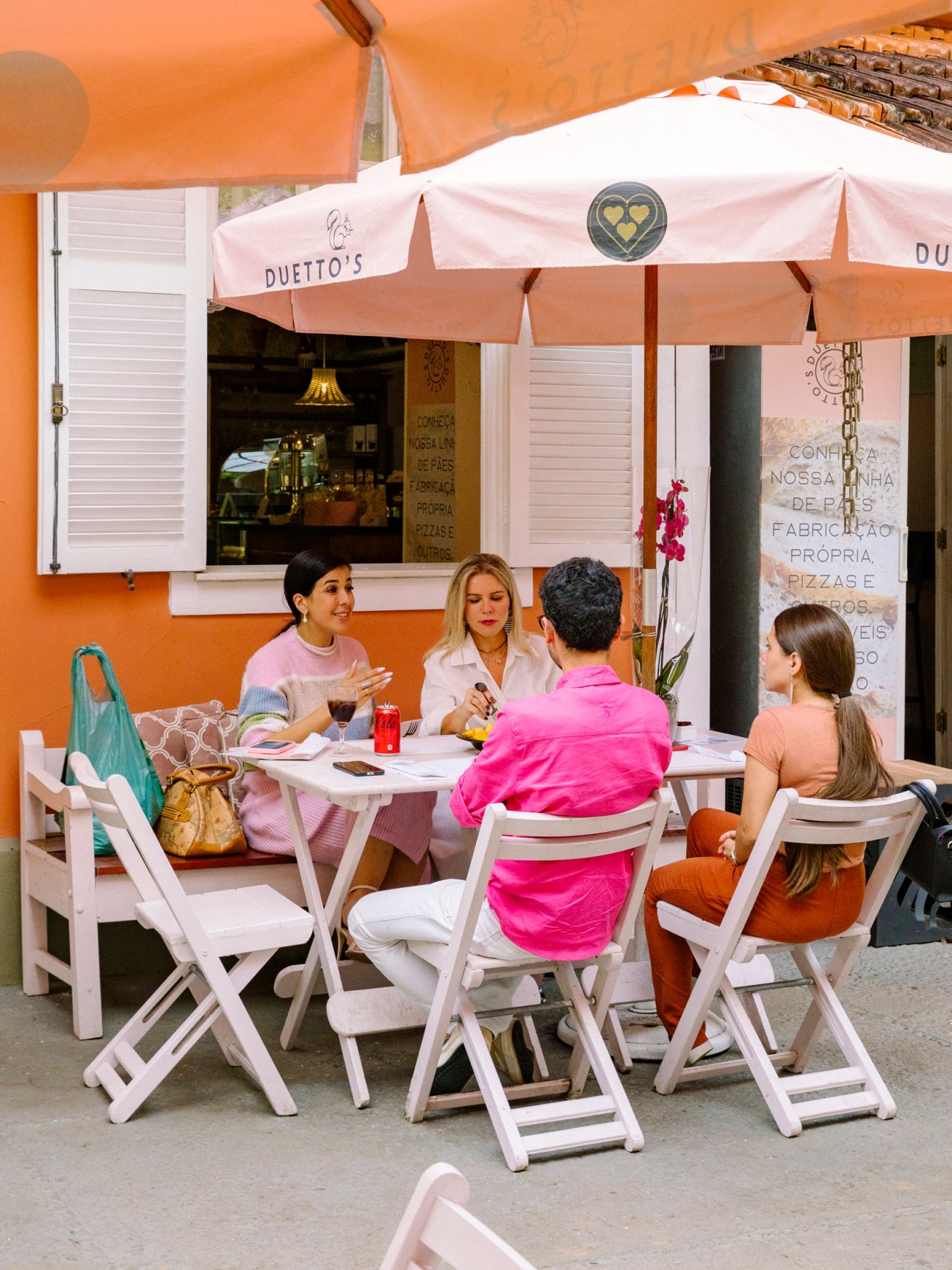

Less than a two-hour drive north of Rio de Janeiro in the mountainous Serrana region, Petrópolis was built in the 19th century as a summer resort for the Brazilian imperial family. The factors that drew Pedro II here remain its biggest attractions: a cool climate, tranquillity and proximity to the country’s second biggest city. A popular weekend getaway from the chaos of its formidable neighbour, this city of 300,000 offers closeness to nature, lively culinary and cultural scenes, and a good choice of universities. The walkable city centre mixes neoclassical architecture with an eclecticism that reveals the influence of German settlers. It’s also just a short distance from the Serra dos Orgãos national park and Rio’s international airport.
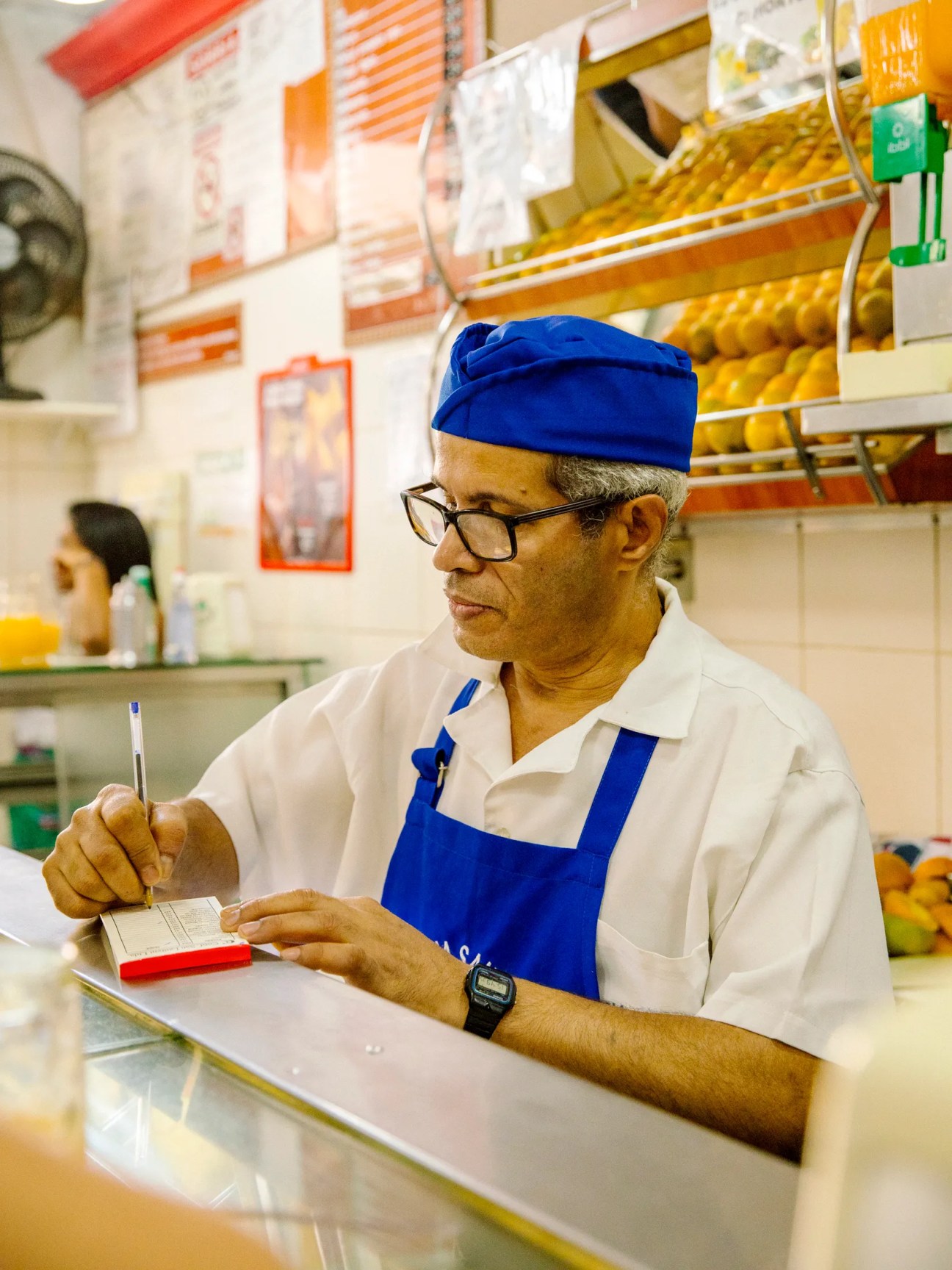

Tourism and hospitality are important to Petrópolis’s service-oriented economy but the city is also known as a centre of organic produce and beer, with many breweries. The SerraTec technology hub attracts cutting-edge talent and there’s a lab that hosts Latin America’s fastest supercomputer. Petrópolis’s creative scene is thriving too. Rio-born furniture designer Gustavo Bittencourt moved here 10 years ago for the space and skilled labour that the city offers; his workshop is now located in a hangar in an industrial neighbourhood surrounded by a verdant forest. “There are innumerable good things about Petrópolis: safety, the climate, the people, the cuisine,” he says.
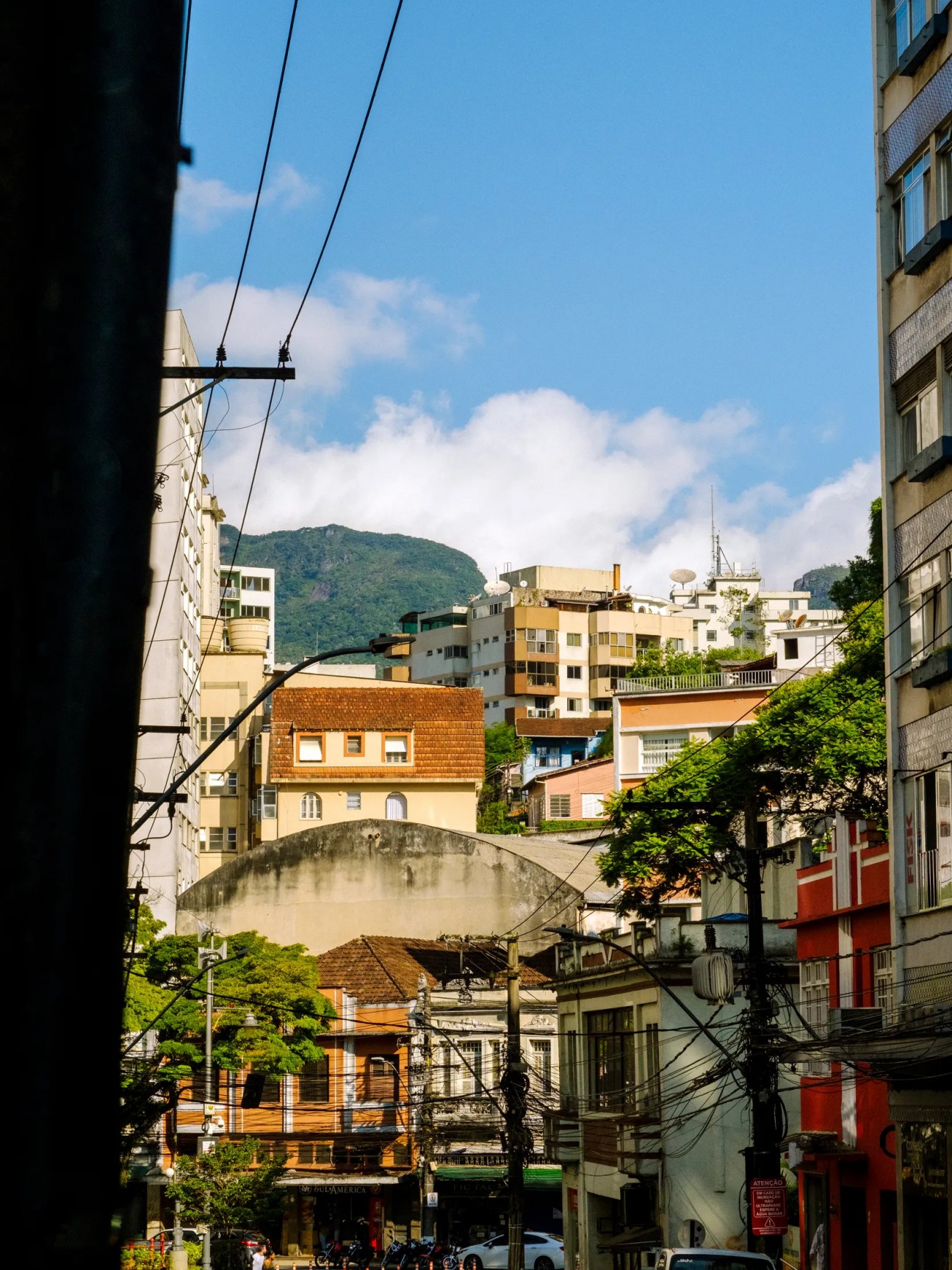
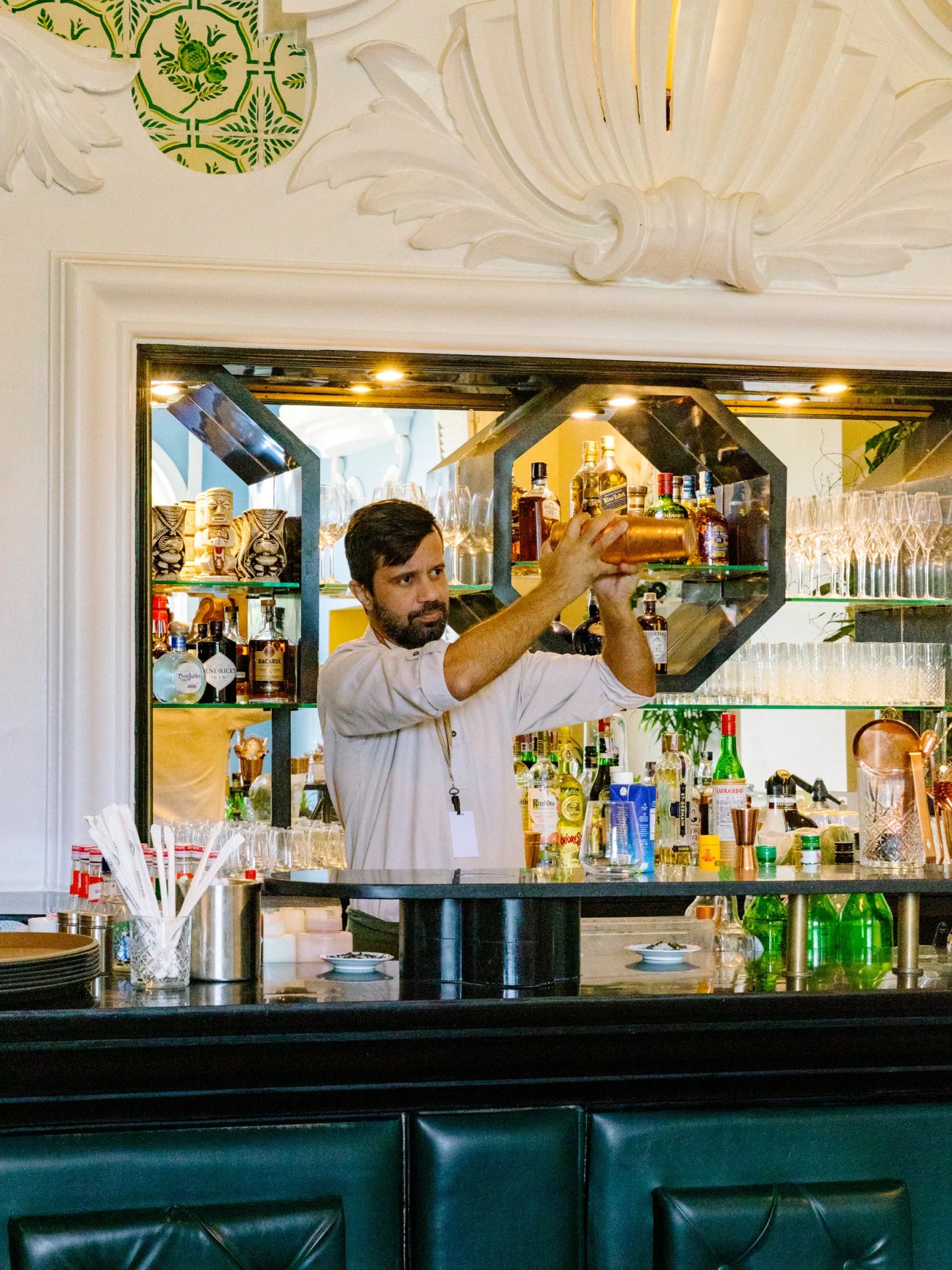
Some accuse the Imperial City, as it is still known, of being stuck in the past. It is certainly hard to escape the weight of history, whether you’re sipping a coffee in the gardens of the former imperial home or people-watching under pink-flowered sapucaia trees on Freedom Square (where the enslaved used to buy their independence). But entrepreneurial Petrópolitanos returning from bigger cities or from abroad are keen to keep their city relevant. Among them is Dani Abaut, who runs a ballet studio for professional dancers and is an enthusiastic advocate for her hometown. “My main reason for coming back to Petrópolis was that I wanted to contribute to making it a better place,” she says. Luckily, these improvements are starting to show.
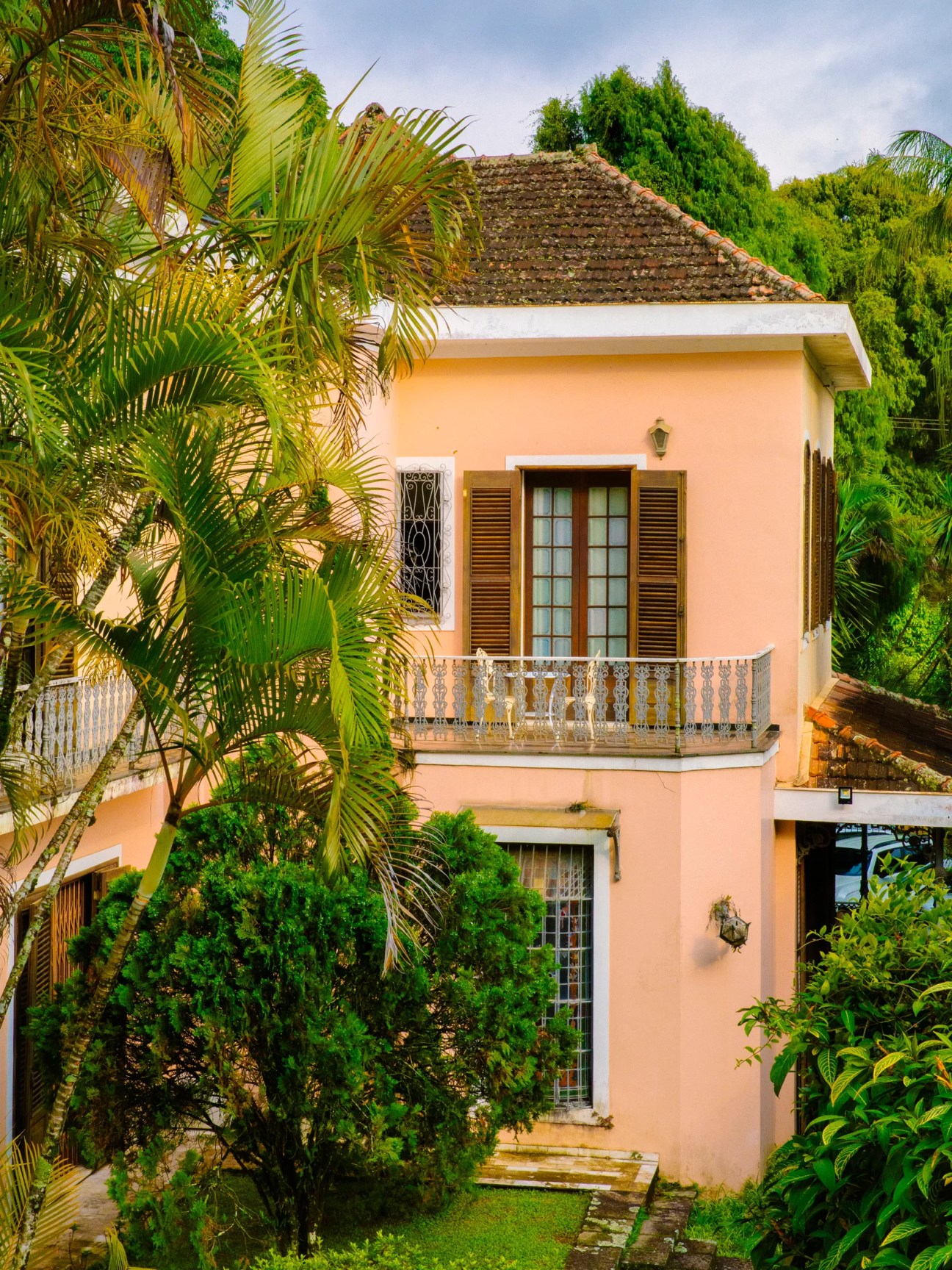
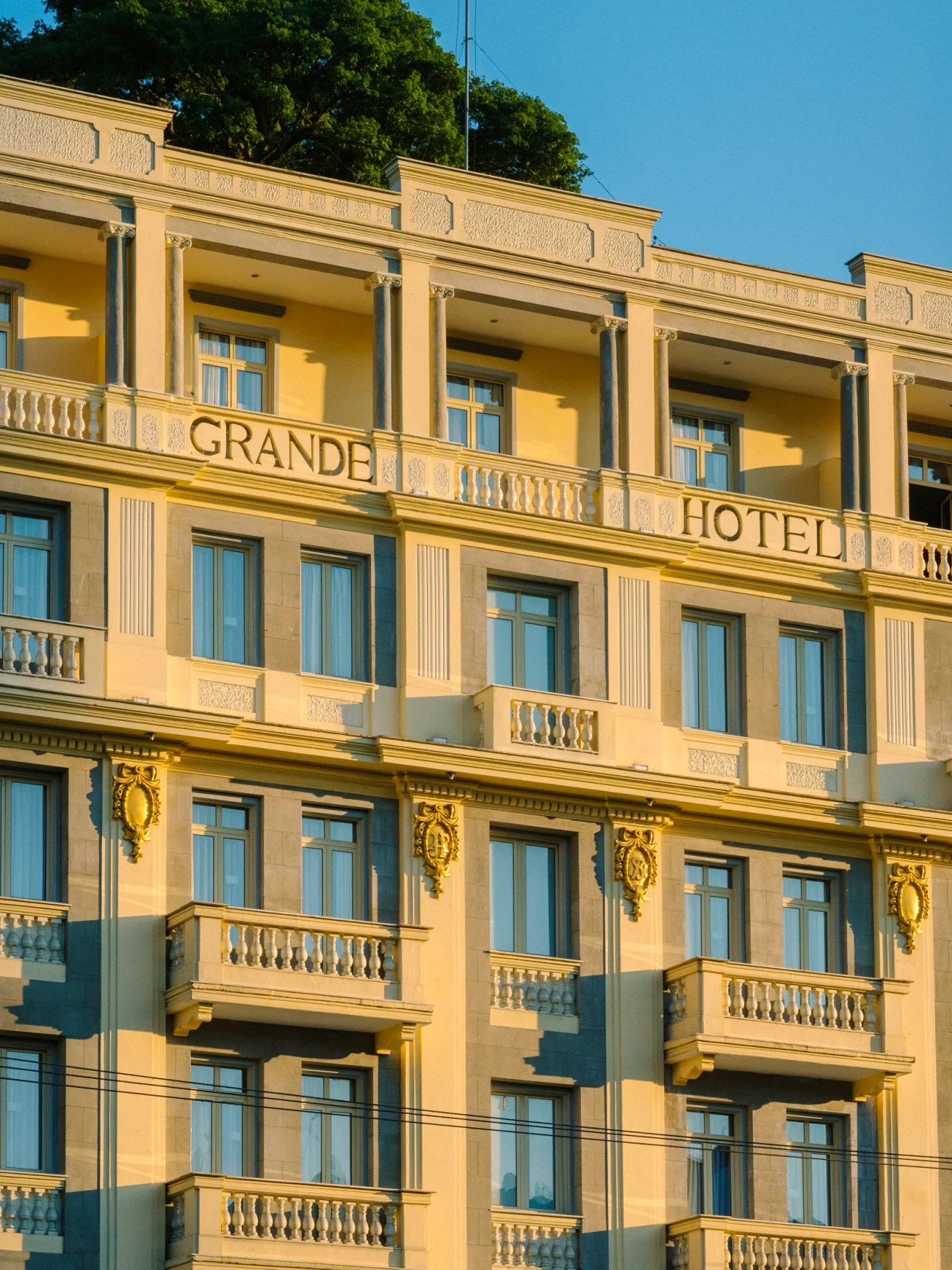

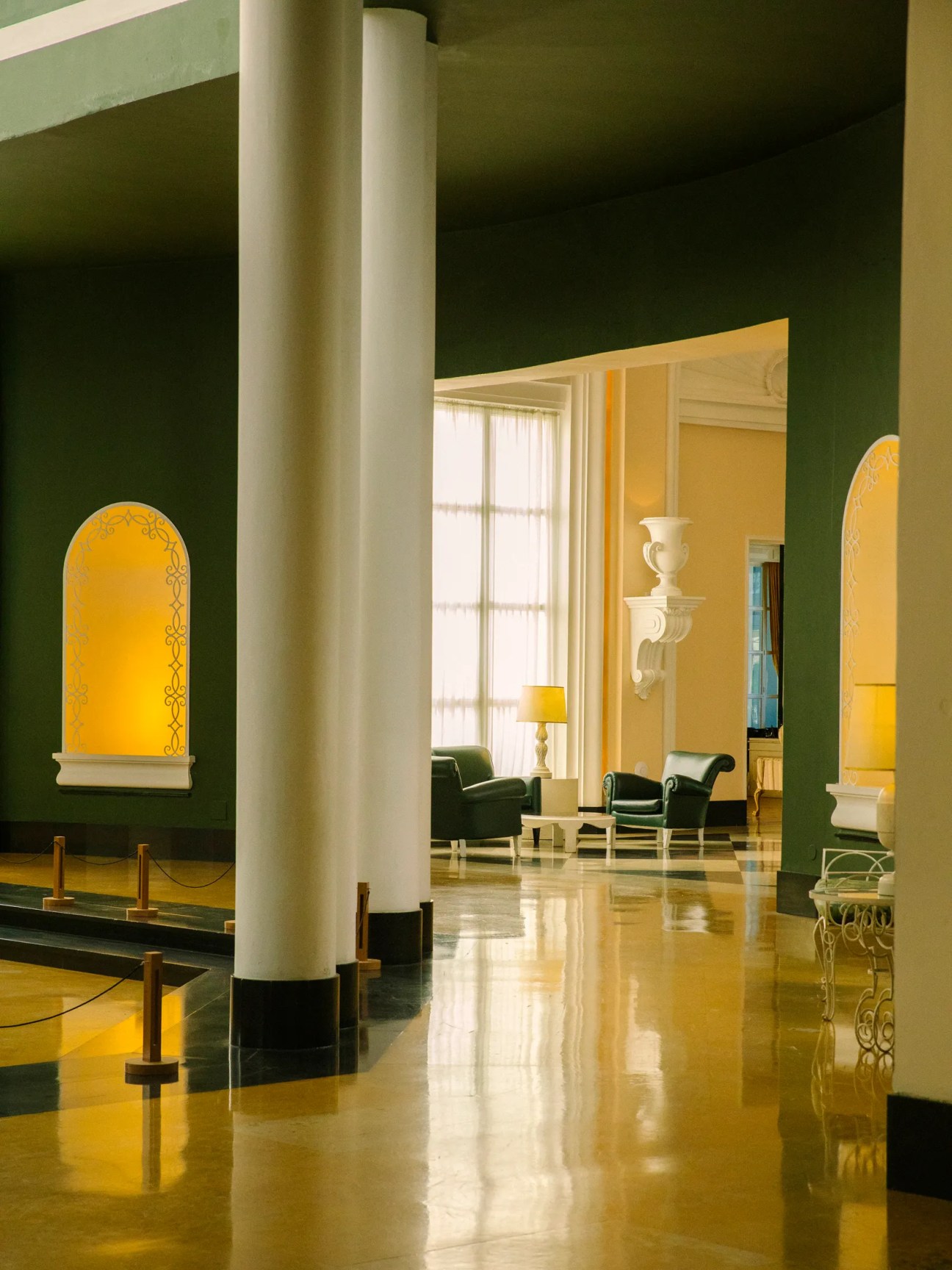
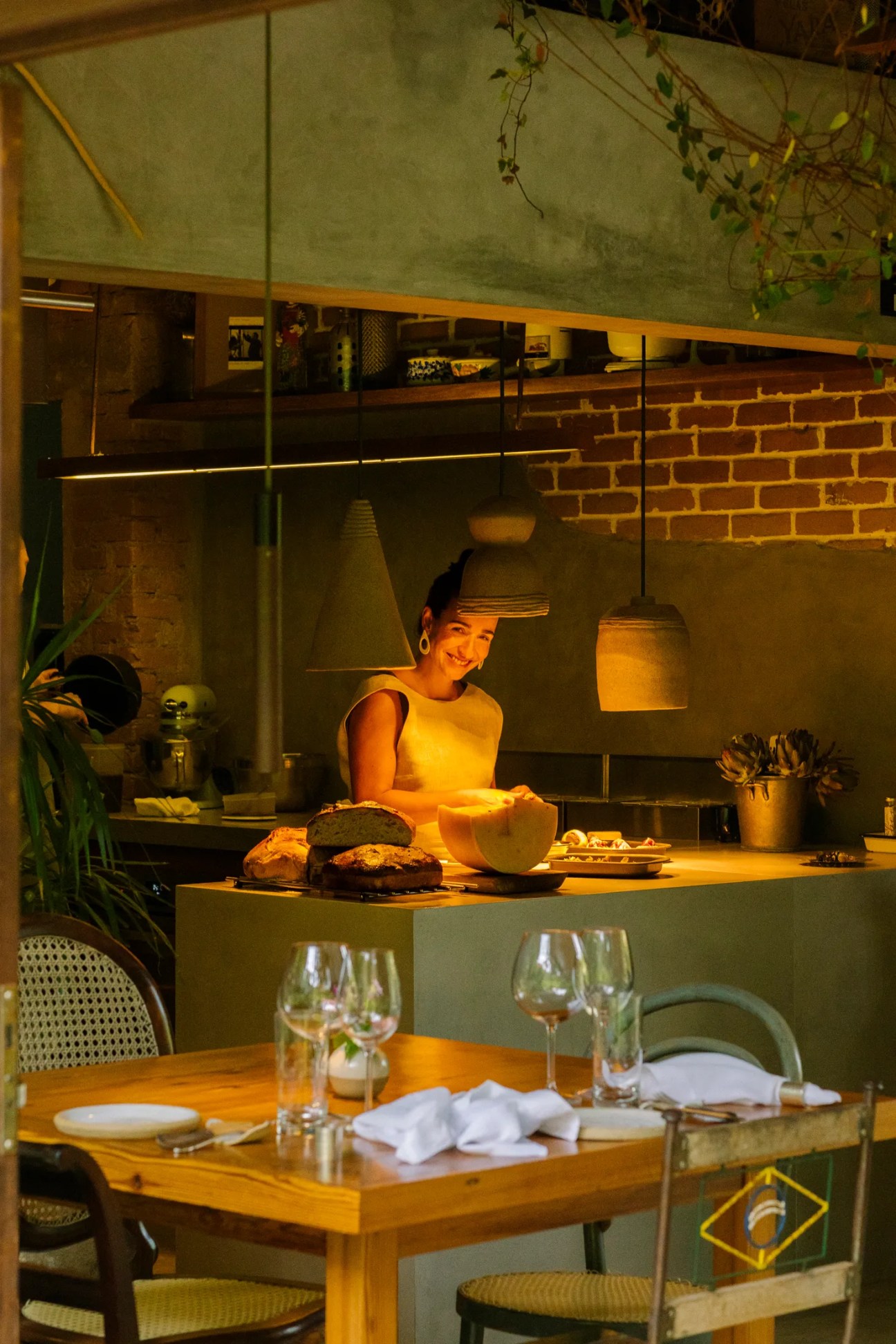

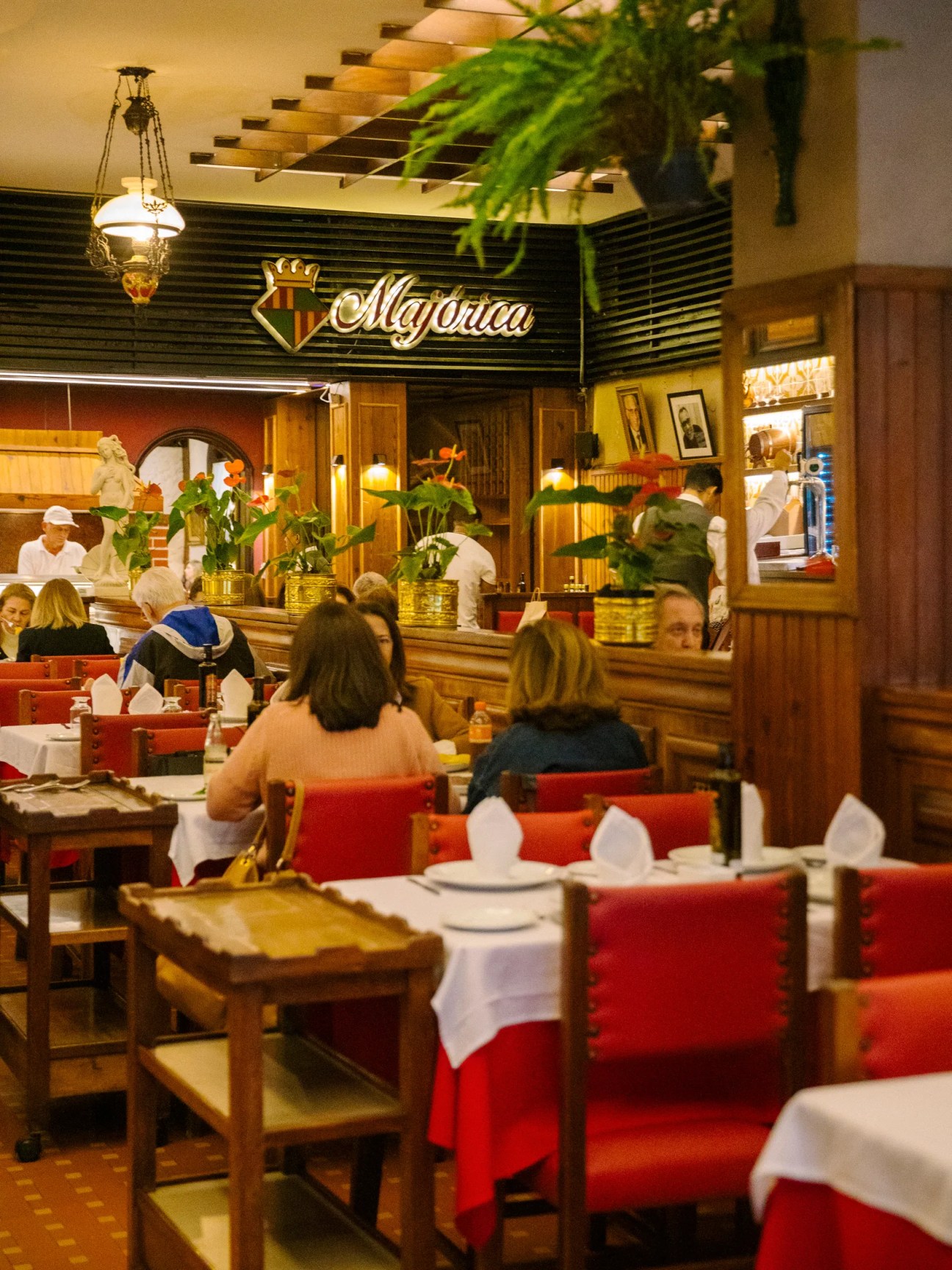
4.
Newcastle
Australia
This city’s 320,000 residents have the best of the Australian east coast: sandy beaches, affordable house prices, a flourishing culture and culinary scene, and close proximity to the Hunter Valley wine region. The historical port remains busy but, beyond its industrial roots, central Newcastle has been undergoing a rejuvenation. A new light-rail system was completed in 2019, connecting outer suburbs with the waterfront, and the old red-brick train station has been transformed into a covered market hosting pop-ups and events. At its heart is Darby Street, a stretch of cafés, restaurants and boutique shops. Here, young families, established residents and students with flat whites bask on sunny terraces between beach breaks.
Best for small-scale big-city living
Though it’s only a couple of hours from Sydney, laidback Newcastle has an established sense of self, with a strong cultural and business scene.
5.
Eindhoven
Netherlands
The size of this industrial city, with a population of about 250,000, belies its technical capabilities, which are among the strongest on the continent. It’s known as the Dutch Silicon Valley due to the city’s University of Technology as well as Eindhoven-founded electronics giant Philips, which have contributed to its reputation as an EU technology hub. But it’s not all semiconductors and lightbulbs; Eindhoven also has a strong design focus thanks to the Dutch Design Academy, established in 1947, which is one of the world’s leading design schools. The annual Dutch Design Week also takes place here, while rail links to Amsterdam, Rotterdam and Antwerp are fast and frequent.
Best for design and technology
In a country with one of the world’s most open economies, Eindhoven is an ideal spot for innovation and development in fields from agriculture to architecture.
6.
Basel
Switzerland
Switzerland’s oldest university town has always had a youthful energy. The city of 190,000 is the country’s cultural capital, with more than 40 museums and galleries – most notably the Kunstmuseum, containing the world’s oldest public art collection. It’s also the home of Art Basel, the world’s leading contemporary art fair, established to give smaller galleries global prominence. More recently, life sciences have become a major industry in a city considered to be a pharmaceutical hub and a beacon of technology, attracting more than half of Switzerland’s employees in the field. This well-connected town on the Rhine has been sweeping up students, entrepreneurs and creatives in its fast-paced current for centuries.
Best for continental connections
In a city bordering three countries, residents can earn Swiss salaries with German expenses and French cultural life. What’s not to love?
7.
Victoria
Canada
Established as a trading post, Victoria (population: 92,000) is buzzing with young businesses, including award-winning furniture firm Part & Whole, established in 2018, and Shuck Taylor’s (stop by for the best oysters in town), which is shaking up the culinary scene. For its remote location, Victoria is surprisingly well-connected, with an international airport and frequent ferry trips to Vancouver (90 minutes) and Seattle (three hours). The city has a thriving media scene, with more than 10 radio stations, and magazines such as The Narwhal and Hakai. But key to Victoria’s appeal are the mountains, lakes and coastline surrounding it. You will hear of residents going skiing one day and swimming the next.
Best for going on- and off-grid
Like neighbouring Seattle and Vancouver, Victoria is a comfortable place to set up shop on the Pacific coast. But here you can be closer to nature without losing connectivity.
8.
Keelung City
Taiwan
There’s plenty to do – and eat – in Taiwan’s port city of Keelung, despite its small size. A 50-minute train ride from central Taipei, the coastal hub of about 350,000 benefits from close proximity to the country’s capital, as well as Taiwan’s strong business relationships with surrounding countries. Several easy day hikes start from Keelung, providing a great warm-up for a late feast – the city claims Taiwan’s best night market for seafood, with specialities such as swordfish, deep-fried crab and Taiwanese-style tempura. Keelung also has strong cultural significance – fortifications date from the 17th to the 20th century – while the mountain resort town of Jiufen is a short distance away.
Best for hiking and biking
Keelung’s surrounding landscape offers an abundance of walking and cycling trails along its rugged coast and through the surrounding mountains.
9.
Dunedin
New Zealand
Dunedin has a gothic vibe, to which the architecture (Edwardian) and fashion (with a penchant for black) contribute. But the city of 130,000 is also a beach lover’s paradise where residents are almost blasé about sharing their shores with seals and penguins. Despite this, music and fashion are what the city has become known for. Aspiring designers flock to Otago Polytechnic’s fashion school, while the established descend on its fashion week, with many creatives basing themselves here as a result. Dunedin’s prices are competitive, with affordable homes that enjoy sea views. The city is walkable but hilly. Residents defend their steep gradients as “good exercise”.
Best for setting up a remote outpost
Well connected to the rest of New Zealand but hidden from much of the world, Dunedin’s fashion and music scenes can be adventurous without fear of outside judgement.
10.
Toulon
France
Between the Med and the mountains, Toulon offers a change of pace with a dash of French flair. Until recently, the city’s reputation was that of a naval base overrun by drunken sailors but today the friendly port city boasts markets brimming with fresh produce, fashionable restaurants and fascinating culture. Annual events, including Design Parade Toulon – organised by the Villa Noailles in nearby Hyères – attract crowds of creatives from Paris and nearby Marseille. The city’s accessibility is also set to increase: more high-speed trains running between Paris and Toulon are being introduced in 2024.
Best for life by the Med
A mild climate facilitates morning dips in the sea, while cyclists and hikers can head into the surrounding mountains. The city’s economy is varied: fishing, winemaking and manufacturing of naval and aeronautical equipment all take place here.
11.
Patras
Greece
The port city of Patras might be one of Greece’s most densely built but it has found ways to inject stretches of open space into its bustling urban core, connecting residents to their seafront. New civic additions to this city of 220,000 include the pedestrianisation of main roads, the new North Park (opening along a stretch of seafront) and the renovation of industrial spaces. An abundance of good food and wine retailers makes it hard to leave the city but day trips are a thing of ease, with the historic towns of Nafpaktos, Mesolongi and ancient Olympia all nearby. Greece’s unsung Kalavrita ski centre is a short drive away too and ferries connect residents to the Ionian islands and Italy.
Best for budding winemakers
Patras has a long history of wine production. Nearby 19th-century castle-cum-winery Achaia Clauss is famous for sweet mavrodaphne.
12.
Salzburg
Austria
At the foot of the Alps, on the border with Germany, Salzburg isn’t lacking in charm thanks to its strong cultural pedigree and ready access to hiking and skiing. With a population of 150,000, it’s Austria’s fourth-largest city, yet remains cosy and walkable. Medical technology is big business here, with more than 60 companies combining for a €1bn annual turnover. The city is divided by the Salzach river, which flows gently through the centre – a pretty backdrop to Salzburg’s 50 galleries, numerous theatres, elegant historical buildings (such as the Mirabell Palace and Gardens) and smart cafés. And if the small city starts to feel too cosseting, Munich and Vienna are both only a short train ride away.
Best for an outsized cultural scene
Mozart’s birthplace hosts the annual Salzburg Festival, which dates back to 1920 and is still one of the world’s key events for opera, music and drama.
13.
Helsingør
Denmark
This Danish city of 63,000, famous for being home to Hamlet’s castle, offers more than a seaside setting for a Shakespearean drama. A 45-minute train ride from central Copenhagen, Helsingør has the charm of an 800-year-old medieval town while being an attractive and dynamic place to live. Residents can access a wealth of cultural destinations, from Bjarke Ingels’ maritime museum to Jørn Utzon-designed landmarks and kilometres of pristine sandy beaches. There are also efficient transport links, with regular train services to Copenhagen Airport, and neighbouring Sweden is only a short ferry ride away. Setting up shop here is a breeze too, thanks to Denmark’s business-friendly environment.
Best for cabin life
Urbanites like to spend weekends on the picturesque coast here, tucked away in wooden cabins. Helsingør’s outskirts are perfect for such dwellings.
14.
Girona
Spain
Girona’s natural landscapes and proximity to Barcelona have long attracted cyclists looking to ride along the Costa Brava. But in recent years this city of 100,000 has attracted creatives and entrepreneurial types too, with many staying for the long-haul. From independent bookshops to cafés and ceramics studios, Girona has a wealth of fresh businesses, many of which are run by newcomers. It’s an offering strengthened by a bustling food scene, which includes the likes of recently opened Restaurante Normal and the Cafè Royal. The appeal, aside from a quieter pace of life, also lies in the host of international connections from the city’s airport, meaning that Europe’s main metropolises are never far away.
Best for art enthusiasts
Girona’s seven major museums offer an ever-evolving mix of art, from antiquity to the contemporary.
15.
Coimbra
Portugal
Evenings in Coimbra, a city of 150,000, are often long and languid. And while the city’s sunny climate can occasionally be tempered by rainfall, that won’t stop residents gathering outside year-round to enjoy the beauty of its cobblestone streets and Moorish architecture over an alfresco drink. Coimbra is home to Portugal’s oldest university, the country’s second-largest library and the famed Machado de Castro National Museum. There’s a range of industries established here too, from pottery and textiles to paper production. Easy transport links to Lisbon and Porto have made Coimbra an increasingly popular location for start-ups in emerging industries such as energy and healthtech.
Best for aspiring writers
Dubbed “the city of students”, Coimbra feels like Porto’s bookish younger cousin. Its many museums and bookshops make up a vibrant patchwork of cultural organisations.
16.
Lugano
Switzerland
Nature lovers will find their calm in this city of more than 60,000, the largest in Switzerland’s Italian-speaking Ticino region. From snowy Alpine peaks to clear tranquil waters, Lugano’s surrounding scenery is all natural beauty, while the city’s proximity to the Italian border lends it a Swiss-Mediterranean flavour. Exhibition and event space Lugano Arte e Cultura houses the prestigious Orchestra della Svizzera Italiana, while fashion enthusiasts can enjoy the Bally Foundation’s newly minted headquarters. Lugano’s biggest pull, however, is its namesake lake, which winds along the Swiss-Italian border, attracting a well-heeled clientele to its glamorous boutiques and hotels – only natural, given that Italy’s fashion capital, Milan, is a mere hour away.
Best for swimming and snow
Due to Swiss efficiency, Italian energy and proximity to lakes and mountains, Lugano offers year-round outdoor fun.
17.
Brescia
Italy
Located in Italy’s productive northwest, this city might have made a name for itself in metallurgy but it shows much more than just manufacturing chops these days. With a population just shy of 200,000, Brescia is less than an hour away from Milan and well connected to Verona and Bologna, as well as the Alps and Dolomites. Though other Italian cities get more press for their looks, Brescia has a stunning (and historic) centre that includes the eighth-century San Salvatore-Santa Giulia Monastery. It also has a rich creative scene, highlighted by being named an Italian capital of culture in 2023, along with nearby Bergamo. And did we mention that it’s near Lake Garda and the Franciacorta wine country?
Best for fine food
In an area that served as European Region of Gastronomy in 2017, Brescia is the main source of Italian caviar and franciacorta wine.
18.
Augsburg
Germany
This Bavarian jewel can trace its roots back to Roman times. Its modern industries range from fuselage assembly to car production and logistics, meaning that gdp in Augsburg is comfortably above the national average. As well as having a decent university and property prices below the rest of the region, the city of 300,000 is a beautiful place to wander thanks to the almost constant presence of water, from canals to fountains, all thanks to an ingenious, Unesco-recognised system that dates back to the 14th century. Augsburg’s location in the south of Germany grants it decent summers and proper winters, with easy connections, should they be needed, to nearby Austria, and Italy beyond.
Best for proximity to the big smoke
Augsburg is only half an hour from the Bavarian capital, Munich. Despite its closeness, Augsburg hasn’t become swallowed by its big brother. Rich in history, the city has its own identity.
19.
Luxembourg City
Luxembourg
Home to EU institutions and a thriving banking industry, Luxembourg City is a European capital in the guise of a liveable small town. For its 133,000 inhabitants, that’s a pretty good deal. Their home offers all the business opportunities, transport links and entertainment of big cities without excessive concrete or crowds. More than 20 per cent of the city’s surface is made up of forests. Biking and walking are encouraged; Luxembourg is investing in cycle lanes and has made all public transport free to ease congestion. Add to this the fact that it’s safe, has a multilingual population and is packed with museums and the reasons for setting up a home here are many.
Best for a European business hub
To diversify its economy, the local government launched Luxembourg City Incubator, which provides generous grants for start-ups.
20 – 25
Honourable mentions:
Six more small cities offering plenty of good reasons to put down roots.
20.
Santa Cruz, USA: This coastal city of 60,000 has a pleasant climate, vibrant beach culture, charming Victorian architecture and a dynamic downtown. San Francisco is only an hour’s drive to the north, while nearby Santa Cruz Mountains and Santa Clara Valley are teeming with wineries.
21.
Pula, Croatia: The tripartite identity of Istria, which sits across Croatia, Slovenia and Italy, is keenly felt in its capital, Pula (population: 60,000). It has a robust winemaking tradition, and a recent EU investment into a major business centre means the city’s entrepreneurial spirit is ripe.
22.
Charleston, USA: The South Carolina city has long drawn tourists to its food scene and historic pastel buildings on the waterfront. But now the city of 150,000 is enticing people to stay for good, lured by a temperate climate, breezy lifestyle and young, energetic community.
23.
Essaouira, Morocco: Perched on the Atlantic, this charming Moroccan enclave of 70,000 has always attracted a bohemian crowd. Relaxed and friendly, Essaouira’s heart is its ancient medina and the town is studded with art galleries and intriguing souks.
24.
Krosno, Poland: This city of 50,000’s strong cultural heritage has earned it the nickname “little Kraków”. Famous for its historic glassworks, a dozen smaller plants and workshops make it ideal for anyone looking to establish their own artisanal brand.
25.
San Miguel de Allende, Mexico: From its colourful colonial-era façades to the eclectic characters who live and work here, this city of 175,000 vibrates with beauty, art and intrigue. It is now attracting an international crowd looking for a place to set up creative ventures at affordable prices.
Outward shift
It’s morning in Ho Chi Minh City and motorcycles swarm the roads as office workers fill the pavements, drinking hot coffee in the sweltering heat. Amid the everyday mayhem, the first sign that something new is afoot appears in fetching cyan blue. In early 2023 a fleet of electric cabs owned by Vinfast arrived in the country’s commercial centre. For the owner of the Vietnamese automaker, starting a taxi company was a shortcut to getting these vehicles on the road in a country that has historically had low levels of car ownership.
Vietnam’s communist government opened the nation to private enterprise in the late 1980s and, after several false dawns, a middle class is at last emerging. Ho Chi Minh City is the southern gateway to this rapidly growing country of about 100 million people: skyscrapers are rising above the shophouses; two-bedroom flats are selling at New York-style prices and Starbucks has established a presence throughout the city. Michelin recently handed out its first stars to restaurants here and the French, who inspired bánh mì baguettes in the colonial era, continue to influence food retail. Though business has been bumpier than expected in the past year, one of Southeast Asia’s most enterprising cities is poised for a bumper 2024 and beyond.
Australian entrepreneur Darren Chew has had a front-row seat to Ho Chi Minh City’s transformation. Chew, who originally landed here as a tourist on his way to Europe, co-founded furniture business District Eight in 2010. “When we started out, there wasn’t a very big local market,” he says, sitting on a couch inside his company’s maiden showroom. The downtown shop opened in 2022 as a pop-up; a second, larger showroom, studio and event space will open soon. “We are leaning into the Vietnam thing a little more,” adds Chew, who oversaw District Eight’s debut at Salone del Mobile in 2023.
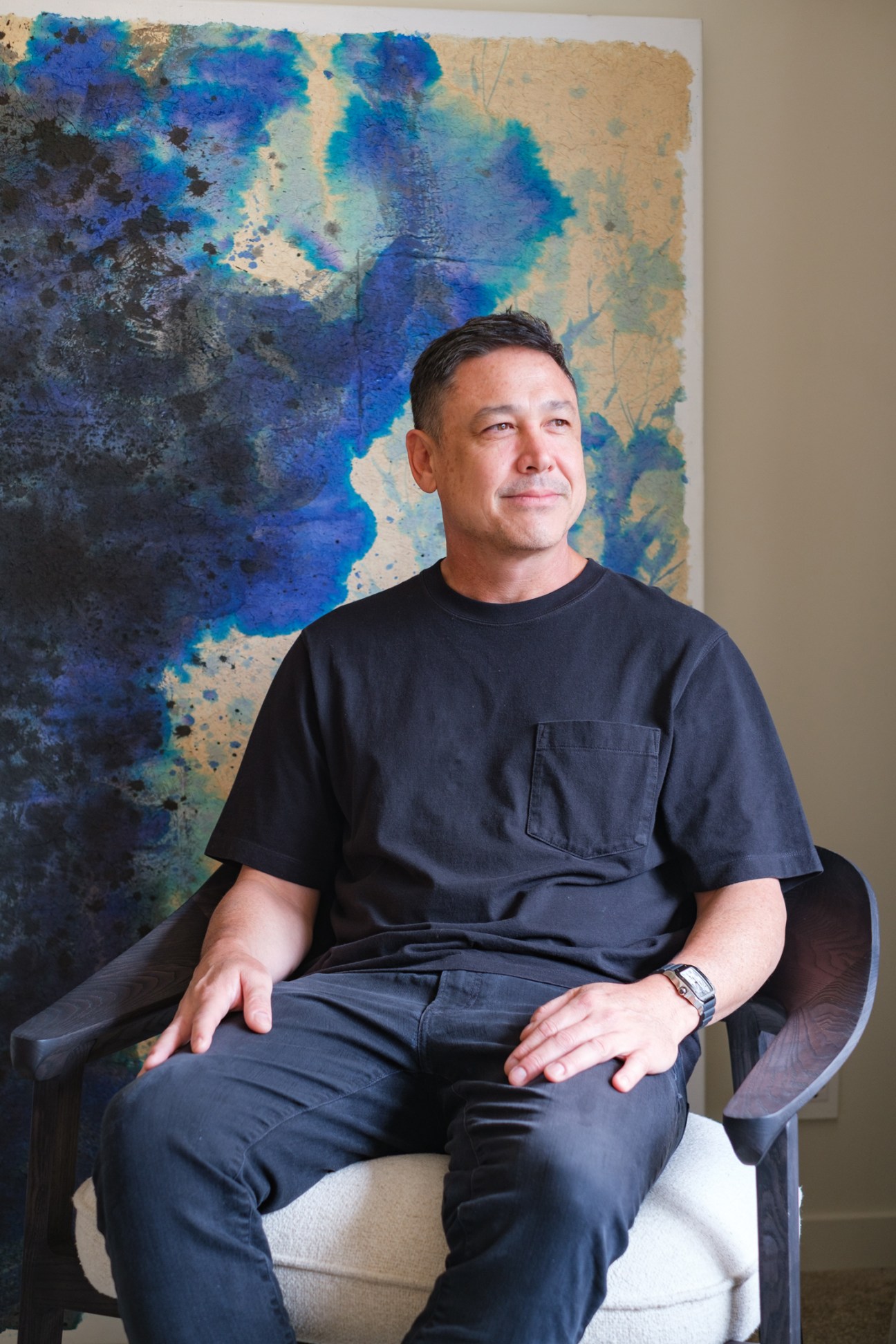
The business is named after the location of its original factory (Ho Chi Minh City is divided into 24 mostly numbered districts). That first building was turned into a school by the local government; the company’s second factory became a residential development. Chew must now drive for an hour to a third site in neighbouring Long An province. The journey takes him past a giant Taiwanese-owned factory that produces footwear for Nike and Adidas. Ho Chi Minh City’s largest employer, Pouyen, has laid off thousands of staff this year in response to sluggish international demand. Chew, meanwhile, has been busy adding space to meet a backlog of US orders. Once complete, District Eight’s third factory will enable the company to double its turnover by the end of 2024.
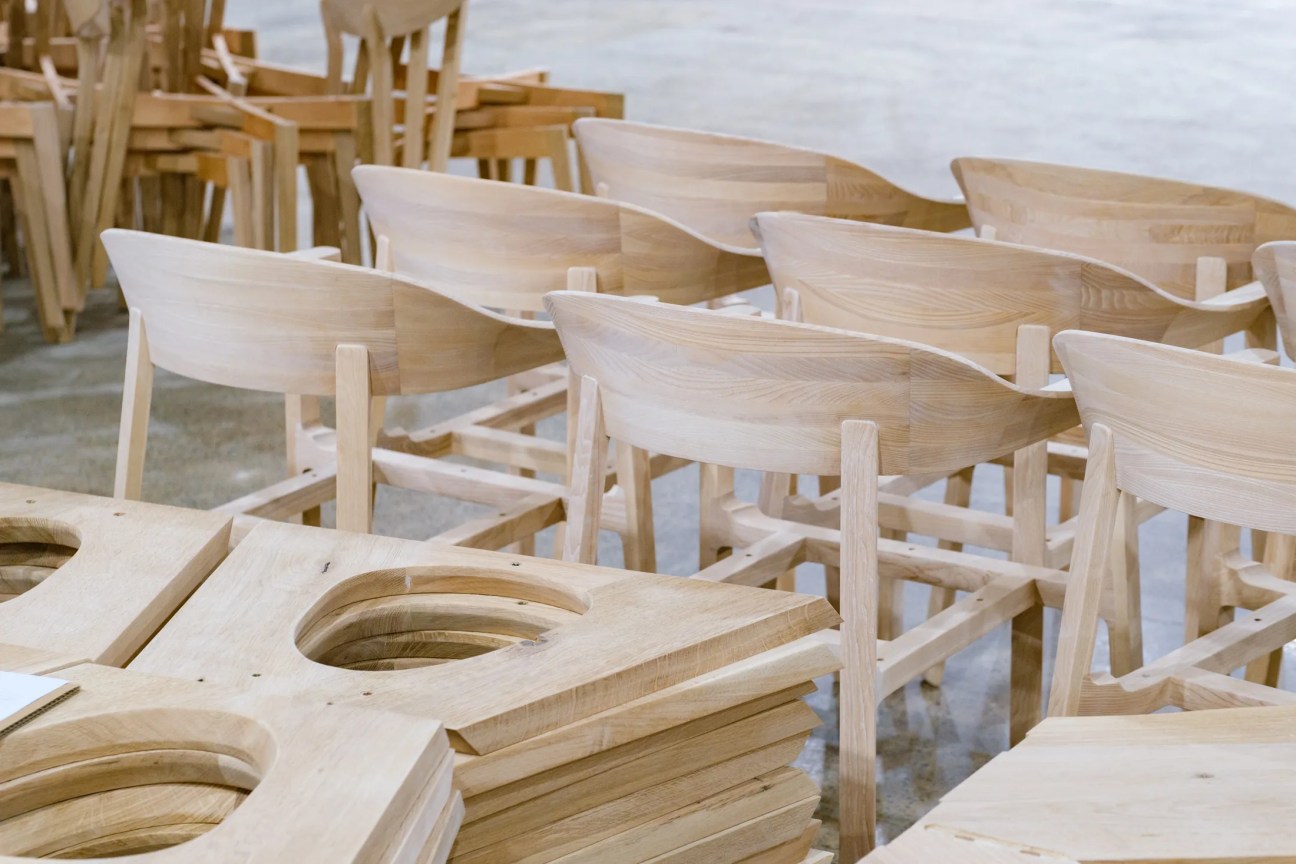
“Vietnam is a well-established manufacturing hub but the products are usually only made here, not designed here,” says Chew, who wants private-label furniture to generate half of his company’s revenue. During Monocle’s visit, Chinese furniture distributors who saw District Eight at Salone del Mobile and are interested in opening a Shanghai showroom are in Long An. This direction of travel from Vietnam to China – particularly at a time when the business news is full of stories about low-cost manufacturing moving the other way – suggests that Vietnam can be more than a substitute supply chain or a source of cheap labour. Indeed, the country is expected to become a top-10 economy by the end of the decade. Indochina Capital made its name building Vietnam’s top luxury resorts. These days the property investor, which is backed by Japanese construction giant Kajima, is developing two businesses: a hotel brand targeting 70 million domestic travellers and modern factories for European manufacturers with sustainability mandates. “Vietnam needs to define itself,” says Michael Piro, the firm’s coo and co-founder and CEO of Wink Hotels. “Ho Chi Minh City is at an inflection point, somewhere between frontier and big city.”
Foreign capital and talent has played a pivotal role in building the new Vietnam. Overseas Vietnamese are also returning to their parents’ homeland, bringing international standards, as well as an eye for design and creature comforts, from pizza to professional sports. But the need to import talent from abroad is declining across industries as a well-educated and hungry domestic workforce rises to the top.

Seoul focus
Washington might be hugging Hanoi tightly right now but it’s Seoul that is spending the most time and money in Vietnam. South Korea is the country’s biggest foreign investor and its financial commitments go well beyond Samsung’s smartphone factories, taking in sectors from insurance and mobility to pharmaceuticals and defence. Hyundai is matching Toyota here, while Shinhan Bank has replaced hsbc as the largest foreign high-street lender.
Seoul views Vietnam as a big market without the political baggage of China or Japan and it also shares certain cultural ties and customs with the country. South Korean tourists outnumber arrivals from anywhere else and can reliably be spotted heaving golf clubs through the airport, tacking 18 holes onto a business trip. According to private equity bosses in Ho Chi Minh City, most major South Korean companies have a Vietnam strategy; managers are under pressure to find investments and they tend to have a higher risk tolerance than their Japanese counterparts. Seoul also has hi-tech jobs that the Hanoi government is keen to attract.
In September, Joe Biden visited Vietnam and threw his support behind the development of a domestic semiconductor industry. Within weeks, South Korean chip manufacturer Hana Micron announced a $1bn (€950m) investment. But the Vietnamese consumer can be difficult to crack. South Korean food-delivery app Baemin seemed to do everything right when it entered the market, hiring the creative agency Rice Studios to localise its platform. But the company is now winding down its delivery business and pivoting to skincare and make-up. If Baemin’s Lazy Bee beauty products prove a hit, they could spare some blushes back in South Korea.
“Many Vietnamese who have studied in other countries are coming home,” says Chris Freund, founder of Mekong Capital, from his office in District One, where the company mostly employs local staff. Freund was an early private equity investor in Vietnam. His firm started out in low-cost manufacturing for export, before it switched to the consumer segment and struck gold with an electronics retailer. Its latest fund is betting on consumer finance and a biotechnology start-up founded by Vietnamese scientists with international degrees. “The market opportunity is great and people here are very open to foreign investment,” he says, looking out at the half-completed towers that make up the city’s skyline.
Southeast Asia’s largest steelworks is a two-hour drive east of downtown Ho Chi Minh City, close to Phu My’s deep-water river port. Inside vast factory buildings, coiled sheets of Hoa Sen’s prime hot-dipped galvanised steel await shipment to Antwerp and Leixões in Portugal. Factory bosses expect to be operating at close to capacity by April 2024, a year after production hit bottom. Vietnam’s economy came roaring out of the coronavirus restrictions in 2022, posting 8 per cent growth, before stumbling this year as a result of the global downturn and a domestic political scandal.

“It’s a bump in the road,” says Tammy Le, deputy chair of Hoa Sen Investments, during a tour. Le’s father founded Hoa Sen in 2001. The publicly listed steel company recently ventured into home improvement, opening more than 100 shops selling toilets and tiles. “There’s so much happening here,” says Le, who was educated in the US and returned home not long after Vietnam’s first McDonald’s opened in 2014. The 28-year-old joined her father earlier this year to lead the company’s diversification into various industries, including healthcare, student accommodation and entertainment. “Vietnam is the new land of opportunity,” she says, echoing the type of boundless optimism that is apparent on the ground but is rarely reflected in the international business headlines.
Export volumes might go up and down from one quarter to the next but few business leaders here appear to be basing their long-term decisions on factors such as the number of smartphone units leaving Samsung’s factory outside the capital, Hanoi. Foreign direct investment into Vietnam has continued to climb throughout the downturn and chambers of commerce are having to hire more staff to handle enquiries from their home markets, bolstered by the geopolitical trade winds blowing manufacturing away from China.
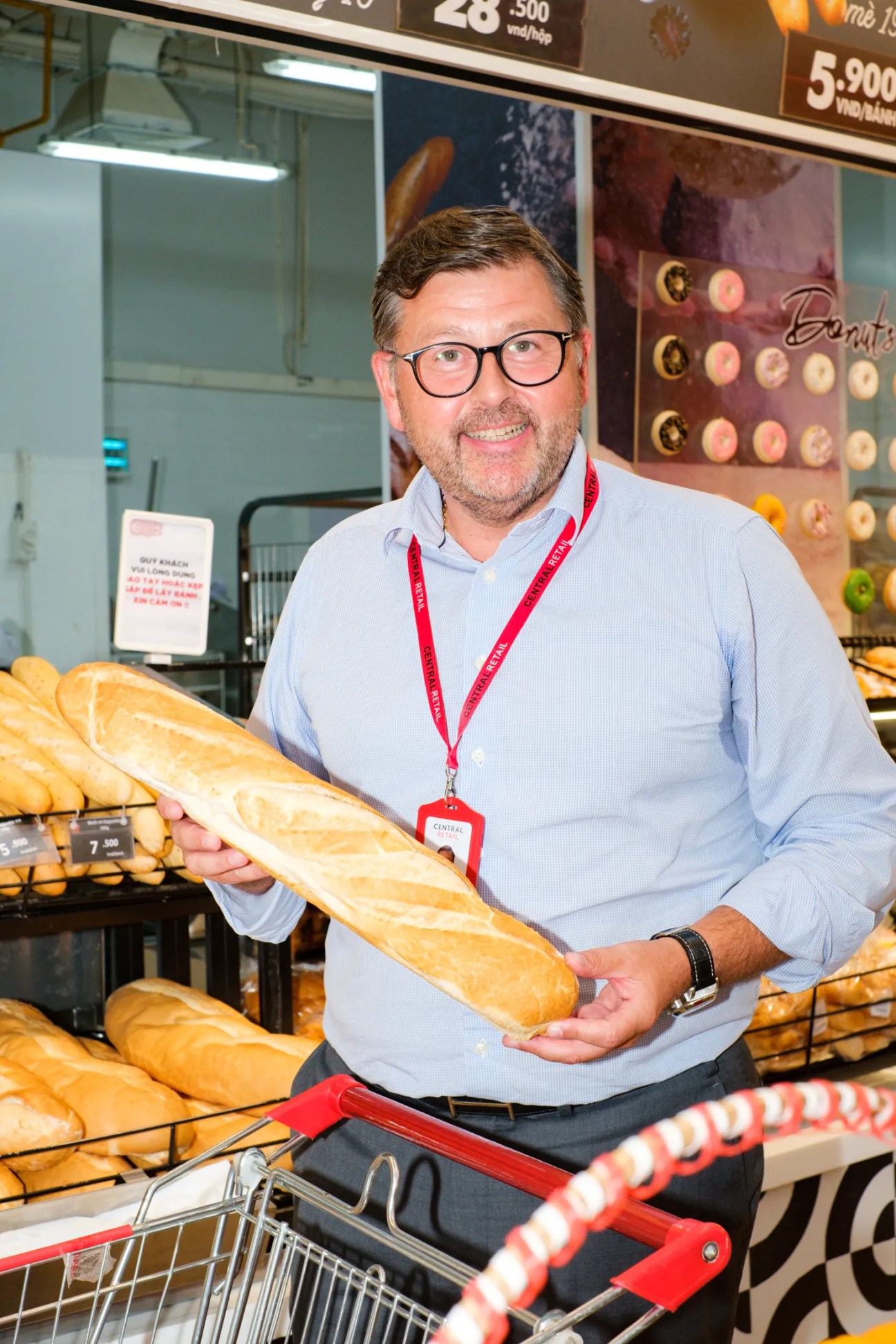
Thai company Central employs about 15,000 people in Vietnam, where it is the leader in hypermarkets. Olivier Langlet joined the company as a country CEO from German multinational retail corporation Metro at the height of the pandemic. “We want to double our number of malls to a minimum of 600,” he says, as he outlines plans to invest $1.45bn (€1.3bn) over the next four years. As he shows Monocle around one of Central’s Go! hypermarkets, he speaks excitedly about the market penetration of modern shops – in Vietnam, it is barely into double digits, which is very low compared to, say, Thailand. “We have a very nice road ahead of us to develop the business and our footprint here,” he says.
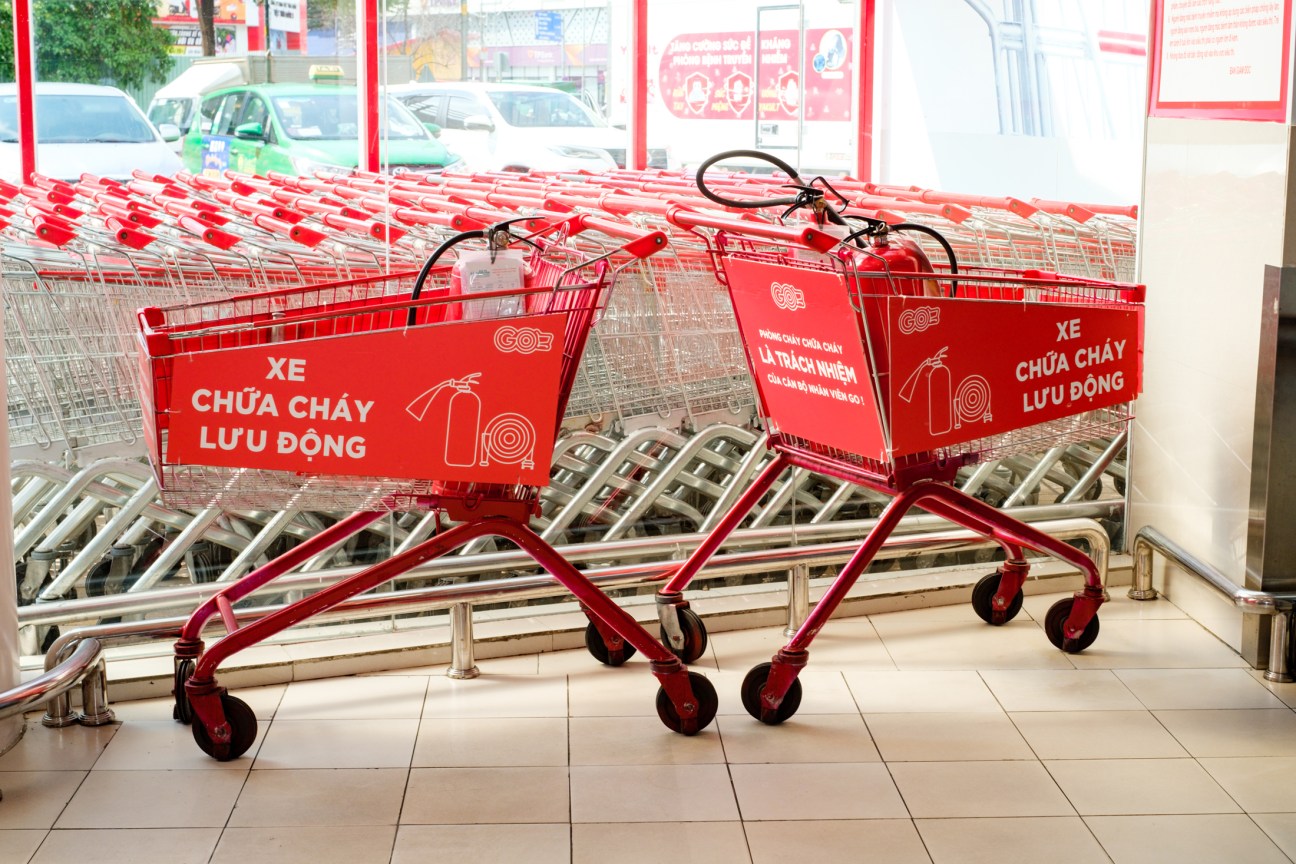
Central is considered a successful case study but making Vietnam profitable has required flexibility and patience. Langlet’s business outlook for the rest of this decade is very different to how things were when the Thais arrived in 2012 with department stores and franchised fashion brands. Most of the fashion shops have closed and there are now only two department stores. “We might come back to fashion in a couple of years,” he says.
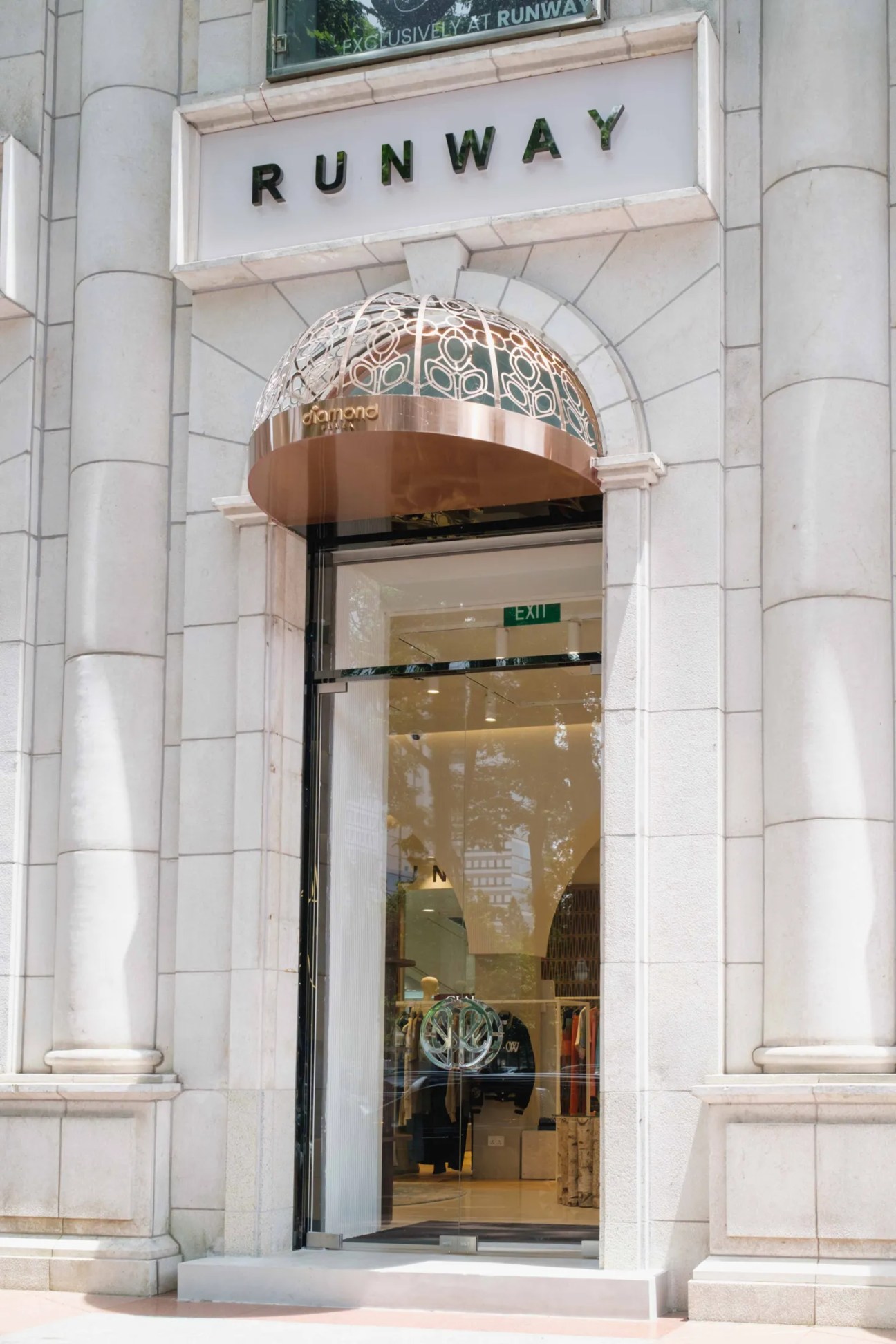
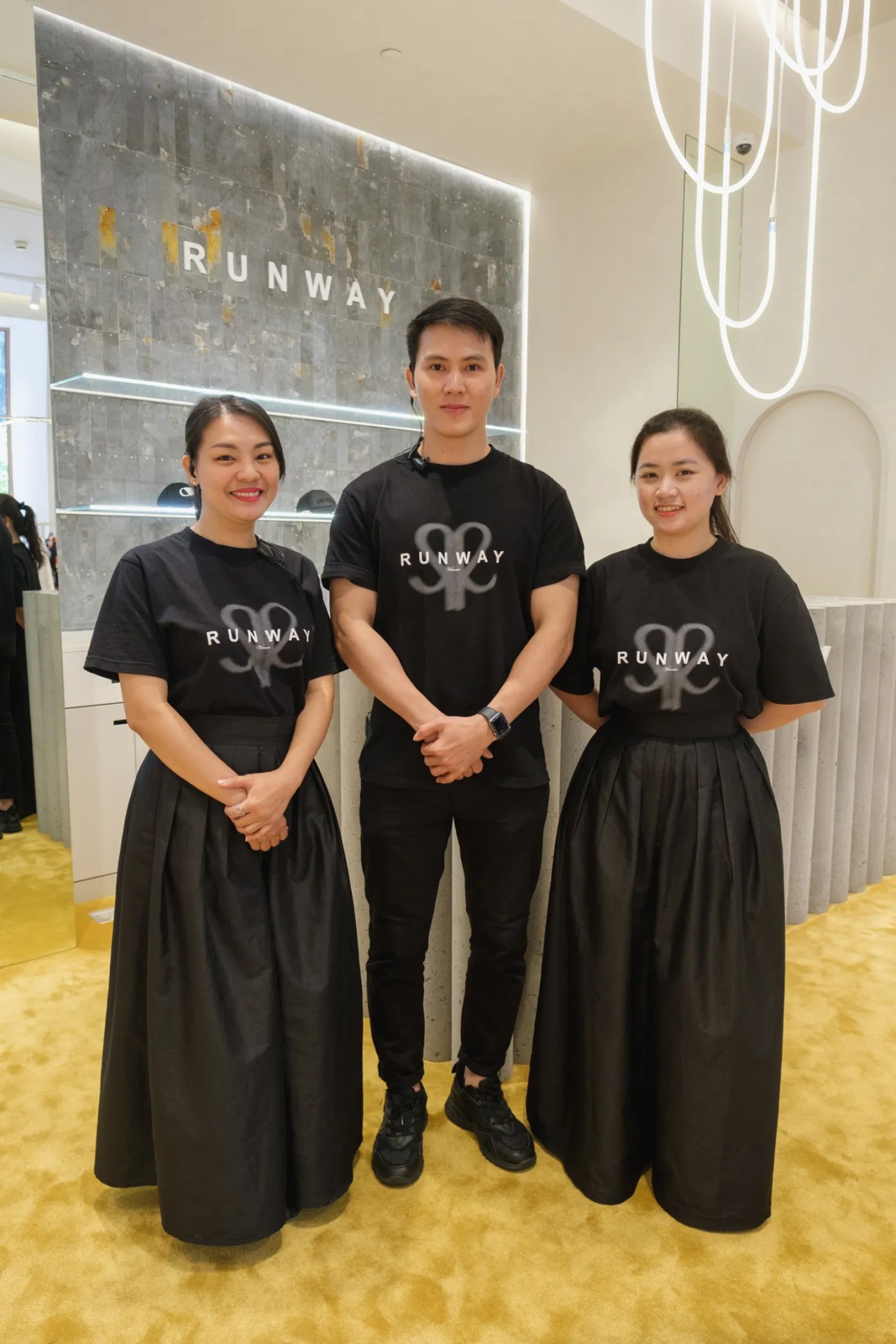
Many businesses mistimed their market entry – and not just foreigners. Tran Thi Hoai Anh has been a trailblazer for European fashion retail in Vietnam. Starting in 2007, she opened a string of monobrand shops for the likes of Chloé, Loewe and Balenciaga, later replacing them with a multibrand shops and concept store Runway, which continues to grow. “It was too early for lesser-known labels that weren’t at the level of Gucci, Dior, Hermès or Louis Vuitton,” she says. These days, there is plenty of money in Ho Chi Minh City and the lure of Vietnam is likely to increase next year when various free-trade deals come into effect, making it easier for overseas brands to open retail outlets.


The most striking examples of Ho Chi Minh City’s economic rise can be found in property. Englishman Philip Cluer is the coo of developer Refico. He calls the current market “commercially buoyant” and for good reason. Floorspace at The Nexus, a Refico-developed office tower that is expected to open in District One in 2024, has been snapped up by a range of blue-chip foreign businesses that are clearly willing to pay Hong Kong-style rents for a prime spot in what is still a developing country. The residential sector is similarly frothy. The River is Refico’s recently completed residential tower in Thu Thiem, a greenfield area of District Two on the other side of the Saigon River. Only a few apartments remain on the market, despite a two-bed property costing about $500,000 (€475,000). The address is proving popular with South Korean and Japanese tenants, who receive a furnished apartment, fantastic views and use of an outdoor 50-metre pool for an average of $1,700 (€1,610) a month.
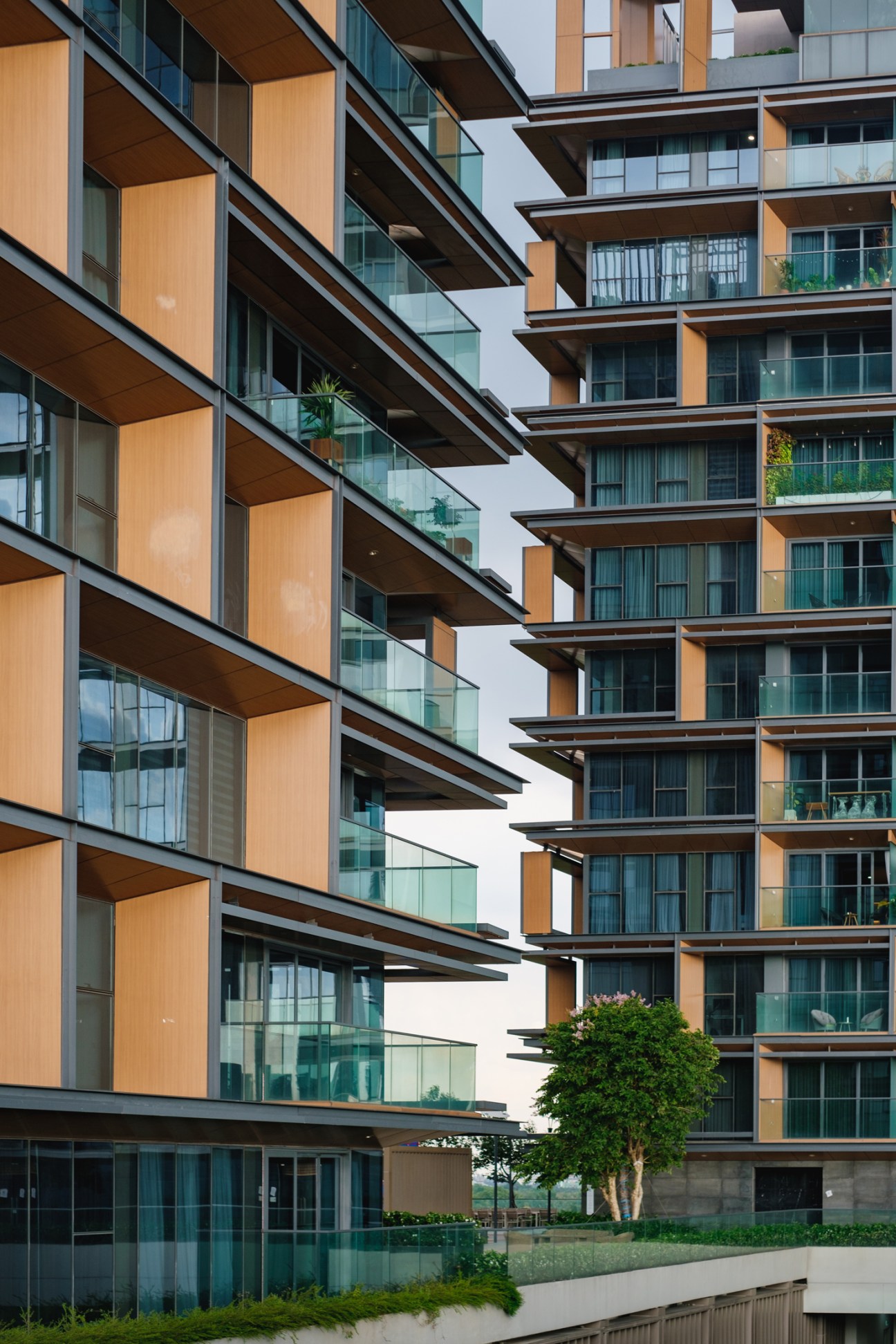
Thu Thiem is being marketed as Vietnam’s answer to Shanghai’s Pudong, the former rice field that was transformed into a vertiginous financial district opposite the Bund waterfront area. There’s certainly some geographic merit to this sales pitch, along with the towering ambition to back it up. A 333-metre-high Ole Scheeren skyscraper that will be Ho Chi Minh City’s tallest building is among the projects on the drawing board. That should excite anyone who has been to Shanghai.
The comparisons to China are apt in more ways than one. At the end of 2022 a Beijing-style anti-corruption drive took down one of the southern city’s most prominent property tycoons. Debt markets froze and private property firms scrambled to shore up their finances, mothballing major developments and offloading assets. Since then, jittery officials have been too nervous to grant new approvals. The extent of the fallout took everyone by surprise, hitting adjacent industries, from mattress sellers to supermarkets. Nor were international firms spared. The Mandarin Oriental Saigon was forced to put on hold plans to open at a prime address owned by the tycoon, who is still languishing in jail.

People speak about the scandal in hushed tones, strictly off the record. One common takeaway is the importance of finding a trustworthy local partner. Ultimately, no company should invest in Vietnam believing that Hanoi is fundamentally very different from Beijing, nor should they see Vietnam as a bastion of democracy, free speech or human rights. The one-party system and five-year plans deliver the same pros and cons: stability and predictability but also opaque decision-making, corruption and lack of accountability. Hanoi’s approach to the coronavirus pandemic was straight out of Shanghai’s playbook: workers lived in their factories for months, supermarkets were shuttered and the army delivered groceries. With the poor health of Vietnam’s most powerful leader a matter of public record, another major political earthquake is expected.
The effect of placing Ho Chi Minh City on ice for a year has been to create an even bigger property-development pipeline. One executive referred to 2023 as the year of paperwork, implying that when the political frost eventually thaws, companies will be ready to get going.
Some cranes and construction vehicles are already moving on the skyline but the biggest ribbon-cutting will arguably happen underground. A Japanese-funded metro is finally ready to begin operating, six years behind schedule. Though one line won’t change the daily commute for everyone, the new public transport infrastructure is a milestone. Shanghai reached this point in the 1990s and Bangkok followed at the end of that decade.
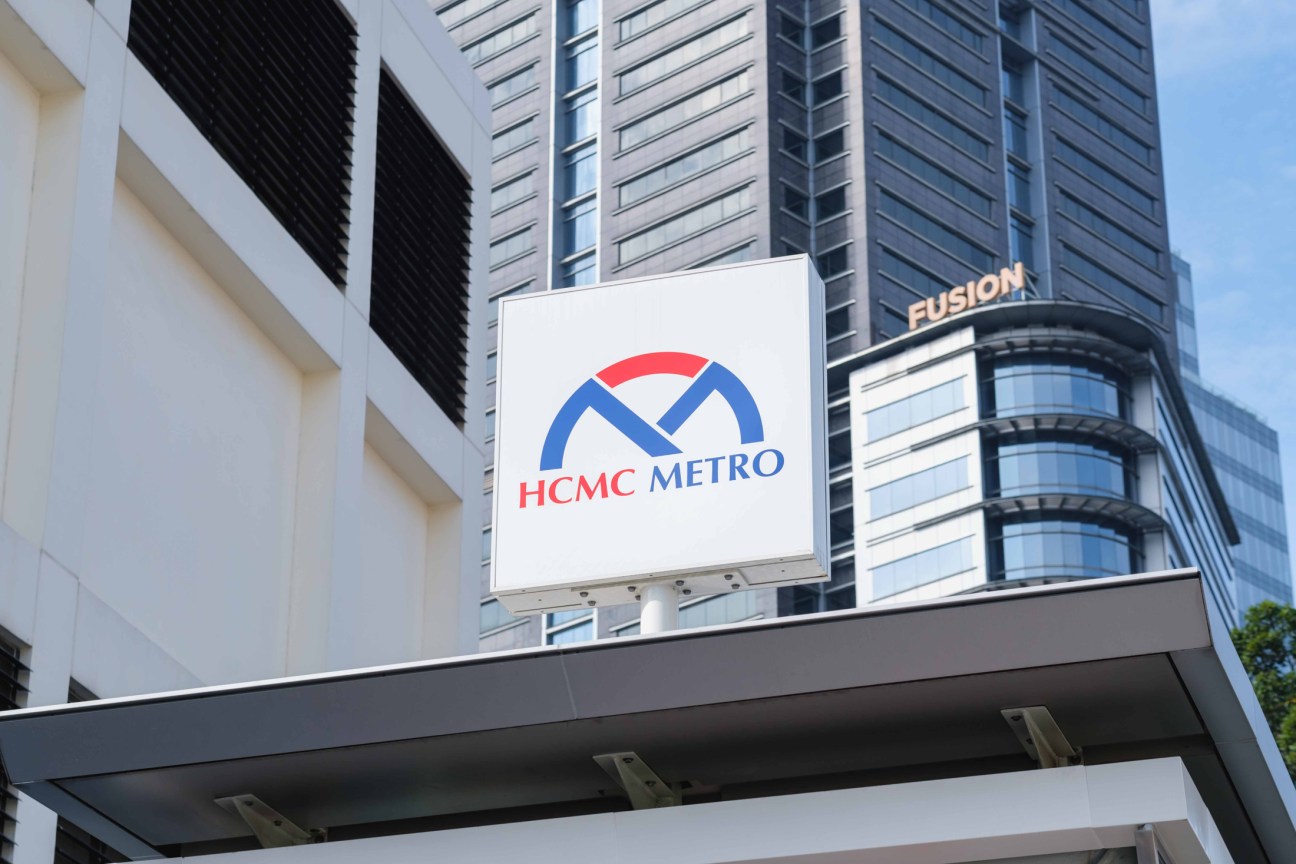
In this respect, Vietnam’s largest city is trailing behind its peers by at least 20 years. “What Thailand has now, Vietnam will need: the basics of any developed country,” says Hoa Sen’s Tammy Le. According to the World Bank and imf, the country’s economy will grow by about 5 or 6 per cent a year in the near term but those numbers are likely to be revised up as Ho Chi Minh City gets back to business. The next decade will bring more luxury apartments and modern shopping centres, as well as a prestigious design school, arenas and a proper conference centre. The longest highway in southern Vietnam will open and a huge international airport will replace the poky Tan Son Nhat – a frequent source of frustration for arrivals, who have to endure its tiresome queues. All of that construction should mean bigger commercial opportunities, a far better lifestyle and plenty more mayhem.
Second wind
If it takes a long time to turn a cargo ship around, try getting the entire shipping industry to change course – to a cleaner future. Having spent 200 years burning the dirtiest combustibles, some ship owners are discovering that the most promising technology for their industry is one abandoned years ago: the abundant, free fuel called wind. That’s why cargo decks are sprouting all manner of breeze catchers, each an ungainly prototype, competing to see which is best at augmenting grubby engine power with wind-assisted propulsion.
While these eye-catching experiments make headlines and win investment, a smaller fleet of wind-powered pioneers is sometimes overlooked. These heritage wooden schooners and newly designed sailing ships have formed a loose global alliance that’s attracting venture capital and enjoying a told-you-so moment. The maritime industry has agreed to quit carbon by 2050 but this vintage fleet is proving that, for some cargo, emissions-free shipping is available now. It might seem that the giant cargo carriers revisiting sail power and their tiny brethren who never deserted tides and trade winds sit in opposite camps. But differences aside, their combined efforts are shaking up an industry that has long been resistant to change.
It took the hottest summer in history for the UN’s International Maritime Organization (IMO) to finally commit to quitting carbon “by or around 2050”. While the finish line remains maddeningly vague, the starting gun has fired. Few sounds are sweeter to John Cooper, veteran of both McLaren Formula 1 and the Americas Cup. Now ceo of maritime innovator bar Technologies, he’s confident that ocean carriers will be transformed by sail power. Or at least, by the sail his team is designing: Windwings.
These giant steel and glass-composite contraptions can be raised to provide propulsion, lowered in a storm and manoeuvred according to the direction of the wind. The Pyxis Ocean, a bulk carrier, was the first ship retrofitted with this new technology. Owned by Mitsubishi Corporation and chartered by agricultural powerhouse Cargill, the Pyxis Ocean emerged from its dry dock in Shanghai with two huge Windwings lashed to its deck. Though they might not be pretty, these sails do look like they mean business.
We catch up with Cooper during his early morning drive to bar’s Portsmouth HQ. He’s cautious of making too many promises about Windwings’ performance. Don’t expect headlines, he says, like: “Technology provider stuns the world with their own figures.” What he does claim, however, is that his sails “have substantially more thrust than anybody out there”.
The Pyxis Ocean has already completed its first voyages – from China to Singapore, then on to Brazil and Poland – with Cooper commissioning independent experts to publicly report on its emission reductions. “No other wind-propulsion company has ever done that,” he says. “And I’ll tell you why: because they’re not making the savings that they claim. We will be dominant in this market.”

But market domination won’t come without a fight. Along with competing rigid-wing designs entering the fray, a dizzying variety of novel wind-propulsion ideas are taking shape. While cleaner fuels will also contribute to greener sailing, the surest way to reach the IMO target – and minimise looming carbon taxes – is to find the best wind solution. As a result, a parade of varied sails is dotting the horizon.

Tyre-maker Michelin is developing – what else? – inflatable sails. A couple of its Wing Sail Mobility models already help to propel the 12,000-tonne carrier MN Pelican between the UK and Spain. Modelled after aircraft wings, the retractable sails allow for navigation in ports and under bridges, and are in sea trials to assess savings. Not to be outdone, French designer Airseas looked to kite surfing for inspiration. It wants to help pull cargo ships by using flying sails, which would be attached with cables to the bow. Transatlantic tests are under way.
Meanwhile, Norway’s Hurtigruten is designing an eco cruise ship. Sketches show a classic floating hotel: bulging prow, gleaming decks and three massive smokestacks amidships. But instead of smoke pouring from the chimneys, giant sails pop out, covered in solar panels.
Whichever design wins out, the reward might be substantial. Out of about 60,000 carriers worldwide, few are currently using wind-assisted propulsion. But according to non-profit International Windship Association, that number could skyrocket to one in every six ships by this decade’s end. Yet even if this very optimistic forecast is achieved, it will still be a far cry from – and 20 long years until – the IMO’s emissions target is met. This is where the smaller wooden ships are making a mark as successful examples of zero-carbon mobility that the mainstream industry has pledged to meet.
The same week that the Pyxis Ocean set off for Europe, another sail-powered pioneer, the Tres Hombres, docked in Copenhagen. The ship’s arrival stopped traffic as, one after another, the city’s famous bridges opened to let it pass. Like the Pyxis, this ship is a remarkable sight, having crossed the Atlantic on a breeze, laden with food bound for Europe. But that’s where the similarities end. While the huge Pyxis is cautiously attempting its first deliveries under sail, the smaller Tres Hombres has completed hundreds. And though bar’s experimental wings do reduce fuel use, Tres Hombres makes the 9,000km trip without a fuel tank. After all, it’s an 80-year-old wooden boat carrying cargo the traditional way: by wind alone.
The Tres Hombres is not the only boat demonstrating how solutions from an earlier maritime age can benefit our present one. From schooner Apollonia navigating the Hudson River in New York to Sail Cargo London plying the Thames, and from France to Fiji, a growing number of entrepreneurs are putting sail heritage back to work.
It’s a rich history for Netherlands-based Fairtransport. Now in its 17th year, the company is profitable and expanding at pace. “At the beginning, we were laughed at,” says CEO Sabine Fox. “Now everyone is trying to copy us.” And it’s easy to see why. With demand increasing for climate-friendly ways to convey cargo and passengers, Fairtransport has seen its fortunes rise, even during the pandemic, various global conflicts and other ill winds. Though Fox grew up near the sea, she never expected to make it her future, training instead for a career in law. By chance, her first job was at Rostock’s Hanse Sail maritime festival. She hasn’t looked back since. At another harbour fair, she picked up a flyer from three friends – the “tres hombres” of their flagship’s name – seeking partners to find a ship and revive sailed cargo.
The boat that they found was a wrecked Second World War-era German minesweeper, destined for the scrap heap. Instead, they gave it a new lease of life as a champion of zero-carbon trade. Starting with just one vessel, Fairtransport is now a shipping agent for three more. Imports include organic cocoa, coffee, rum and other delicacies from the Americas. With a crew of 15, Tres Hombres also transports salt from France, olive oil from Portugal, honey from Spain and wine from all three. “Our customers have grown with us,” says Fox, mentioning several, such as Switzerland’s Atinkana Kaffee and Chocolatemakers from the Netherlands. “As they get bigger, we’re able to put more cargo on more ships, including new ones we’re developing.”
Asked about the new vessels and clients, Sabine demurs. “I am a little hesitant to name them because so many new shippers want our customers,” she says. “Sail cargo is definitely growing. There’s enough for everybody if we’re not all importing the same goods to the same people.” However, she is able to reveal that Fairtransport is expanding into Sweden and increasing deliveries to Denmark.
And it’s here in Copenhagen that wine merchants Rosforth & Rosforth welcomed the Tres Hombres for its third visit this year. The ship docked just past Knippelsbro bridge, which is in the heart of the Danish capital. As masts creaked and canvas stirred, the snug brigantine was thronged by locals, snapping selfies with this vision from their city’s past. Some passers-by even volunteered to help unload its 20,000 bottles of Loire Valley vintages. The boxes were then stacked on freight bicycles, which ferried them off to the city’s restaurants.
As customer demand grows, the company is helping to fill the holds of similar ships in France and Germany. Those boats are also busy with their own clients. As word spreads about truly climate-friendly transport, all sorts of requests flow in. One is from artist Olafur Eliasson’s studio in Berlin, reserving space for artwork bound for Manhattan.
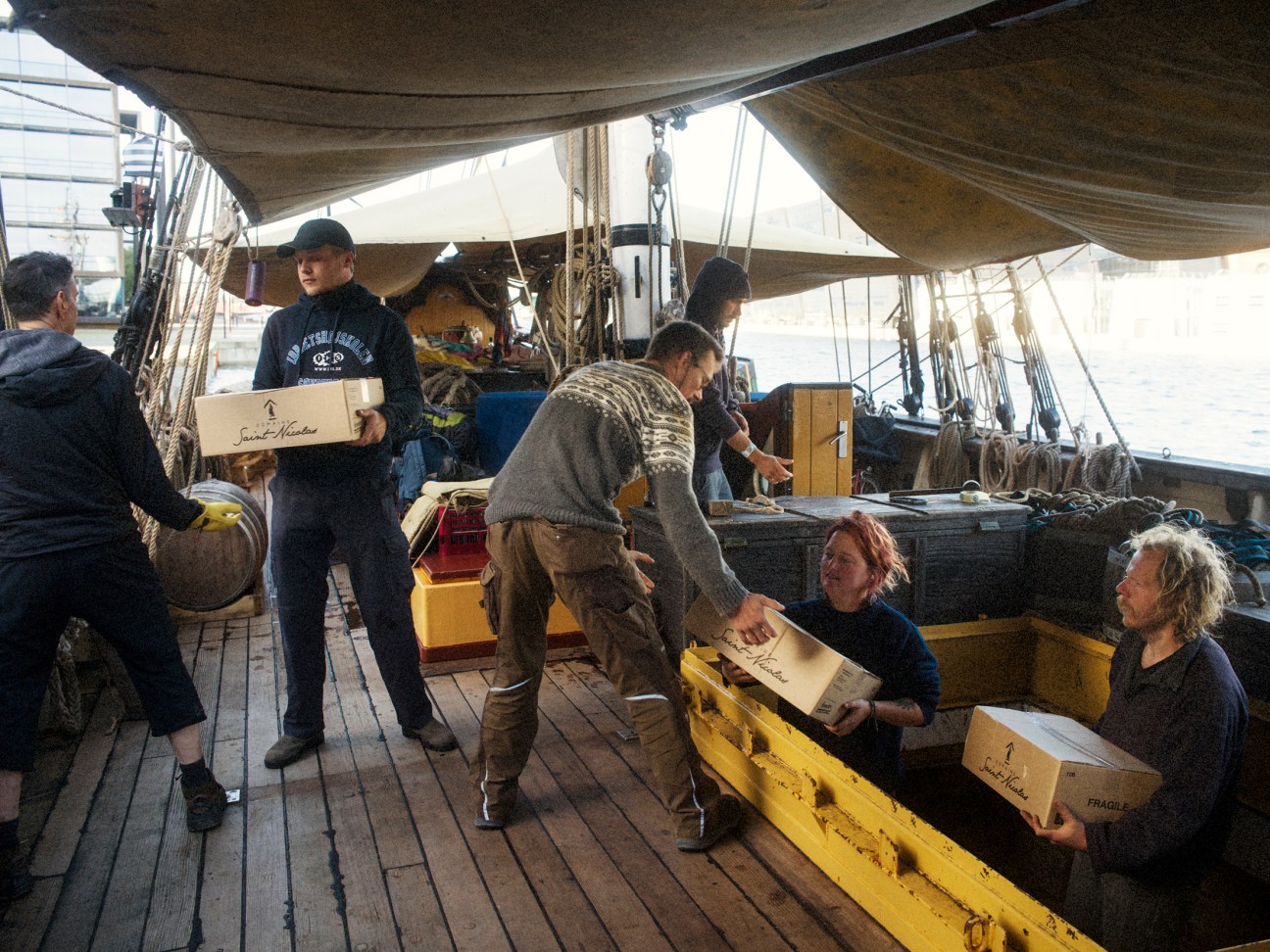
While these green journeys need no fuel, they do require plenty of elbow grease. To provide it, the ships welcome passengers who pay for the privilege of being trainees and stevedores while travelling the world carbon-free. Some of these paying guests find ship life so appealing that they stay on as paid crew, with one even becoming captain. Those who sail the Tres Hombres all the way to Martinique might end up doing the frog kick, swimming with barrels of rum from tropical beaches to the side of the ship. These long winter journeys are so popular, berths sell out more than a year in advance.
For those who might prefer getting their Caribbean liquor faster, Fox suggests a visit to the German Rum Festival. At this annual Berlin conclave, the world’s finest spirits are blind-tested by experts. “There has been no year we entered when Tres Hombres rum did not win a medal,” says Fox. “Last time, it was a gold and two bronzes.” The secret? Months spent under sail. Deep in the holds of traditional ships, rum inside wooden barrels gently moves with the waves, deepening, maturing and interacting with tannins in the oak staves.
These vintage rum runners might soon be joined by a modern steel incarnation of the classic clipper ship, launched by France’s TransOceanic Wind Transport (TOWT). “What we’re creating here is a new generation of 21st-century vessels, inspired by the heritage of sail propulsion,” says ceo Guillaume Le Grand.
Seeing the advantages of both a zero-carbon fleet and mainstream carriers, towt hopes to create a niche somewhere in between. “We’re cherry-picking technologies from all the sectors: fishing, regatta, cargo,” says Le Grand. “Our boats, which are 90 per cent sail-powered, are using carbon masts and will be the sons and daughters of the old ships.”
Anemos – which is Greek for “wind” – will be the first TOWT ship, one of two set to launch in 2024. Aiming for a maiden voyage in April, Anemos is designed to have more freight capacity and passenger berths than the Tres Hombres, but only half the crew. towt also hopes for shorter crossing times thanks to mechanised sails. “We’ve got tremendous commercial traction at the moment,” says Le Grand, pointing to their ability to negotiate long-term contracts. “We’re telling customers that one hop across the Atlantic for greenwashing PR is not what we do. If you want to load your cargo on board, you’ll have to sign a contract that commits you to several crossings.” So far, TOWT has firm cargo commitments from wine and spirits seller Pernod Ricard and other leading French brands.
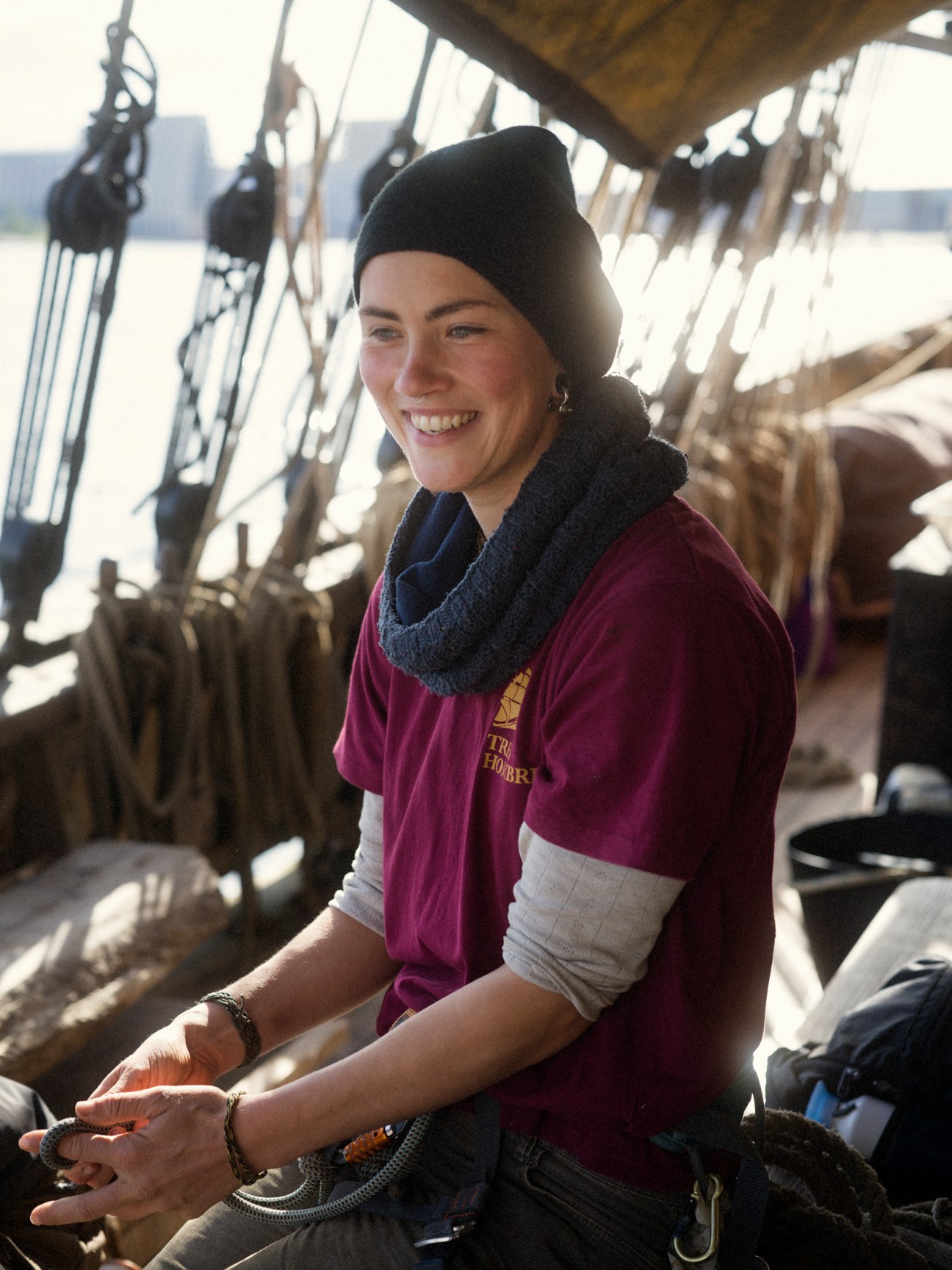

This is still a period of experimentation, development and investment for both sectors: the sail-only fleet and its giant cargo cousins. And there are opportunities for co-operation. One example is the crucial last mile of carbon-free delivery. Many mega-freighters can only squeeze into huge container terminals. Agile smaller craft can meet them dockside, cross-load cargo, then navigate it to downtown Hamburg, Amsterdam, London and countless other harbours.
Wind-assisted propulsion might also lead these different fleets to sail the same routes. Standard cargo ships, using engine power alone, could sometimes ignore breezes when mapping a journey. But as they adopt hi-tech sails to reduce emissions, that calculus will change. According to Cooper, it might even prove economical for sail-assisted carriers to stop going back and forth across the Atlantic. Instead, it could be smarter to sail continuously around the globe, following the trade winds. In that scenario, the heritage cargo fleet – along with racing teams and other open-ocean mariners – will have valuable experience to share about optimising routes and logistics for wind. So like sharks and remora fish, the massive cargo carriers and small sailing vessels might find ways to assist each other as maritime commerce goes green.

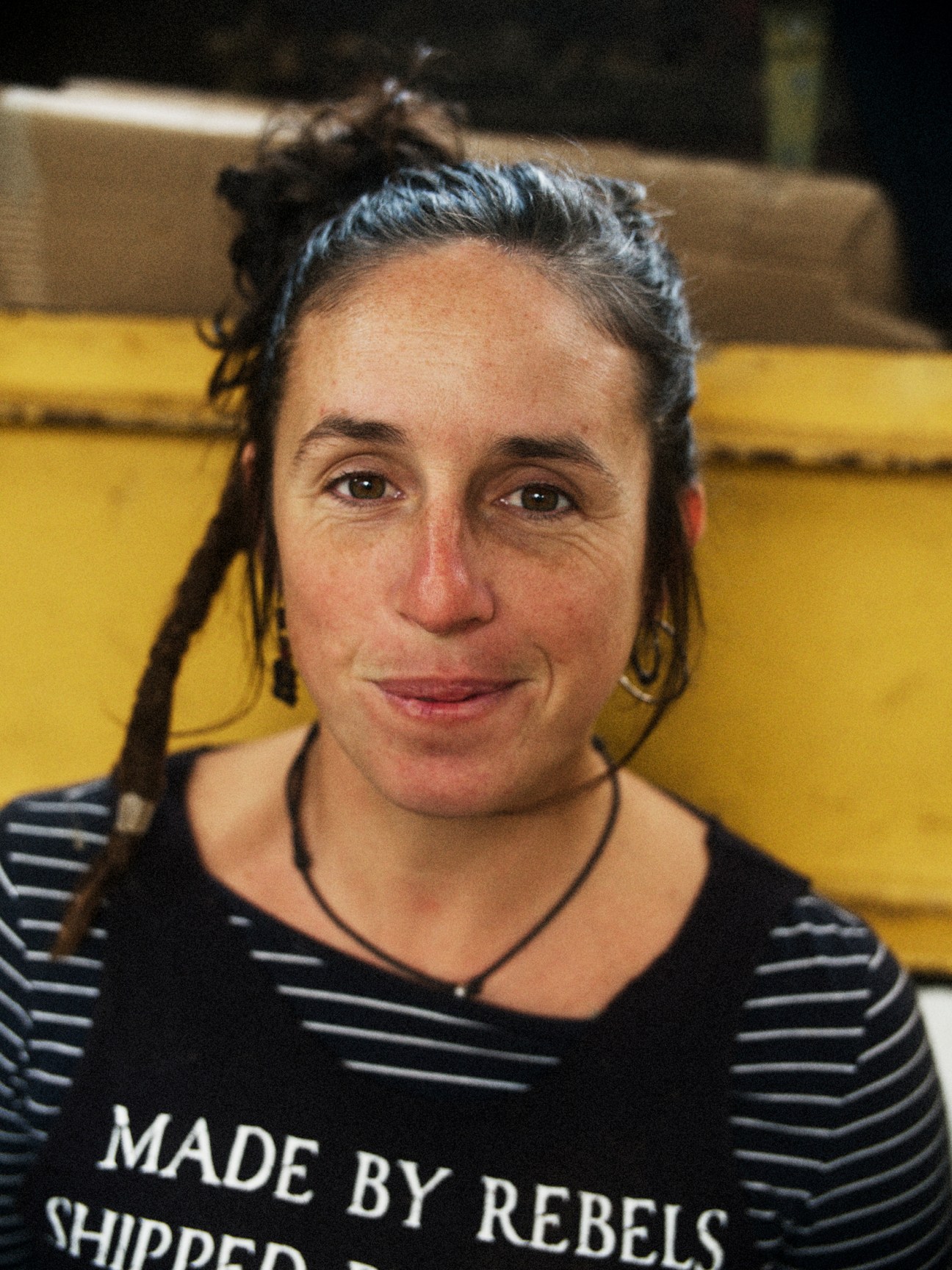
But what has been most important to both fleets is that vintage ships are proving themselves powerful ambassadors for wind-powered transport. They’re building global awareness and a loyal customer base, which is willing to pay the sometimes higher cost of transitioning to clean ocean shipping.
Whether the two sectors choose to compete, co-operate or ignore each other, one thing is clearly on the horizon: more sails. Lots of them – steel ones bolted to giant carriers and canvas flapping on ships such as the Tres Hombres, returning the richness of slow-sailed coffee, cocoa and rum to Denmark’s capital.
But for Danes, the most exciting taste these ships are delivering might be something else. By reviving dockside flavours and accents, clamour and commerce, visitors such as the Tres Hombres are also bringing back the original meaning of the name Copenhagen: Merchants’ Harbour.
Ways of seeing
Scott Young on …
How geopolitics will shape the manner in which AI will change the job market. Amid the uncertainty, there are things that we know and even some reasons to be cautiously optimistic.
Technological prognostications often fall prey to what’s called “Amara’s Law”, a phenomenon suggesting that we tend to overestimate a technology’s near-term impact while grossly underestimating its effect over the long run. Artificial intelligence (AI) is having just such a moment, with generative AI rocketing from obscurity to ubiquity in less than a year. But for all of the headlines, our understanding of AI suffers from farsightedness: the future seems clearer the further away it is, while we struggle to see what’s right under our noses.
Authors Ajay Agrawal, Joshua Gans and Avi Goldfarb describe this moment as the “between times”, in which we have only begun to understand the technology’s future potential but have not yet seen its widespread adoption. Make no mistake, Chatgpt is only the Ford Model T of AI. It’s the popular, early precursor foreshadowing the discrete and world-changing movement revolution to come.
One underestimated fact is how global politics – the decisions being made by governments today – will influence AI’s trajectory; decisions that in turn will determine the future of work and jobs across the world. While some countries are scrambling to secure advantage, others are seeking simply to stymie opponents. At the end of 2023 this is most apparent in the worsening US-China relationship, where critical and emerging technologies are a key battleground. The US-China economic decoupling is in turn upending longstanding assumptions about globalisation and co-operation and giving way to new rules.
There are four elements to watch for geopolitical competition when it comes to AI. They are data, computing power, energy and talent – and here’s why they matter.
1.
Data is the rocket fuel powering AI training – the process by which a model is taught to perceive and analyse information. The more quality data that a model is given, the greater the effectiveness and accuracy of machine learning. However, efforts by governments to keep data “local” will saddle companies with burdensome compliance rules and slow progress.
2.
Computing power is the ability to process information at scale. AI training depends on the use of the most hi-tech silicon chips. Developments in computing power have been the main driver of AI’s rapid progress over the past decade. The US has temporarily curbed Chinese access to advanced chips and chipmaking equipment, while China has sought workarounds and poured money into domestic r&d.
3.
Energy is an often-overlooked geopolitical factor, but AI’s future energy requirements will only grow. Computing power is projected to reach 21 per cent of global electricity consumption by 2030 (up from less than 2 per cent in 2018). Training OpenAI’s gpt-3 required a staggering 1,285 mw/h in electricity and emitted more than 550 tonnes of carbon dioxide, which only hints at further questions about AI’s environmental cost.
4.
Finally, the global AI talent pipeline will establish which countries and companies get ahead. Talent takes investment and time to grow. While the US has the greatest concentration of skilled top AI researchers, China has intensified its talent attraction, retention and training efforts. Today more than 440 Chinese universities offer AI degrees.
These four bottlenecks will influence how rapidly AI can scale in future. What’s clear – regardless of which countries get an edge over others or the speed at which it happens – is that a growing percentage of workers will be displaced by AI. Who and how are only just starting to become visible.
The Hollywood writers and actors strikes offer an early clue for how AI will soon affect jobs.
A decade ago, the narrative about the future of work was that automation would replace routine prevailing and administrative roles, leaving humans to focus their energies on more creative and complex tasks. In a 2013 study, Oxford economists Carl Benedikt Frey and Michael Osborne estimated that 47 per cent of jobs in the US were at risk from automation, noting that highly skilled jobs were likely to be the least susceptible to disruption.
But generative AI’s deftness in tackling the creative industries through high-quality text, image and even video generation has spun that assumption on its head. Generative AI can outperform humans in computer coding and can even predict sophisticated protein structures, the latter of which could only be done previously through experimental deductive techniques. In fact, Frey and Osborne recently acknowledged that lower-skilled workers might stand to disproportionately benefit from generative AI by levelling the playing field. In contrast, highly-skilled incumbents may soon find their advantages – and wages – whittled down, overwhelmed by a tsunami of AI-enabled competition.
It isn’t all good news for low-income workers, though. There is already an AI underclass in places such as Kenya, India and the Philippines. In these countries, armies of so-called “data annotators” – workers tasked with supplying algorithms with brutal and graphic content to moderate – are subjected to poor conditions and frequent assaults on their mental health, in exchange for low wages and little support. A recent Pew study also found that one in five US workers have “high exposure” to the effect of AI, whether negative or positive – with female, Asian, college-educated and higher-wage workers all particularly vulnerable.
Nevertheless, humans are notoriously resilient and resourceful. We can spy hope in places such as a recent study from mit economist David Autor, which draws attention to the common-sense observation that 60 per cent of workers today are employed in jobs that didn’t exist 80 years ago. So perhaps it’s a matter of perspective. Rather than focus on the loss of jobs today, we should perhaps focus on new avenues for jobs – ones we have yet to invent or imagine. And if Amara’s Law is anything to go by, we still have a little time to think it through.
About the writer: Young is a senior geo-technology analyst with political risk consultancy firm Eurasia Group and a juror for the Balsillie Prize for Public Policy.
Ahmed Al Omran on …
Why, even though Saudi Arabia is longing to tempt foreign investment and has cut red tape for start-ups, its powerful public sector is crowding out private business.
US tech giants such as Google, Amazon and Microsoft dominate the world’s attention and the global economy. But what do they have in common? Among other things, they all began in garages: a founding myth that’s given them a special place in the imagination of would-be entrepreneurs.
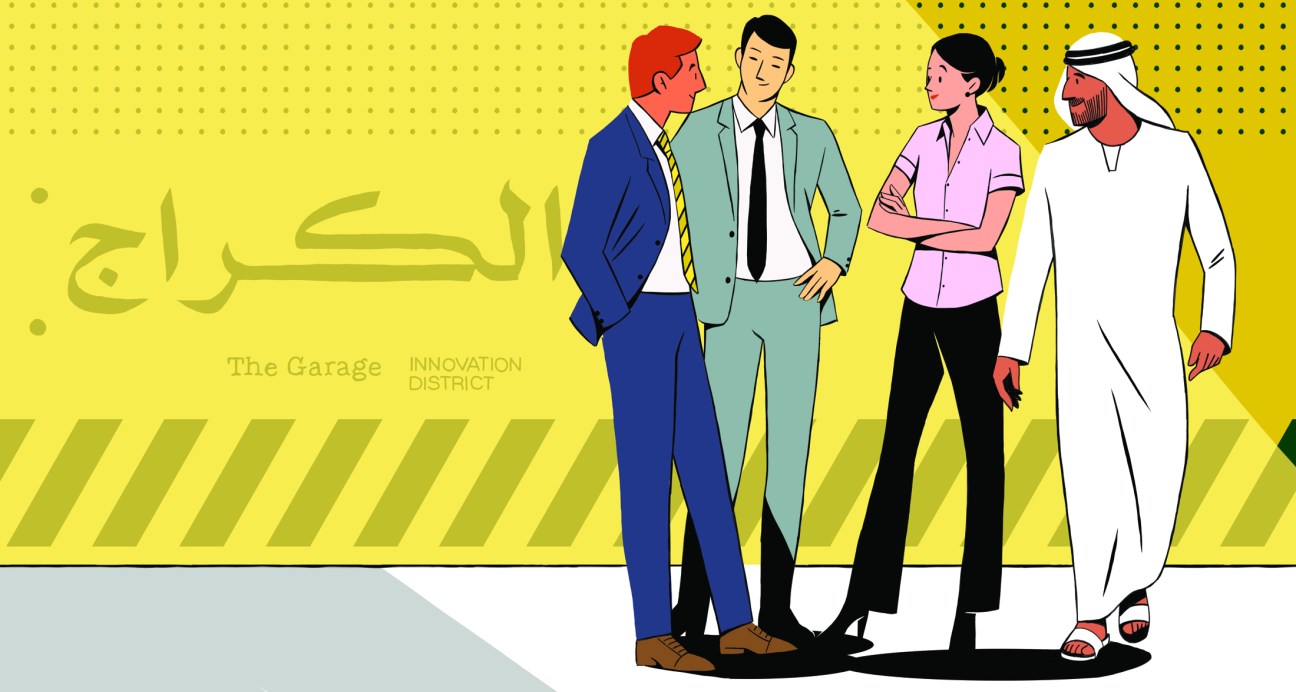
Saudi Arabia took that precedent literally and decided to build one of its own to help tune up the national economy. The Garage is a co-working space in a revamped car park in Riyadh’s King Abdulaziz City for Science and Technology. There are shared office spaces, conference rooms, an events area and even sleeping pods for naps. Launched in 2022, the project was expanded in September 2023 and is an illustration of the country’s desire to wean itself off its dependence on oil revenues by tempting technology start-ups to the country.
Seven years ago, Saudi Arabia unveiled its plan to supercharge the economy by limiting the role of the wealthy public sector, letting the private sector lead economic growth. It restructured government departments to attract foreign investment, updated its laws and regulations and sent delegations around the world to entice investors with incentives. Red tape was cut: waits for business visitor visas were shortened to 72 hours. There are reasons to be positive too: neighbours with larger populations, such as Iran and Egypt, are drowning in political and economic turmoil, while the populations of Gulf neighbours including the uae and Qatar are too small to support growth. Despite its social conservatism, Saudi Arabia is one of the world’s biggest 20 economies and has a young and affluent population. In truth, the slow speed of growth is partly self-inflicted. Crown Prince Mohammed bin Salman has overseen some easing of strict social laws but his anti-corruption clampdown in 2017 and the killing of Jamal Khashoggi the following year have scared some investors away. Foreign direct investment fell 59 per cent in 2022 to €7.5bn, according to the United Nations Conference on Trade and Development.
While foreign investment has faltered and oil prices bounced, Saudi Arabia chose to lean into its own resources: the Public Investment Fund (pif). The state’s sovereign wealth fund started more than 70 companies with hundreds of billions of euros in investments, ranging from a science-fiction grade futuristic city called Neom (to be built from scratch in the country’s northwest) to a dairy firm specialising in camel milk, among others.
The rise of the sovereign wealth fund, with its expanding list of investments, has raised eyebrows among some investors who say that the fund – and its sizable war chest as a result of transfers from the state treasury – is crowding out the private sector that the country says it is keen to bring in. Officials say that the pif focuses on risky and strategic sectors that private investors have little appetite for. That argument holds water for defence or infrastructure, it’s less convincing when it comes to camel milk.
Authorities claim that the overhaul of laws and regulations is working. The Saudi Ministry of Investment says that it issued 4,358 investment licenses in 2022, a 54-per-cent jump on 2021. How many of those licences will turn into sustainable businesses, however, remains unclear.
As much as the kingdom yearns for the private sector to take the initiative and lead the economy, the public sector continues to dominate – and while it does, entrepreneurs are at a relative disadvantage. The Garage’s relaunch event in 2023 was a case in point. Images from the opening bash feature far more government officials than venture capitalists or start-up founders. If the kingdom is to become a genuinely competitive place to do business, it needs to strike a better balance in 2024.
About the writer: Al Omran is a Saudi journalist. He is a former Knight-Bagehot Fellow at Columbia Journalism School.
Joanna Chiu on …
The US-China trade war and why American aggression in guarding chip technology is heightening tensions around Taiwan. Is 2024 the moment to tone down the chip chat?
Donald Trump referred to the US’s $346bn (€327bn) trade deficit with China in 2016 as “the greatest theft in the history of the world”. Always one to simplify a problem, he went on to blame the Clintons’ support of free trade for enabling China’s meteoric economic rise. This ongoing conflict between the world’s two largest economies, dubbed a “trade war”, began unceremoniously in 2018 with Trump slapping tariffs on $200bn (€189bn) worth of Chinese goods.
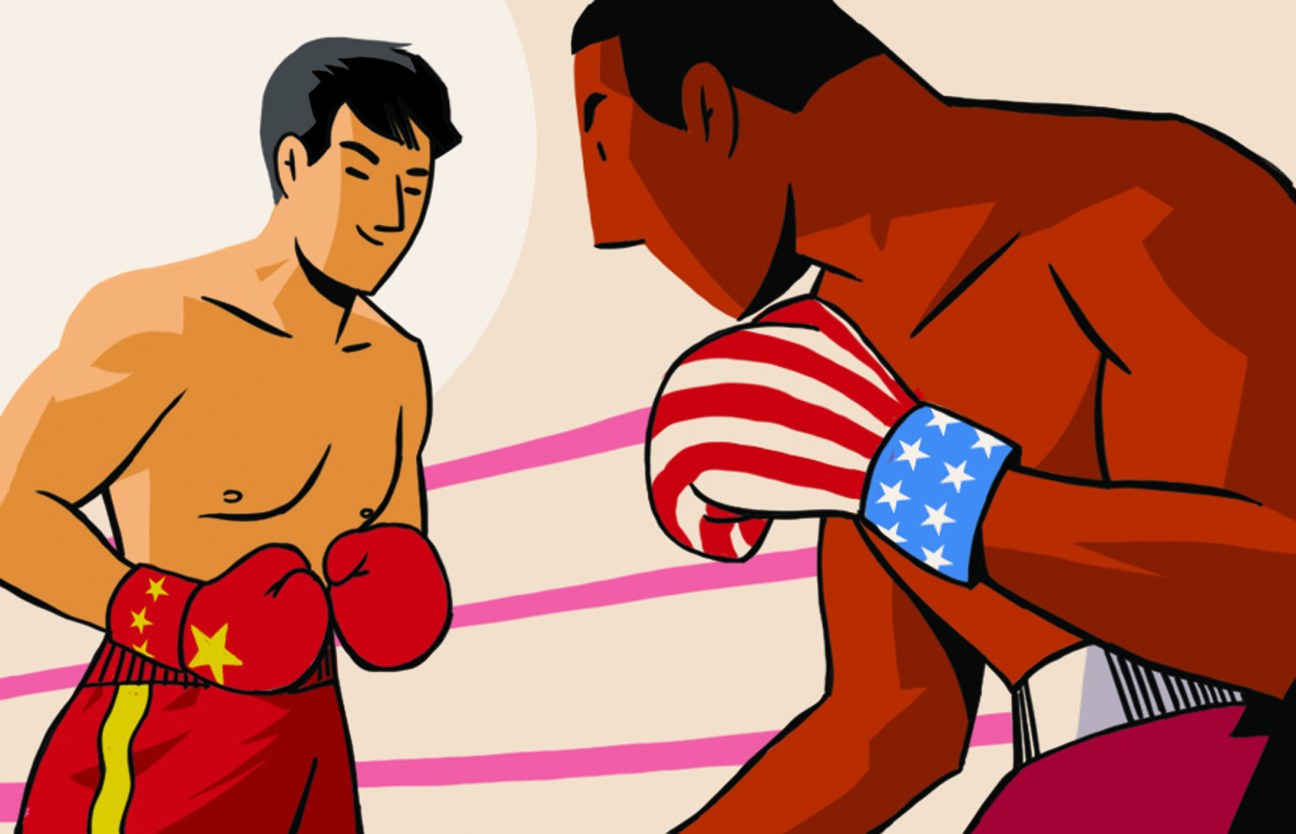
I was in Beijing at the time and the mood among the business owners and entrepreneurs was one of nonchalance. China had long served as the world’s factory but leaders were already pushing to transform that economy away from mass manufacturing towards domestic consumption, service and producing higher-end goods. People observed the US backlash against Trump’s actions coolly as prices spiked.
Contrary to Trump’s take, many economists think that a country importing more than it exports carries advantages. Cheap manufacturing also means lower prices for global consumers. The trade war meant that American businesses buying from Chinese factories have paid the price and borne the brunt of tariffs. Even today those firms are passing costs on to consumers. Five years later, ordinary people in both countries have lower aggregate incomes as a direct result of the conflict.
Joe Biden’s administration continued the hyperbole and characterised the competition as part of a global “battle between democracies and autocracies”. Biden has not only maintained many tariffs on Chinese goods but his administration also has another target in its crosshairs: China’s capacity to produce cutting-edge technology.
Semiconductors, the so-called “brains” of modern devices, power everything from cars to smartphones. In August 2022 the US Chips Act came into law to prohibit recipients of federal funding from expanding semiconductor manufacturing in China. Department of Commerce rules also bar US companies from exporting technology and equipment used in producing advanced technology, including microchips, to China. These not only prevent US companies from working with Chinese partners, they also prohibit international companies from using US-made equipment to serve Chinese customers. International firms are now scrambling to put these tough rules into practice.
But will any of this halt China’s economic march? Huawei recently debuted a smartphone that uses an advanced seven-nanometer processor. It was the clearest indication so far that China is on its way to building a complete domestic chipmaking ecosystem, even though US analysts had hoped that measures might set back China’s progress by years.
Trade wars rely on the image of a battlefield, but they don’t need to be deadly. Sadly, the US position on chips is likely to increase the risk of actual armed conflict in 2024 and beyond. The reason? Taiwan. Beijing claims the island as its own territory and hasn’t ruled out using military force to take it. An increase in missile tests spurred anxieties, especially as Washington is obliged by federal law to see that the island has the means to defend itself. Taiwan has dominated global chip manufacturing for so long that the industry was dubbed the island’s “silicon shield”: a deterrent to conflict, as Taiwanese firms accounted for more than 60 per cent of global chipmaking revenue. Washington’s moves to choke off China’s access to technology has thrown a spanner in the routine flows of people and technology between Taiwan and China. The US might tell a story about its trade war evening up the economic odds but its actions are writing a script that could have an unhappy ending – for peace in East Asia and beyond.
About the writer: Chiu is a Vancouver-based journalist and author. Her most recent book, China Unbound: A New World Disorder, is out now.
Eliane Glaser on …
Self-help culture. It is governed by two contradictory philosophies: that of living our ‘best life’ on the one hand and tempering our expectations with Yogic calm on the other. So which is it
In 2005, The Oprah Magazine issued a book entitled Live Your Best Life. The phrase has since proliferated in popular culture and on social media – from Cardi B’s rap track “Best Life” to self-improvement videos on Tiktok (“How I upgraded my life”; “I am the author of my own life”). The Tiktok hashtag #manifestation has had 46 billion views. Websites flogging “life hacks” and entrepreneurial motivation exhort readers to “Realise your full potential” and “Give your very best in everything you do”. Whole sections of bookshops are dedicated to titles trotting out the same drab sentiment: The Power of Positive Thinking; Life Mastery and Authentic Happiness. The message sells, too: the “wellness” market is worth $5trn (€4.7trn) worldwide.
But another prominent philosophy being sold is one that spins us around 180 degrees. Instead of telling us we can be whoever we want, this doctrine advocates giving up great expectations and learning to sit still. Happiness equals reality minus your expectations, suggests Mo Gawdat, the Egyptian technology entrepreneur who wrote Solve for Happy: Engineer your Path to Joy after the death of his son. In the best-selling Love for Imperfect Things, the Buddhist monk Haemin Sunim argues that we should renounce our idealised image of how our life could be and make peace with how it is right now. So how can we make sense of these two competing philosophies?
Both movements promise happiness and fulfilment but by rather different paths. Life optimisation comes in part from the 1990s positive psychology movement, led by the American educator Martin Seligman, which in turn grew out of 1950s “humanistic” psychology that emphasised the importance of realising one’s innate potential. In contrast, the origins of the self-acceptance movement are far older. Sixth-century Buddhist monk Sengchan wrote, “True freedom is being without anxiety about imperfection”; the 17th-century samurai and philosopher Miyamoto Musashi advised his followers to “accept everything just the way it is”.
The fact that popular life advice pulls us in opposite directions is rarely noted. But crucially it also produces a paralysing dilemma. It’s impossible to visualise or manifest your “best life” unless you have desires and expectations. Yet Buddhist teachings instruct us to stoically silence our wants. We feel we ought to wring constructive value out of every moment but also sit, breathe deeply and meditate. And, of course, there’s the further irony here behind those best-selling books about acceptance: the hard-working scriveners waking up at dawn to write books telling us to do less.
Perhaps the biggest battleground for these conflicting approaches is in our long-term romantic relationships. First, we are living longer, so relationships are longer. Yet the temptation to upgrade is multiplied in the messaging as well as the means to do so in a consumer marketplace of dating apps. Is it possible to stick with the same person for decades and still be the best version of yourself? You hunch. You snap. You compromise. What if you find yourself curtailing your “authentic self” for the sake of harmony?
On the other hand, relationship websites and magazine features tend to offer another solution: radical acceptance. The trick is toWe live in a culture that simultaneously demands perfection and orders us to be happy with our idiosyncrasies give up wondering how it would be if your partner was different: less familiar, less annoying. But our culture is more ambivalent. We congratulate couples who hold it together over the long term, for better or worse. Yet it’s also widely held that if a relationship is making you into a person you don’t want to be, then you should leave. So which is it?
The push and pull of this cognitive confusion can take its toll. We live in a culture that simultaneously demands perfection and orders us to be happy with our idiosyncrasies (read: imperfections). Not only is there no reward but it appears that forbearance is no longer the moral path, as it can conflict with the new moral injunction to be “true to yourself” (if you’re the kind of person who is lucky enough to both be able to and always know exactly what you want). If you practise radical acceptance you shouldn’t require forbearance in the first place: you should have learnt to love your partner’s little habits by now, no matter how irritating. Sadly, things in the real world are never so neat.
Popular culture and psychology have responded to this ambivalence by presenting fantasy scenarios in which it appears possible to have your cake and eat it too. Coaches and feature writers proclaim that you too can have an amazing sex life after 30 years of marriage. The celebrated sex guide Enduring Desire by couples’ therapists Michael Metz and Barry McCarthy points to research suggesting that the best sex happens in partnerships of 15 years or longer. “Plenty of people in long-term relationships have super-hot, wonderfully satisfying sex lives years and years into their relationships,” writes the relationship coach Kelly Gonsalves on her website Mindbodygreen. “In fact, the longer you know each other, the more comfortable you’ll become with exploring new sexual experiences together,” she adds, though she acknowledges that this is not always the case. A recent study of married couples over 40 found that the largest proportion have sex rarely, or not at all.
Hollywood has found another way to square the circle. In the three-act structure that governs pretty much every film that you will ever see, the protagonist embarks on a quest or journey before finally returning to their old life – but crucially armed with new insights. In a typical mid-life crisis film, the (male) protagonist fantasises about having an affair with a (young) woman but resists; and at the end his marriage is revitalised. Such narrative sophistry evades rather than resolves the paradox. In a culture torn between the pleasures of hedonism and asceticism, recognising these mixed messages might be the best that we can hope for.
About the writer: Glaser is an author and radio producer who has written for the Monocle Companion series. Her books include Elitism: A Progressive Defence.
Pushing out the boats
With its sugar-cane fields, sun-drenched beaches and clear, subtropical waters, Ishigaki Island could hardly look less like the front line of a conflict. But this small dot in southern Japan lies a little more than 300km from Taiwan and about 170km from the rocky, uninhabited Senkaku Islands (known as Diaoyu by China), which are administered by Tokyo but claimed by both Beijing and Taipei. If the dispute over the islands heats up or China invades Taiwan, sleepy Ishigaki might suddenly find itself uncomfortably close to the action.
For now the island’s two faces – a holiday destination and a strategic military base – coexist quite peacefully. Tourists can go snorkelling and sample the local cuisine (its tender beef is a speciality), happily oblivious to the geopolitical storm threatening to break at sea. The urban centre, also called Ishigaki, is Japan’s southernmost city; with a population of 49,000, the island is the Yaeyama archipelago’s commercial hub. Beyond it, roads lead to farms, beach resorts and popular sunset spots.
As China makes its presence felt in the region, Japan has increased the visibility of its Coast Guard. Hardly a day passes when Chinese Coast Guard vessels don’t enter the waters around the Senkaku Islands; in 2022 they sailed within this contiguous zone for a record 336 days, up from 171 in 2017. Japan’s 11th Regional Coast Guard, which covers Ishigaki, has more than doubled in size since 2010, rising from 820 personnel to 1,972. In that time, its fleet has grown from 26 ships to 50 and the number of aircraft has risen from 11 to 15.
Rear Admiral Mitsuaki Nakata is the commander of the Ishigaki Coast Guard Office. What would once have been a quiet posting is now a high-profile role. His office, which has a staff of 45, is a stone’s throw from Ishigaki Port, which boasts an impressive line-up of Coast Guard boats. Day and night, patrol vessels rotate in and out of the port, keeping a close eye on what Chinese boats are up to around the disputed islands. “We make sure that we can outnumber them,” says Rear Admiral Nakata.
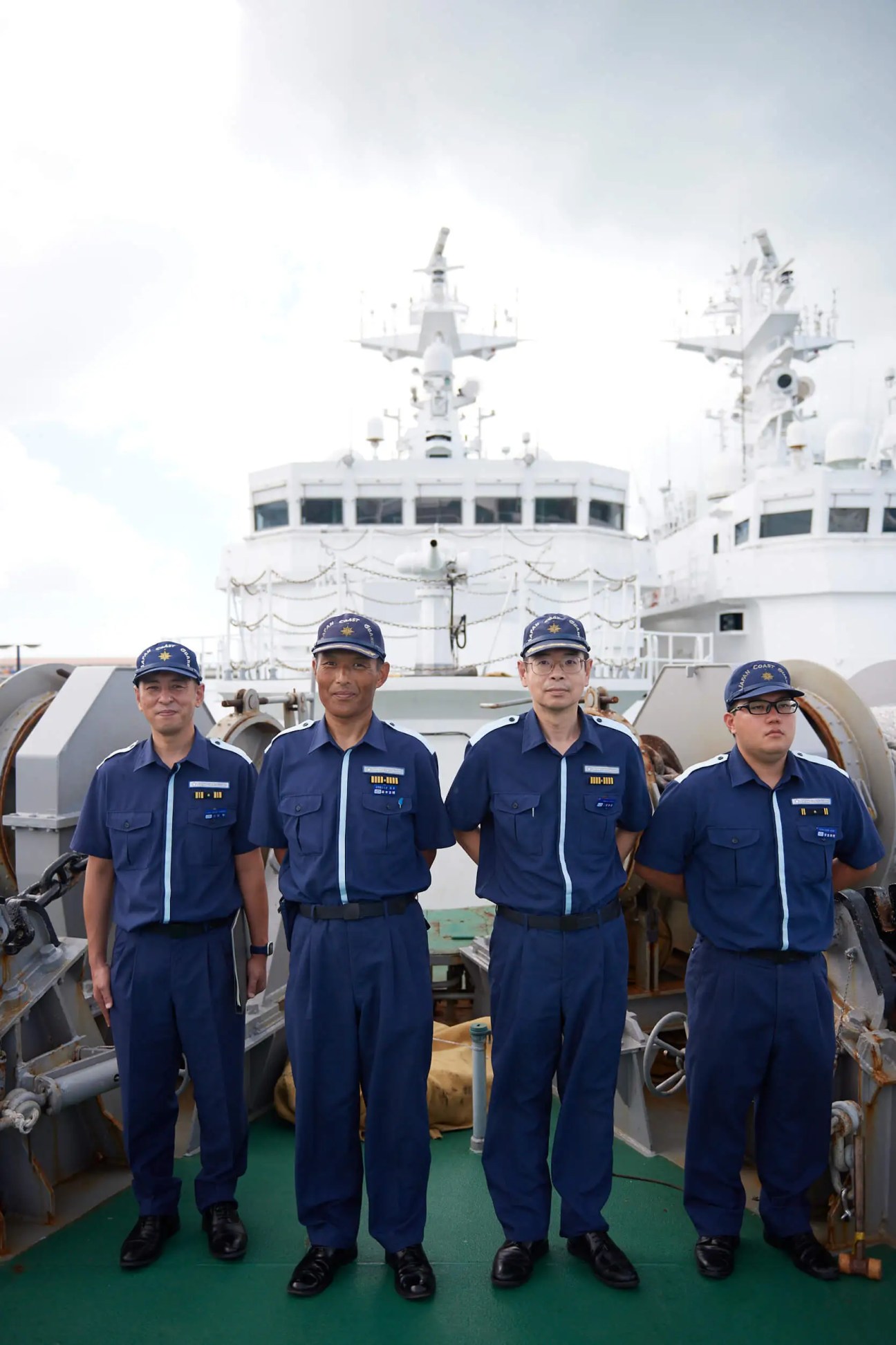
Water margins
In terms of vessel numbers, the China Coast Guard’s fleet far surpasses that of Japan: in 2023 it already had more than twice as many vessels exceeding 1,000 tonnes. This disparity is only expected to grow. With its larger boats and upgraded equipment, China is able to increase its presence in disputed waters, even at long distances from the coast. The Japan Coast Guard can’t compete but is hoping for an uplift in its budget for the next financial year from ¥243bn (€1.5bn) in 2023 to ¥275.9bn (€1.75bn). It is also seeking to add 432 new staff to its current total of nearly 14,700 by 2025 and, in the longer term, boost its number of large patrol vessels from 71 to 90 by 2028.
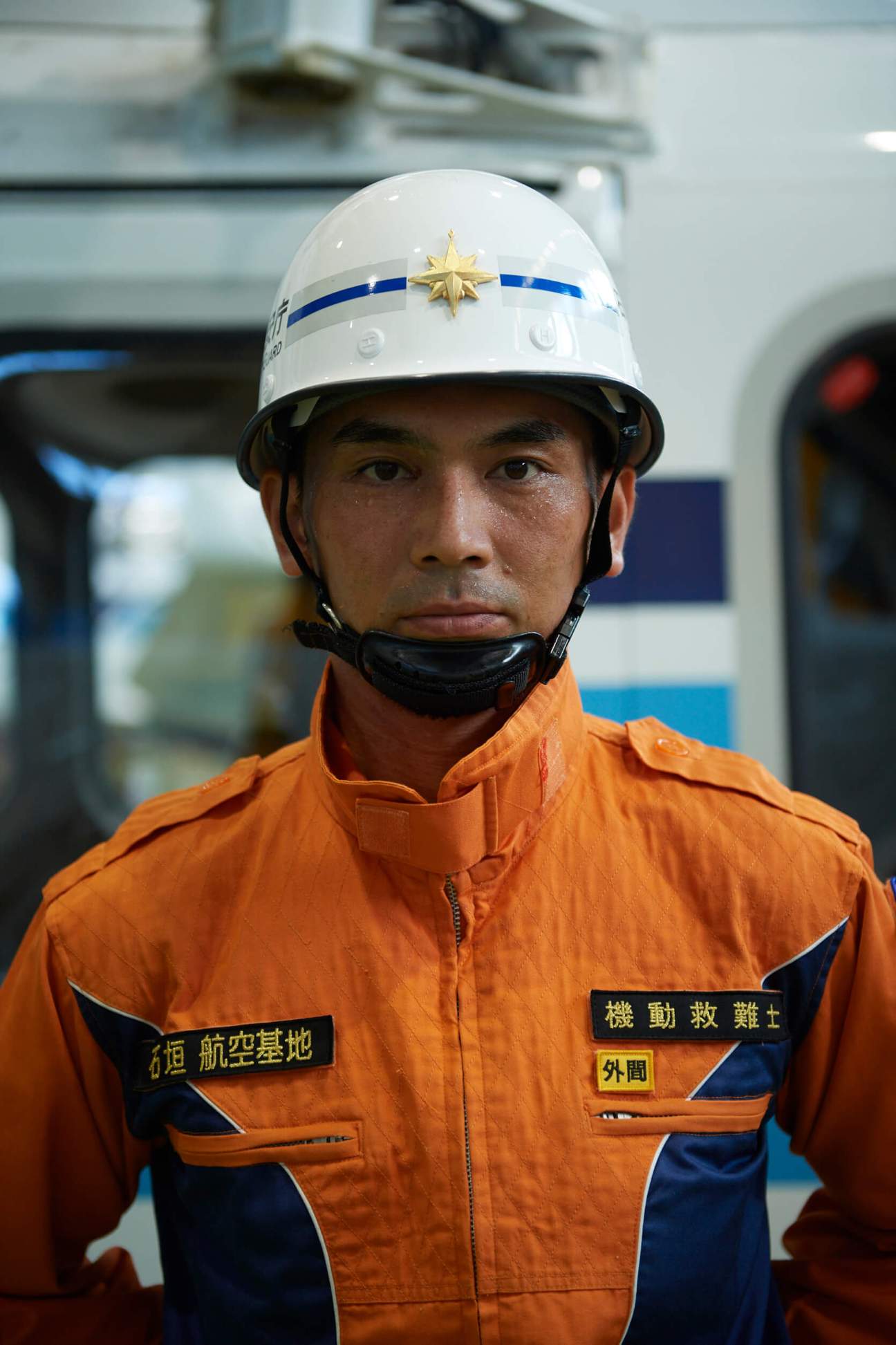
“And if we don’t have enough in Ishigaki, we’ll call in others.” China’s almost permanent presence in the contiguous zone isn’t illegal but its vessels now cross over into Japan’s territorial waters two or three days a month. “When they do that, we escort them out,” Nakata tells Monocle. The aim, he says, is to keep things peaceful. “Tensions have increased in this region but no matter what the security situation is, we perform our role, which is to act as the police. We stick to the law and do so calmly. We don’t want to provoke a conflict.”
The Japan Coast Guard is keen to differentiate its role from that of the Japan Self-Defense Forces (SDF), which are still forbidden by the country’s pacifist constitution from military aggression. Coast Guard boats have guns but almost never use them – the exception being an incident in 2001 when four of its vessels clashed with a North Korean spy boat off Kyushu before it was eventually sunk.
The sdf has increased its presence on Ishigaki too. In 2023 the island received its first sdf garrison with 570 personnel. The 47-hectare site in the middle of Ishigaki was the final part of the solution to what the Japan Ministry of Defense identified as a regional security “vacuum”. It followed three other sdf garrisons that have been built on the small Okinawan islands of Yonaguni and Miyakojima, and the island of Amami-Oshima in Kagoshima. The new garrison, with its anti-aircraft and missile companies, has received mixed reactions. While some locals welcome the boost to the economy, others fear that it will make Ishigaki a target in any future conflict.
Nakata, who has served with the Coast Guard for 38 years, points out that Senkaku isn’t Japan’s only potential territorial flashpoint. “I’m from Hokkaido,” he says. “There the focus is on Russia and the Northern Territories [disputed islands claimed by both Moscow and Tokyo]. When I was in Tsushima in Nagasaki prefecture, Korea was the important factor. Here in Okinawa, it’s China. It depends on where you are in Japan but there’s always an international dimension to the job.”


The Senkaku Islands aren’t the only preoccupation of the Ishigaki Coast Guard. It has to deal with everything from maritime rescue missions and natural disasters to medical emergencies and even public education. Recent call-outs have included rescuing campers stranded on a typhoon-stricken beach, saving the crew of a sinking tanker, picking up a stand-up paddleboarder who had drifted to a neighbouring island and dealing with a variety of smuggling, including of gold, drugs and guns. Tip-offs and searches have produced an array of contraband hidden in the vast cruise ships that come into Ishigaki from Taiwan. In the port, it’s cleaning day on patrol vessel Tarama. Under the watchful eye of its captain, Yoshitaka Morimoto, its crew is scrubbing and painting the boat, which weighs more than 1,700 tonnes and is almost 100 metres long. Morimoto is on his fourth tour of Okinawa. If he spots anything untoward from the bridge, he informs the regional headquarters in the city of Naha. Most crew members live in dormitories and are sometimes out on patrol for a week. Life in the Coast Guard is peripatetic, with postings lasting only two or three years.
The Ishigaki Coast Guard has a 68-strong air base next to the airport. Established in 1972, its personnel have been making sea rescues and transporting sick people from remote islands to hospitals for more than 50 years. Its immaculate hangar looks straight onto Mount Omoto, Okinawa’s highest mountain. Diving suits hang on a rack on one side; two modified Beech 350 Super King Air planes sit alongside one of two Agusta aw139 helicopters. This is also the base of the Coast Guard’s rescue technicians, the specialists who hang off helicopters in the roughest of seas. They’re an elite group (there are only 90 in Japan), selected from the ranks of divers and trained for another nine months.
The Agusta helicopter is a bruiser, capable of carrying nearly 270kg on an 80-metre cable. “It’s easy to fly,” says chief pilot Tadakiyo Narita, who has nearly 30 years of experience behind him. “It can operate in difficult conditions, even right before or after a typhoon when most planes can’t fly.” A 1,800-watt searchlight, which is so bright that its use when flying at low altitude over land is forbidden, is a crucial tool on rescue missions, while loudspeakers beneath it are used to make announcements, such as calls to evacuate. Pilots are sometimes tasked with bringing patients from small islands into Yaeyama hospital, the region’s largest medical facility, in Ishigaki. The planes can cover great distances during search- and-rescue operations, locate the scene and drop parachute lights as markers for the teams that follow. On regular patrols, pilots are on the lookout for illegal fishing boats; if any are found, they pass on information to patrol vessels that then move the boats on.
Nakata is now too high-ranking to head out on a patrol ship but it’s something that he misses. After nearly 40 years, he would still recommend a career in the Coast Guard. “Moving from place to place can be hard on families but it has its perks,” he says. “You get to experience things that you would never have otherwise. There is a lot to learn and be proud of in this job.”
Our annual overview of present and future pioneers in commerce, infrastructure and civil society

ÖBB night trains
Good morning, Vienna
Austria
How does dinner overlooking Hamburg’s harbour, followed by a good night’s sleep and then waking up in the majestic Austrian Alps sound? Austrian Federal Railways (ÖBB) is betting on the affirmative from climate-conscious travellers taking advantage of the night-train revival to comfortably get around Europe without having to fly. Already a night-train pioneer, ÖBB aims to double its overnight passengers by 2030. If it succeeds, more than three million people will use its sleeper services annually, on modern trains that have been designed with privacy in mind, complete with onboard showers.
Following on from its new Hamburg to Vienna route via Innsbruck, ÖBB (with German state rail) is bringing back the Paris to Berlin night train after a nine-year absence. Over the next four years, it is also looking to phase in more night services to take you anywhere from Poland’s charming Old Towns to elegant French wineries and azure Croatian coasts. The current night train from Graz and Vienna to Berlin will also soon alight in Prague and Dresden.
“We’ve experienced a significant increase in demand in the past few years,” says ÖBB spokesperson Bernhard Rieder. “The sleeper cars are often booked out weeks in advance. There is clearly demand for more night trains in Europe.” Rieder says that a European train trip’s carbon footprint can be 50 per cent smaller than that generated by a flight of the same length. Passengers also love arriving at their destination rested and in comfort.
In the middle of Central Europe, Austria is geographically well-positioned to be a night-train hub, which might be why ÖBB chose to keep its after-dark offerings at a time when other national rail companies were axing theirs years ago. “Now other train companies are imitating öbb,” says Christian Gratzer of VCÖ an Austrian think-tank focusing on transport. “Night trains play a very important role in bringing European travel on course to fight climate change. People need to travel but are aware that air travel is particularly harmful to the environment.”
The Austrian trend is already evident in other recent European offerings, such as the night service between Berlin and Stockholm run by Sweden’s SJ railway company, and European Sleeper’s route between Berlin and Amsterdam or Brussels. “Austria’s night trains are an example of how a small railway company in a small country can make a difference,” says Gratzer. “Austria isn’t a special case. It can be a role model for other countries to follow.” All aboard!

Grab
Accelerating growth
Southeast Asia
A green-helmeted motorcyclist weaving through the streets or stopping beside a kerb to pick up a passenger is a typical sight in Southeast Asia’s largest metropolises. By and large, these drivers work for Grab, a Singapore-based technology company that has grown into one of the region’s most prominent multinationals since its founding in Malaysia in 2012 as a taxi-hailing app.
Operating in more than 400 cities across eight countries, the platform now offers services ranging from food delivery and shopping to lending and insurance – but ride-hailing has remained a core segment of the business.
As it has expanded, Grab has adopted a hyperlocal approach to its transport offerings, according to the firm’s head of mobility, Samir Kumar. To cover the traffic-heavy cities of Indonesia, Thailand and Vietnam, where motorbikes are common, the company launched GrabBike. It’s not unusual, in the business districts of Jakarta, Bangkok or Ho Chi Minh City, to see a besuited commuter hop onto the back of a Grab motorbike and strap on the supplied helmet before jetting off with his driver.

Meanwhile, on the island of Phuket, where a certain three-wheeled motorised vehicle is a popular mode of transport, Grab introduced GrabTukTuk. And in Singapore, where motorbikes are scarce but poodles and shiba inus are omnipresent, customers can choose the GrabPet option to ensure that they’re hailing a pet-friendly car. “We localise the consumer experience for every country,” says Kumar, who points out that, every month, one in every 20 Southeast Asians uses Grab. “Our goal is to reach even more people in this region,” he says, adding that Grab has a “home advantage” in Southeast Asia that “enables us to solve local problems that might be too small, too niche or too complex for others.”
One big regional shift is Grab’s commitment to electric vehicles. The company wants its platform to be carbon neutral by 2040 and has implemented various programmes to move drivers to electric and hybrid vehicles. Though this sounds like an ambitious operation, it’s already under way – green-liveried electric tuk-tuks are now roaming the streets of several Thai towns.

Dan Energy
Engineering works
Ethiopia
In Ethiopia, acute unemployment and limited economic opportunities are unfortunate but very real issues faced by the country’s young engineers. Despite these barriers, entrepreneur Daniel Hailu Endale has not given up hope and is determined to change the narrative in Africa, starting with his homeland.
Seven years ago, Hailu Endale mortgaged his own home to start a new Addis Ababa venture called Dan Energy Ethiopia. His aim? To bank on technology and engineering as vehicles for change and economic growth as Ethiopia struggles to overcome dependence on external aid, while still needing to attract investment from abroad. As international investors look to Ethiopia, Hailu Endale hopes to equip its young engineers with the skills to improve their own workforces. Largely due to word-of-mouth, Dan Energy is fast becoming a major training hub in Addis Ababa for young people with limited financial resources (over 8,000 so far). They can now access training including a free programme on coding for teenagers.
Many of those who pass through Dan Energy’s programmes are presented with opportunities to work with companies providing technological solutions, while some become farmers (a profession often associated with poverty in Africa) and introduce new technologies to improve the agricultural arena, which is of great importance in the region.
“We implement efficiency and precision in farming, helping a typical farmer grow more crops, make a profit and use technology to advise their financial interests,” says Hailu Endale. “These are in critical areas such as horticulture, in-house-built agricultural drones and artificial intelligence, among others.”
Having grown up with limited economic means, the entrepreneur knows the value of mentorship, education and training – resources that were rarely available when he was young. Dan Energy is entirely self-funded by Hailu Endale, who is also in the business of property and exports. He is committed helping the less fortunate, including those from conflict-prone areas – such as the Tigray region – whose education has been interrupted due to civil strife.
Hailu Endale plans to expand his model across Africa, opening offices in the Democratic Republic of the Congo’s capital, Kinshasa, and with an eye on Johannesburg, South Africa’s commercial hub. There is also a global office in Dubai. Hailu Endale insists that Dan Energy is not a company founded merely to make money but to transform Africa by providing solutions. “There are two dimensions to education: universities give young people a great footing and a wonderful foundation but training provides the practical aspect that is often difficult to attain,” says Hailu Endale. “We fill the gap.”

Q&A: Guillaume Bardet
Divine inspiration
France
Guillaume Bardet’s illustrious career as a designer began with a residency at the Villa Medici in Rome in 1999. Since then, he has taught at the National School of Decorative Arts in Paris and collaborated with Hermès on its homeware line, while his work was displayed at Le Corbusier’s Couvent de la Tourette, near Lyon, in 2017. Now he has been selected, in line with La Commission Nationale du Patrimoine et de l’Architecture, to create the five main elements of liturgical furnishings for the new interiors of Paris’s Notre-Dame Cathedral following the extensive damage caused by a fire in April 2019. To breathe new life into the historic space, Bardet is designing a baptistery, ambo (lectern), altar, tabernacle and cathedra (bishop’s chair), all beautifully articulated in bronze.
Given the perennial element of this commission, what forms and aesthetics inspired you to honour that longevity?
When you’re in a cathedral like Notre-Dame, which is more than 800 years old, you’re obliged to embrace the past, the present and the future. You’re also expected to work in three temporalities. The forms are about removing everything that isn’t necessary and arriving at, not archetypes, but forms we know. That we all have in mind.
What references inspired you?
I love going into churches. I’m the son of a historian; it feels normal for me to visit a chapel or a cathedral, including when I’m travelling. I have an encyclopedic understanding of the formal liturgical furnishings. So I used that for the proposal. The pieces have individual usages and symbolisms but there’s also a sense of ensemble – all the works had to be cohesive. The pieces have to speak very evidently to Catholics but they also have to speak to the millions of non-Christians who visit Notre-Dame. It’s less about religious belief than belief in humanity in its smallness and its grandeur; the human drama.
For a sculptor and designer, what is the link between art and the object? How does the spiritual dimension add to it?
The spiritual element comes more from the gaze of others. But to work, I need silence and solitude. I’m in a village in the region of Drôme in southeast France. I have a very beautiful atelier in which to create – it’s a closed space outside time. To live like that, away from the city, generates ideas, projects and forms that aren’t produced in a place that is agitated.
Do you remember your first visit to Notre-Dame?
When I was really young and living in Normandy, I went with my grandmother, who was Parisian. Then, Notre-Dame was part of my landscape of the city. I didn’t often go inside because it was always so busy, but I always saw it. But now I will always remember my visit to Notre-Dame in January 2023 among all the scaffolding. That will stay with me for the rest of my life.
Minus Chair
Wood for the tree
Norway
Can furniture optimise carbon storage? That’s what Oslo-based Thomas Jenkins asked himself when he introduced the concept of furniture as carbon storage. With his business partner, Sverre Uhnger, Jenkins collaborated with Norwegian furniture company Minus to launch the Minus Chair.
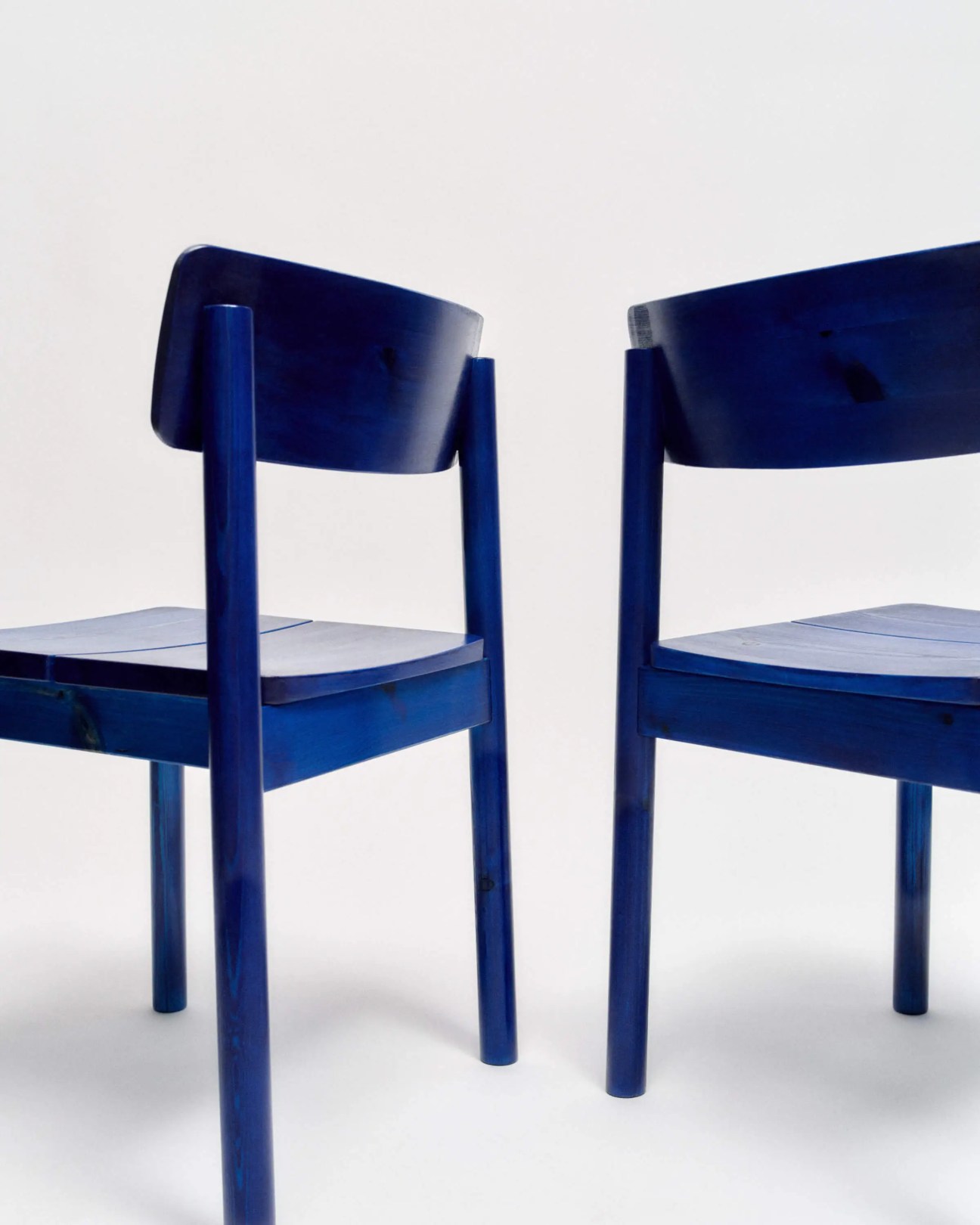
“We wanted to create something that could be kept at its highest value for as long as possible,” says Jenkins. “This means that it must be easy to repair – and durable, both physically and emotionally, by establishing an attachment between furniture and the consumer.” Trees absorb carbon as they grow, until they reach their capacity and begin to naturally deteriorate, releasing any captured carbon back into the atmosphere. When timber is felled at the optimum point of a tree’s growth cycle, the wood will then store the carbon for the rest of its life – providing that the furniture it forms doesn’t end up on the waste heap. The Minus Chair is pared-back, stackable and manufactured in Norway from local pine that can be given a colourful linseed-oil finish in deep blue or black. Prices start at nok6,295 (€530).
Though making furniture requires energy consumption during production, Jenkins is hopeful that the Minus Chair will pioneer a new environmental method by harvesting wood in its carbon-capture prime.
Friend-shoring
Trusted sources
Global
Where do you get your cobalt? If you’re a battery manufacturer keen to power the next generation of electric vehicles, you’ll want to know exactly where to source this critical mineral. In coming years, Western companies producing clean-energy products such as batteries and solar panels will look to their political allies for the provenance of these core ingredients, in a process that’s referred to as “friend-shoring” supply chains.
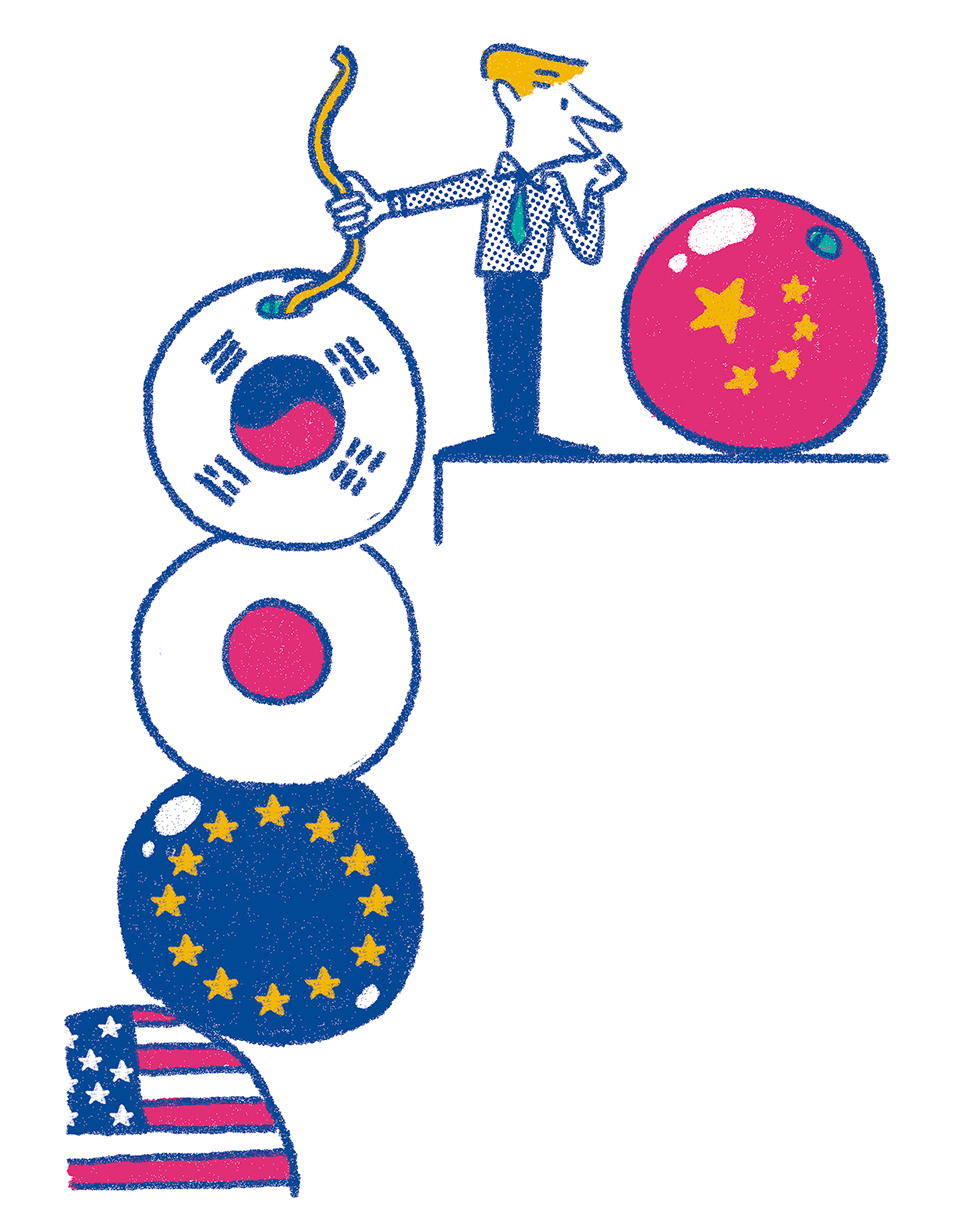
The term was first coined by US secretary of the treasury, Janet Yellen, in a speech in 2022. The concept is relatively simple. “Friend-shoring is moving supply chains to jurisdictions that do not pose an imminent national security threat,” says Emily Benson, director of the Washington-based Project on Trade and Technology at the Center for Strategic and International Studies.
The US even codified friend-shoring into national policy in Joe Biden’s 2022 climate bill, the Inflation Reduction Act. Later that year, the then UK foreign secretary Liz Truss proposed a “network of liberty” in trade relations, while EU countries including Germany have since embraced friend-shoring.
Global supplies of cobalt, for example, mostly come from the Democratic Republic of the Congo and China. These are two countries that Western powers would prefer not to rely on but sourcing alternatives is no simple matter. According to a Carnegie Endowment for International Peace study, by 2030, Western demand for cobalt will outstrip the supply from democratically aligned countries by nearly 10 to one. The figures are worse for graphite and tellurium.
Now is the time for countries to put the hard work of friend-shoring into practice. “Having laid the philosophical argument for friend-shoring, we need to start thinking about where to move the supply chains,” says Benson. That shift will create new opportunities for a number of middle-income countries, though they will need to make some changes in turn. Brazil, for example, has the advantages of natural resources and a large industrial base but must commit to tax reform to facilitate foreign investment. Bolivia has ample mineral reserves but the landlocked country needs to secure port space.
Meanwhile, more advanced economies hope to reap the gains of hi-tech friend-shoring for products such as semiconductors. The US technology and automotive industry will increasingly source such items from Japan, South Korea and the EU in addition to old stalwarts like Taiwan. These countries are astute about how strong bilateral relations can boost domestic economies.
“They are making the case that they have a very close security relationship with the US,” says Benson. “They can argue that they represent a safe space to move hi-tech production to.”
Buzzwords for 2024?
Indig-nation: A country teeing off about issues that are either imaginary or no one cares about, in order to get itself on the news.
Noluwdc: Pronounced “No-lew-duck”. This acronym of the chant beloved by fans of Millwall football club – “No One Likes Us, We Don’t Care” – is a diplomatic positioning that’s heavy on belligerence and persecution complex, light on inward reflection.
Lemur: A country that might seem like it would be an adorable adornment to any supranational bloc – EU, Nato – but which reveals itself once inside as an unruly troublemaker.
Kofola
Even better than the real thing?
Czechia
“To me, Kofola tastes like cola with mild herbal notes and a hint of spice,” says Veronika Polyakova from her perch at Bohemia House, a north London bar that serves Czech drinks and food.
Kofola is a survivor of the soft-power battles waged during the Cold War. In 1959, in a bid to find an alternative to Coca-Cola and Pepsi, the Czechoslovak Research Institute of Medicinal Plants in Prague developed a homegrown cola.

“Czechs’ love for Kofola is a blend of nostalgia and taste,” says Polyakova, assistant manager at Bohemia House, which serves Kofola on tap. The beverage is still sold across Czechia (and to the Czech diaspora) and is one of the few soft drinks that have withstood the encroachment of Western brands. As it didn’t try to imitate Coca-Cola too closely, it was able to compete when trade opened up after the fall of the Soviet Union. And since then the brand has prospered. “We have grown from a small Czech company into one of the largest producers of soft drinks in Central and Eastern Europe,” says Kofola Group ceo Jannis Samaras. The brand is now helping nearby countries nurture their own soft drinks. “In addition to the Czech Republic and Slovakia, we are developing traditional brands in Slovenia and Croatia,” says Samaras.
Back at Bohemia House, Polyakova pulls a pint of the deep brown, aromatic drink. “Czechs choose Kofola for its connection to their heritage and the sense of comfort it brings,” she says.
Private dog parks
Barks and recreation
USA
In August 2023 the US Chamber of Commerce published an article on its website about the economic significance of the pet humanisation trend. “A growing number of Americans think of their dog or cat as a member of the family,” the article notes. Naturally, these pets need exercise, which requires space. While many public parks in the US have dog runs where they can be safely let off their leash, these taxpayer-funded amenities aren’t enough for an increasing number of dog owners.

The market has found a solution: private dog parks are expanding across the US. The most advanced are in large cities, where a scarcity of green space is combined with a concentration of high-income dog owners.
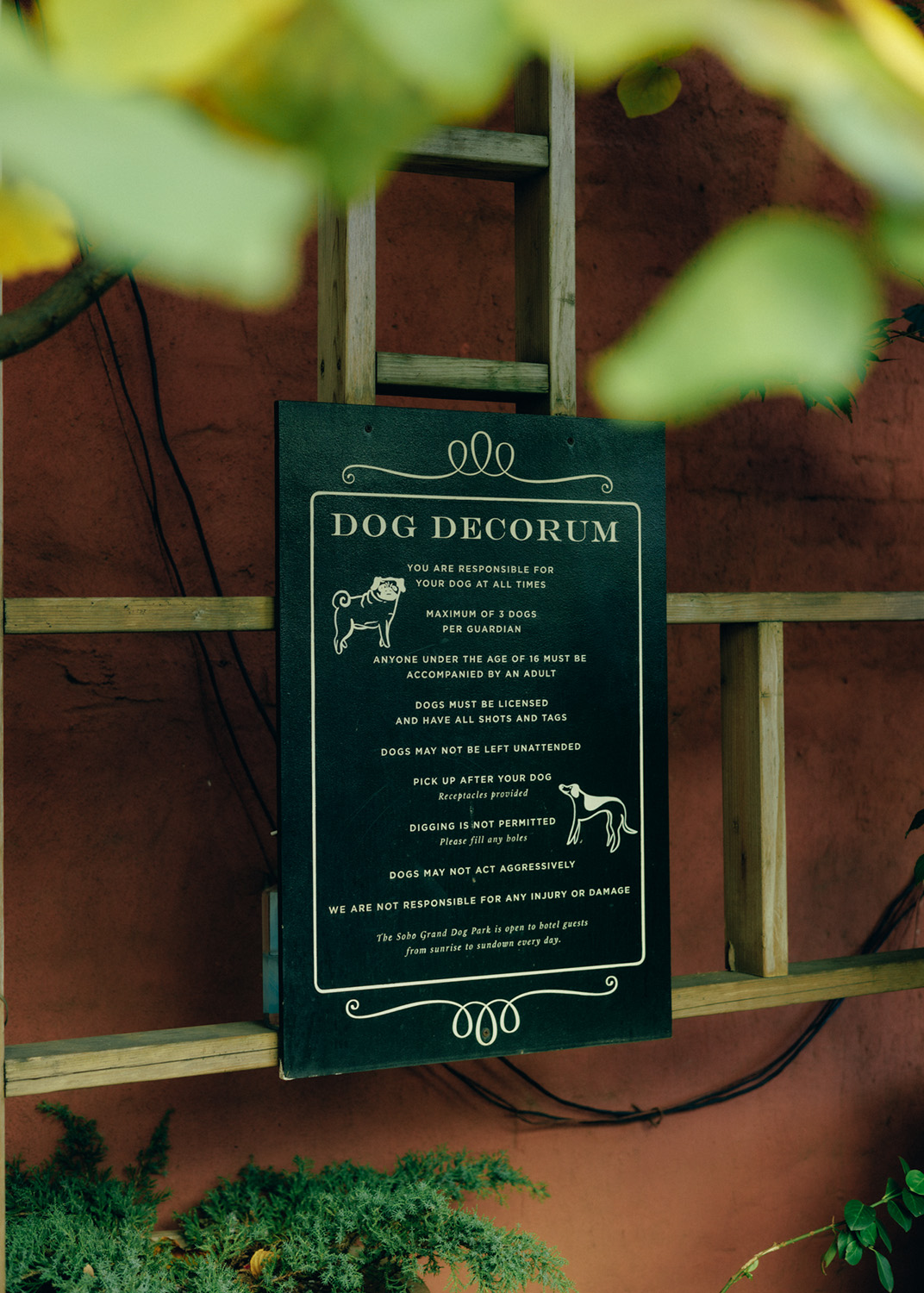
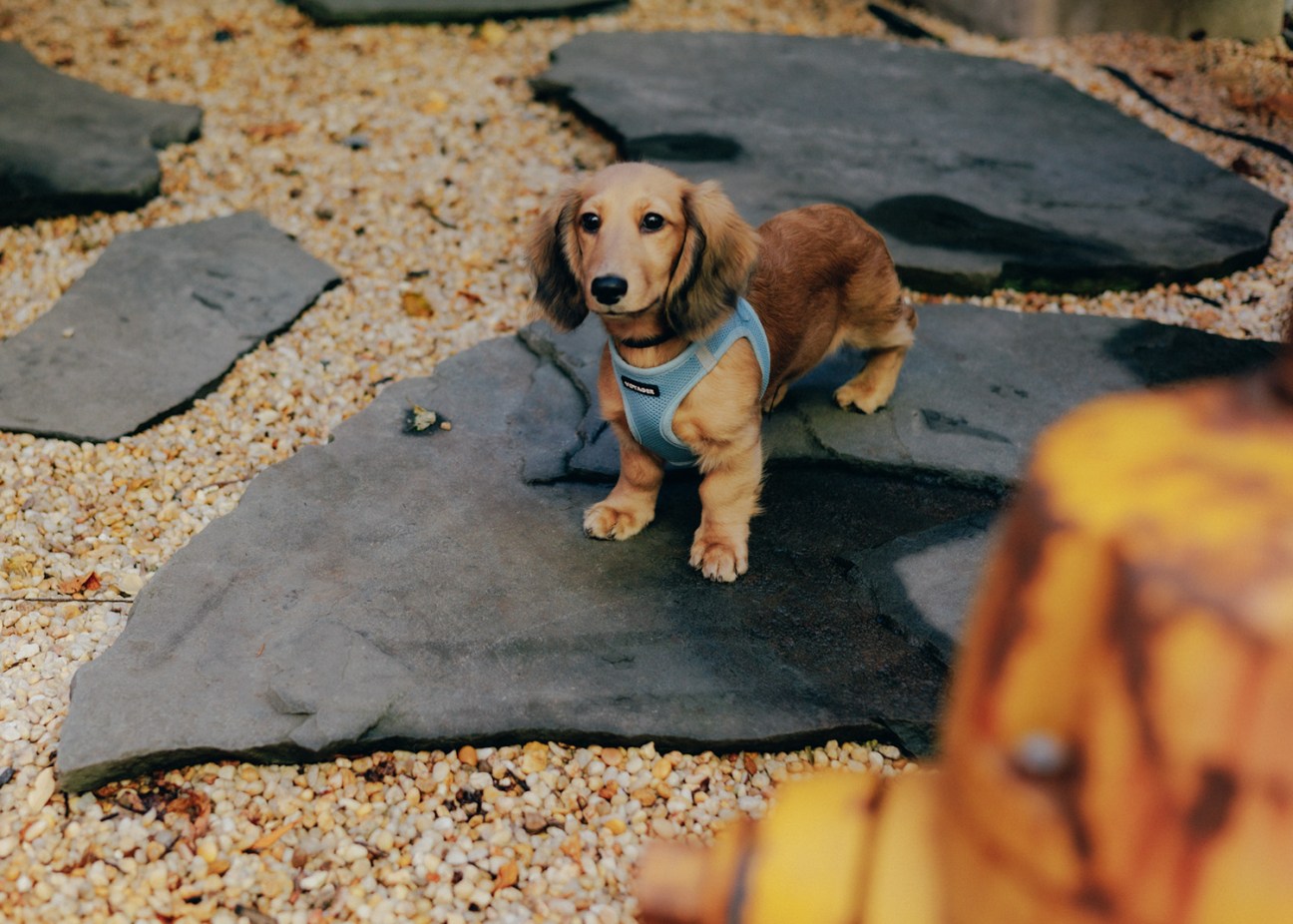
In New York, the bar for luxury dog runs is set by the Soho Grand Dog Park, part of the Soho Grand Hotel in Lower Manhattan. “Each area has different ‘discovery moments’ for the dogs to engage and play,” says Briana Stanley, Vice-President and Creative Director at GrandLife Hotels. “There are big boulders to jump on, a dog bath to cool off in during summer, and circular benches to run around.”
The dog park was originally intended for hotel guests travelling with pets but was opened to residents due to popular demand. It can be enjoyed by non-guests for a $1,700 (€1,600) annual fee.
Meanwhile, on the West Coast, dog ppl bills itself as “Los Angeles’s first canine social club”. The park has specially engineered grass, obstacles and hydro play stations for the dogs, as well as sustainably sourced coffee and wellness shots for the humans. All this for $120 (€113) a month, provided that all dogs are up to date on vaccinations and, dauntingly, can “pass a social”.
How to move a river
Changing the channel
Canada
Snaking across Toronto’s once-industrial eastern skyline are the swooping silhouettes of four sleek new bridges. Designed by UK-based practices Entuitive, Grimshaw and Schlaich Bergermann Partner, and assembled in Nova Scotia on Canada’s Atlantic coast, they are, for the time being, the most visible fixtures of one of the largest urban-development projects in North America: the regeneration of Toronto’s port lands.
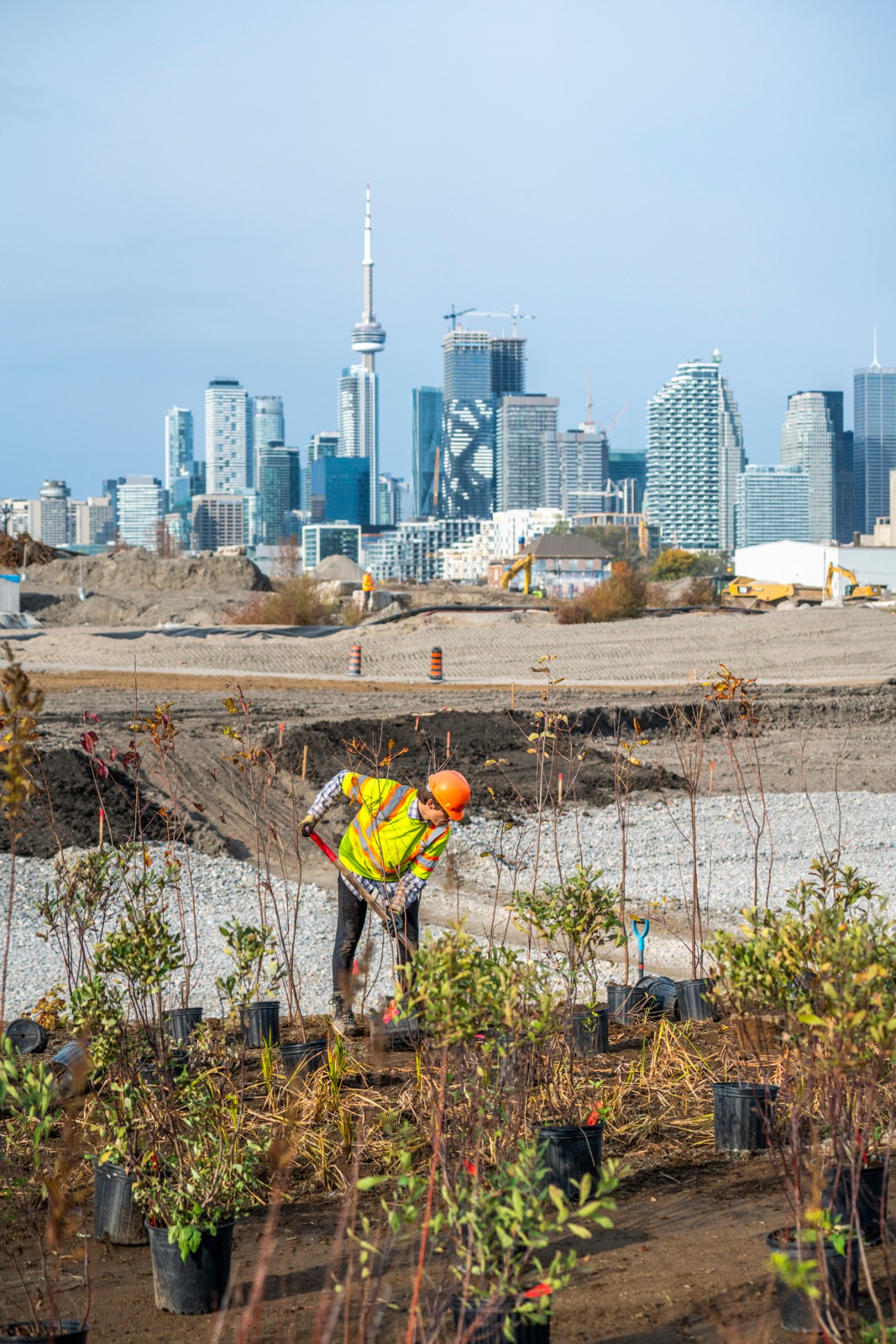
Once work is complete, the area will include 29 hectares of public parkland, 13 hectares of habitat for wildlife, new roads, bus routes and housing for up to 25,000 people. Its centrepiece will be the riverbed spanned by the new bridges. The area is currently dry but construction is nearing completion on one of the most ambitious renaturalisation projects ever undertaken in a city of Toronto’s size: the rerouting of the mouth of the Don river, one of the city’s major natural waterways.
“We’re taking the river from something that’s artificial and isn’t really functioning as a healthy ecological system, and putting it back, as close as we can, to its natural condition – to allow it to do what it naturally wants to do,” says Mira Shenker, director of communications and public engagement at Waterfront Toronto, the tri-government body that’s undertaking the redevelopment of the port lands.

The lower Don river, which runs south from Toronto’s network of ravines into Lake Ontario, was for decades the way that industries dotted along its banks – abattoirs, tanneries and distilleries – flushed away their waste. To that end, it was rerouted from its natural course to enhance its function as a channel for industrial effluent into the lake. By 1969 the river had become so polluted that some organisations declared it dead.
Decades later, Waterfront Toronto’s project is allowing populations of bald eagle and mink to return to stretches of the river’s renaturalised banks. Eventually residents will be able to boat, paddle and fish in the water. “What has been created is a natural way for the river to move and to carry floodwater, and to stop it from running off into the surrounding neighbourhoods,” says Shenker.
Constructing natural flood protection infrastructure of such complexity has not been attempted before, she says, and other cities prone to harsh or unpredictable weather will closely watch what happens in 2024, when the river’s renaturalised course is flooded and the Don, once again, finds its flow.
Alexandre Sap, Rupture
Sales of the unexpected
France
When we meet Alexandre Sap, founder of independent retail venture Rupture, he’s in his emporium in Hôtel Lutetia on Paris’s Rive Gauche. Inside this cabinet of curiosities, Sap can often be found playing Serge Gainsbourg records or hosting book launches and art exhibitions.
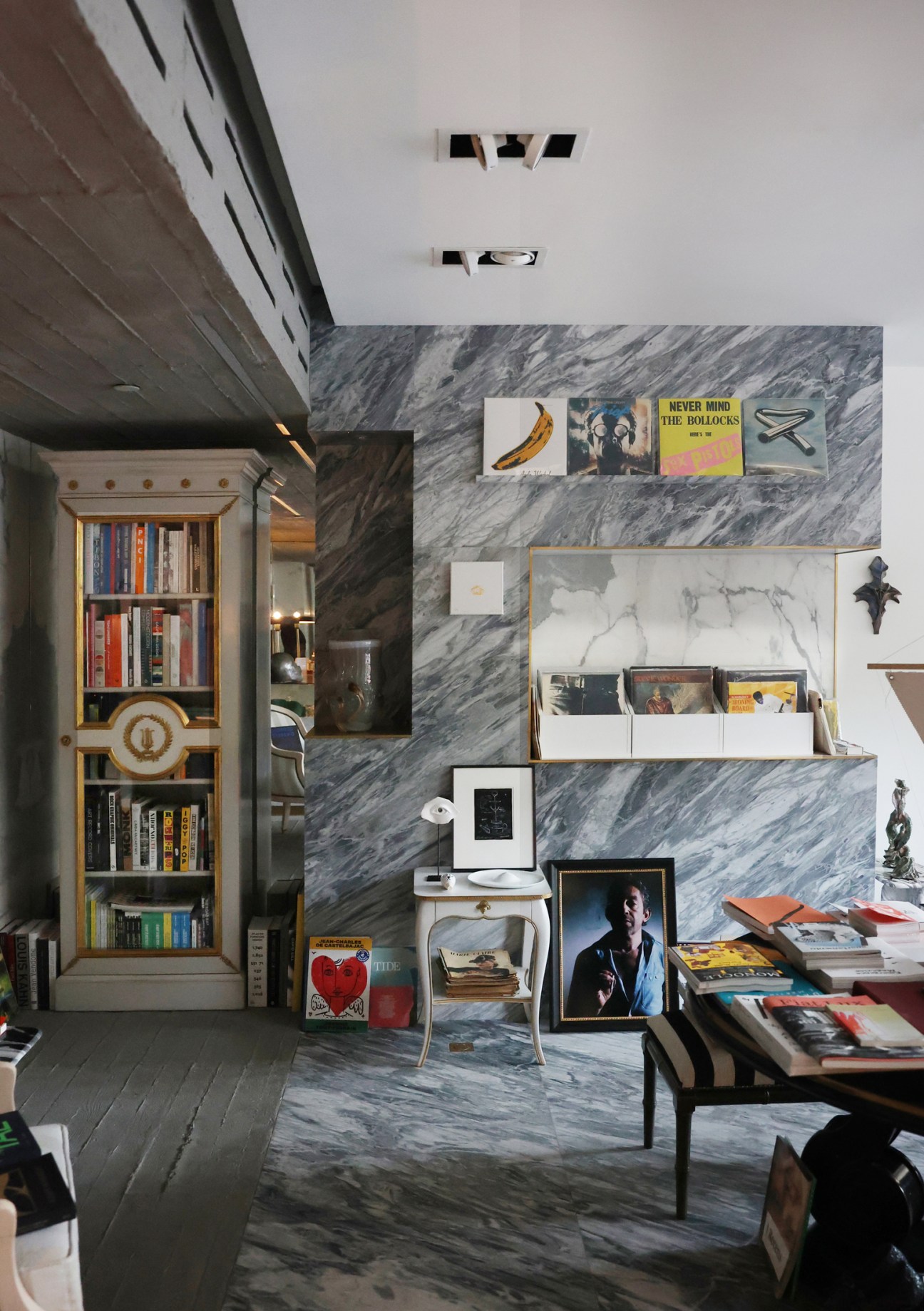
Rupture’s Parisian outpost follows shops in Tangier, Venice and Marseille, along with the original café-cum-vinyl-shop on Rue du Vertbois. For 2024, Sap has set his sights on opening in Athens. “I started Rupture in my forties out of a need for reinvention,” he says. “Now I want to see if I can contribute to society through beauty.”
Sap is noticing a fatigue with big chains that offer what is already popular or online marketplaces that cater to algorithms. He hopes that people who visit his shops will find books that they had never heard of. His hybrid approach to business also pivots around his marketing agency, Méditerranée, which creates cultural bridges between the cities that Rupture operates in. “It’s too easy to fall back on the same people and projects,” he says. “So that’s my forecast for 2024: new discoveries in chic places.”
Q&A: Tosin Oshinowo
Built-in solutions
Lagos
Tosin Oshinowo is a Lagos-based architect and designer whose work spans commercial projects, such as the first Adidas flagship in West Africa, to rebuilding a community destroyed by Boko Haram. Here she shares her thoughts on designing for different purposes and championing solutions from the Global South as curator of the most recent Sharjah Architecture Triennial.

What initial conversations do you have when approaching a new project?
It’s about evoking an experience. When you’re working on a private home, for example, there is a lot of input from the client. It’s a delicate balance as an architect between pushing your agenda (in terms of the spaces that you want to create) and meeting your clients’ needs. As a practice, we’re very particular about a lot of natural light and the need for privacy and security. In Nigeria, security is a very big concern for a lot of people. It’s also very important to read what clients tell you they want but also what they don’t tell you. Architects can end up being like psychologists.
Your clients span a range of socio-demographic groups. How did you approach the commission of building a new community for people displaced by Boko Haram?
By always thinking about the end user and understanding people in a cultural context. I’m from Lagos, which is in the south of the country and predominantly Christian. This project is in Borno in the northeast of the country, which is predominantly Muslim. The ethnic group there is Kanuri, I’m Yoruba. I spent a lot of time speaking with people, visiting the city and understanding the Kanuri culture. I asked the chief what colour he wanted the buildings, which he thought was an odd question because these people have been displaced for more than 10 years and they just want a roof. But he mentioned Abuja brown, a colour that can be seen on traditional walls in the area. We decided that we would incorporate it in whatever way we could. By experimenting with mixing cement and local soil, we were able to recreate this very quickly, in a modern style.
What were your priorities as curator of the latest Sharjah Architecture Triennale?
To celebrate the innovative design and architecture solutions that exist within the Global South – and make sure to bring them to the foreground. We already have solutions that could be used to address some of our most challenging problems to do with climate change. If we think about the way that we use our resources and work within the limitations of what is available, we could address where we find ourselves today.
Kenoteq
New kid on the blocks
UK
The construction industry accounts for 40 per cent of carbon emissions in the UK but Scottish start-up Kenoteq, which makes what it believes to be the world’s most sustainable brick, is intent on changing that. Co-created by Brazil-born engineer Gabriela Medero, the K-Briq is made mainly from construction and demolition waste, doesn’t need to be fired at high temperature, can be recycled multiple times and is sold at comparable cost to a traditional clay model. Additionally, most of the bricks used for construction in Scotland are imported, so Kenoteq’s local production also cuts emissions.

Though Medero is still waiting for British building certification before the factory can be cranked up to full capacity, the K-Briq can already be spotted in restaurants around Edinburgh.
It is likely to be used more widely once the certification is approved – but most people won’t be able to tell. “Normally when people hold the K-Briq, they look at me and say, ‘But it’s just a brick!’” says Medero. “It’s just what I wanted. It took a lot of science and technology to make it look, behave and sound like a brick – and that’s the magic.”
Yves Béhar’s Telo Truck
Powering ahead
USA
When Jason Marks and Forrest North, co-founders of new California-based electric-vehicle manufacturer Telo, set their sights on reinterpreting the classic US pick-up truck, they tapped Swiss designer Yves Béhar (pictured, on right, with Marks and North) to give it a distinctive look that could match the vehicle’s technical credentials. “I used to design cars when I was in school at the ArtCenter College of Design in Pasadena,” says Béhar, who founded multidisciplinary design studio Fuseproject. “To do that now and present it to the world, without replicating the same shape and functionality of what already exists, is very exciting.”
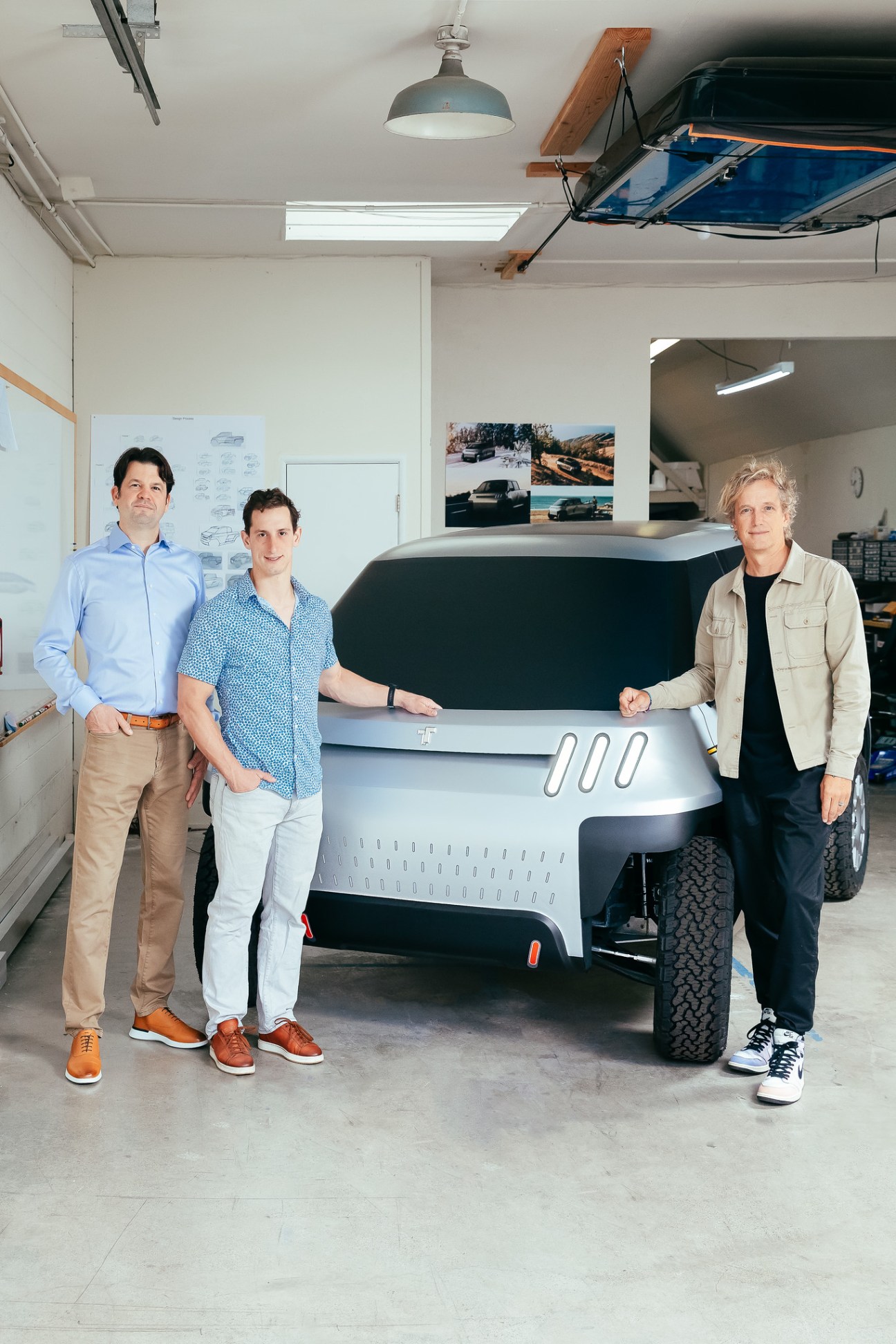
The result is a compact four-door truck that retails for $50,000 (€47,000) and measures just over 380cm in length – the same as a three-door Mini Cooper. The interior is roomy enough to fit five passengers and the truck bed can be expanded into the back seat through a modular mid-partition. The EV is currently available for pre-order, with plans to deliver the first models to customers in 2025 and upscale production in 2026. Manufacturing will take place in the US.
The vehicle has been designed with functionality in mind, and Telo and Béhar hope to appeal to urban and suburban drivers looking to go electric – and maybe even those not intending to. “Many of our pre-orders for the Telo truck came from Texas, believe it or not,” says Béhar. Not exactly the traditional heartland of anti-oil sentiment.
The long, sloping front-end of the Telo gives it a distinctive visual calling card while the battery packs are tightly stacked and embedded within the chassis for a roomier crew cab. Its range clocks in at more than 560km with a 500hp engine, with top speeds of 200km/h and the ability to go from zero to 100km in four seconds. It has a 20-minute charging speed that takes the battery from 20 per cent capacity to 80 per cent.
“Telo developed a unique, high-density way to assemble batteries to gain room,” says Béhar. “The design is informed by functionality but my priority is always to create a strong identity. From there, the design is based on the unique car layout and our ability to break from existing platforms as a third-generation EV company.”
The Telo truck also meets a need for smaller pick-up trucks from city dwellers who want to negotiate smaller roads and garages. “The crazy statistic is that light-duty trucks represent 10 per cent of all carbon emissions in the US,” says Béhar. “So there’s a strategic opportunity to make a difference by introducing an electric version of one of the best-selling vehicle types in the US. This is when design can accelerate the adoption of new ideas.”
Rádio Novelo
Social network
Brazil
Brazil loves its soap operas but recently the country has found itself gripped by a new kind of narrative format: audio. It is now the world’s third-largest consumer of podcasts, while listener numbers across many platforms are on the rise.

Leading the charge is Rádio Novelo. Founded in Rio de Janeiro in 2019, the production company is the country’s largest producer of narrative podcasts. In only four years, it has produced deep dives into such subjects as former president Jair Bolsonaro’s rise to power, the murder of a socialite in the 1970s (see panel) and Brazil’s flawed judicial system – all stories that provide insight into the nature and fabric of Brazilian society.
According to the Rádio Novelo team, these investigations serve a social purpose. “I don’t consider Praia dos Ossos to be a true-crime story,” says company president Branca Vianna. “Everybody knows what happened. But what we were interested in was society’s reaction to the murder: how the press reacted, how the judicial system and the feminist movement reacted. We wanted to look into the country’s relationship with prisons and so on.”
Rádio Novelo has regularly produced audio content for Revisita Piauí magazine (Brazil’s answer to The New Yorker), cultural project Japan House São Paulo and the Igarapé think-tank but is now concentrating on its own content. “Little by little, we are leaving that model behind to focus on our own podcasts, which we see as our core competency,” says Vianna.
Telling stories in a creative, unexpected way will always be Rádio Novelo’s main priority. According to Vianna, this is also what enabled her start-up to grow so quickly. “What we really want for the future is to consolidate ourselves in the industry,” she says. “We’re still a really young business.” Looking ahead, Vianna’s strategy is less about quantity and more about quality. “It’s not really about growth,” she says. “Nobody here wants to triple the number of podcasts we make or double the amount of staff. All we want is to help our team to stay creative so that we can continue producing what we think is important; what we think will enrich conversation and debate here in Brazil.”
Rádio Novelo’s top podcasts
Rádio Novelo Apresenta
Every Thursday, this series highlights little-known stories from across Brazil.
Praia dos Ossos
This podcast has racked up more than four million downloads since it was released in 2020. It follows the story of Ângela Diniz, a socialite who was murdered at her beach house in the 1970s and how society began to view the crime’s (later convicted) suspect, her boyfriend Doca Street, as the victim.
Tempo Quente
At one point, Brazil seemed as though it would become a leading voice on climate issues. This podcast, released in 2022, explains why and how, over the years, this stopped being the case.


